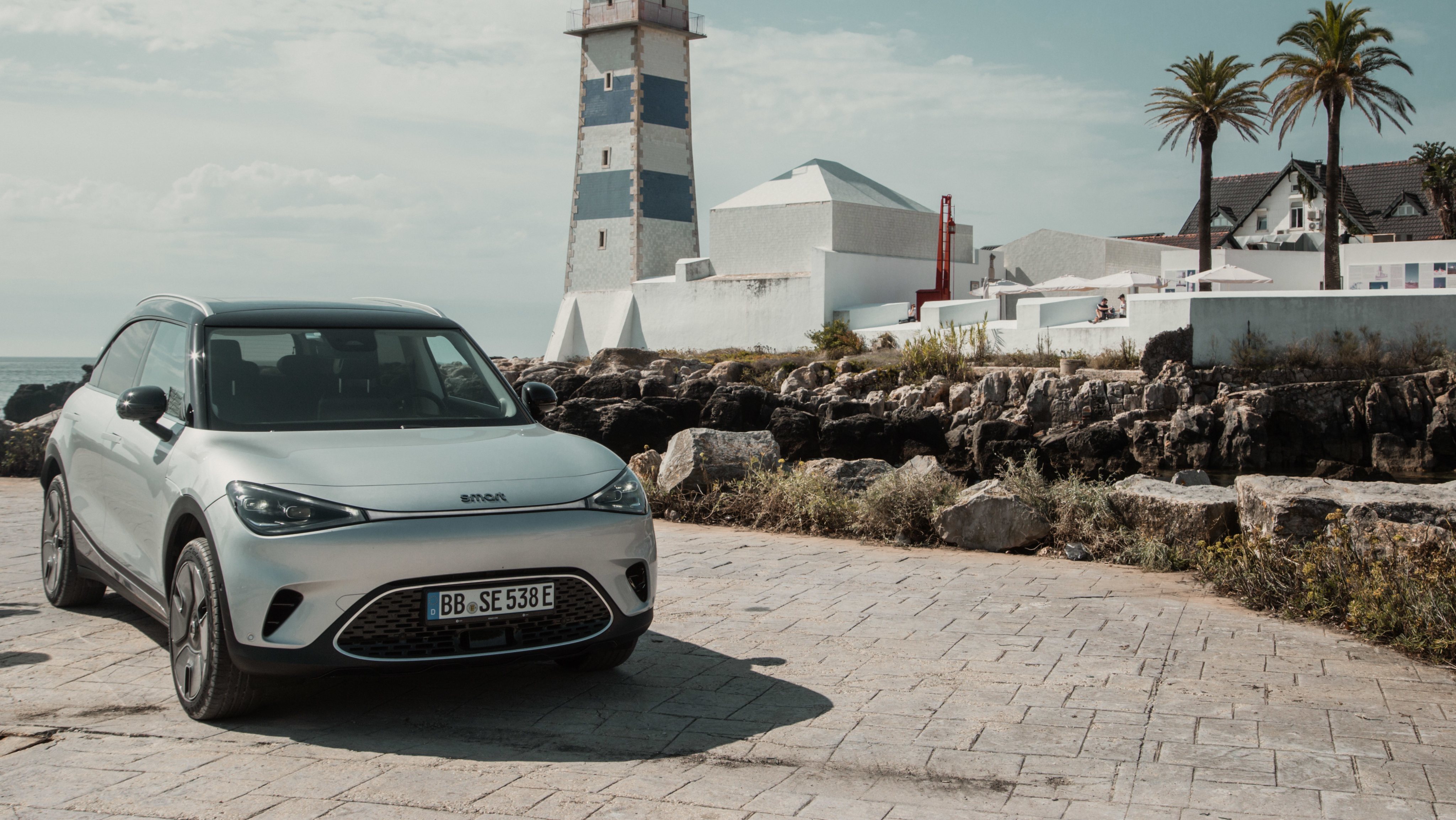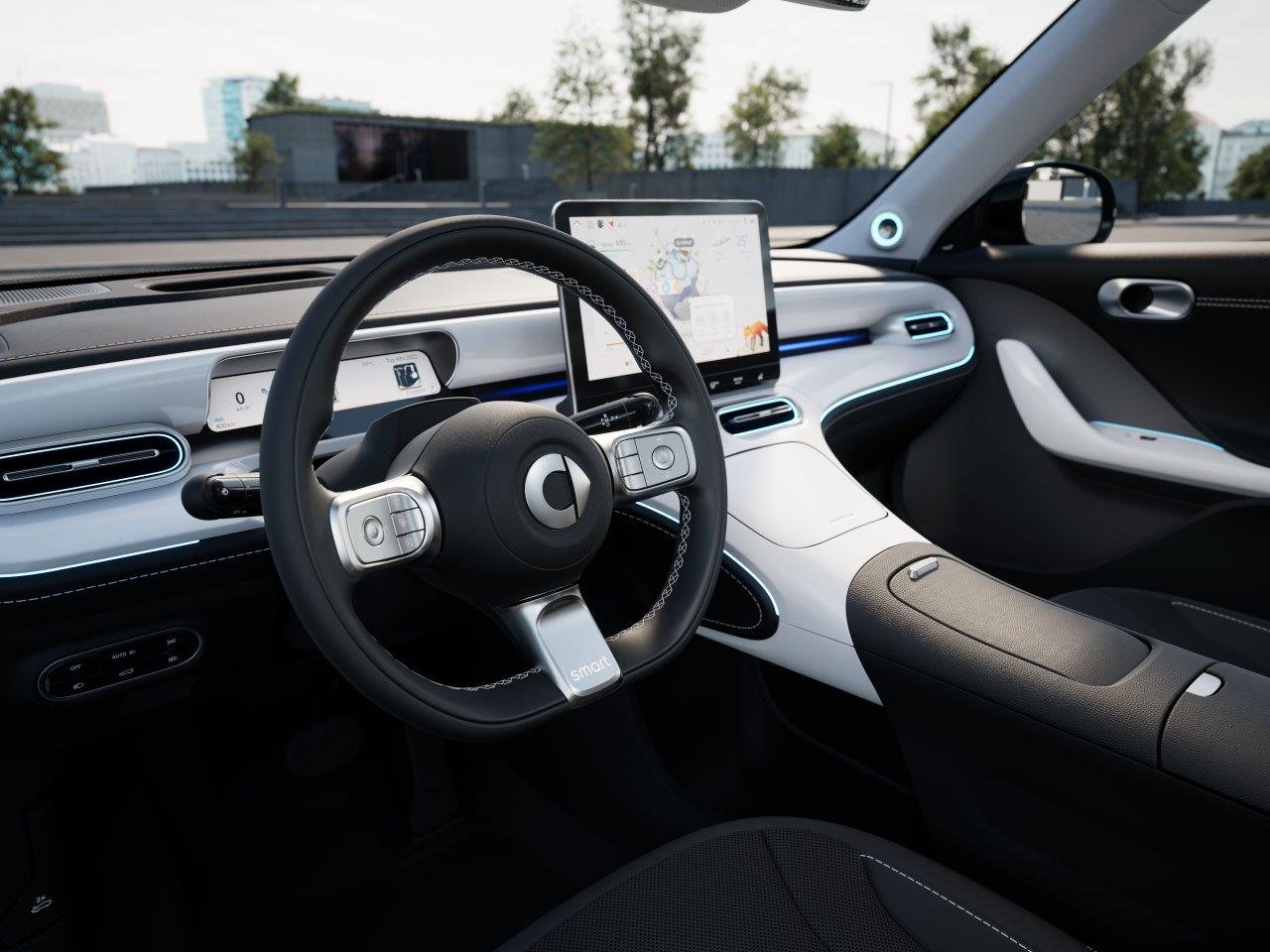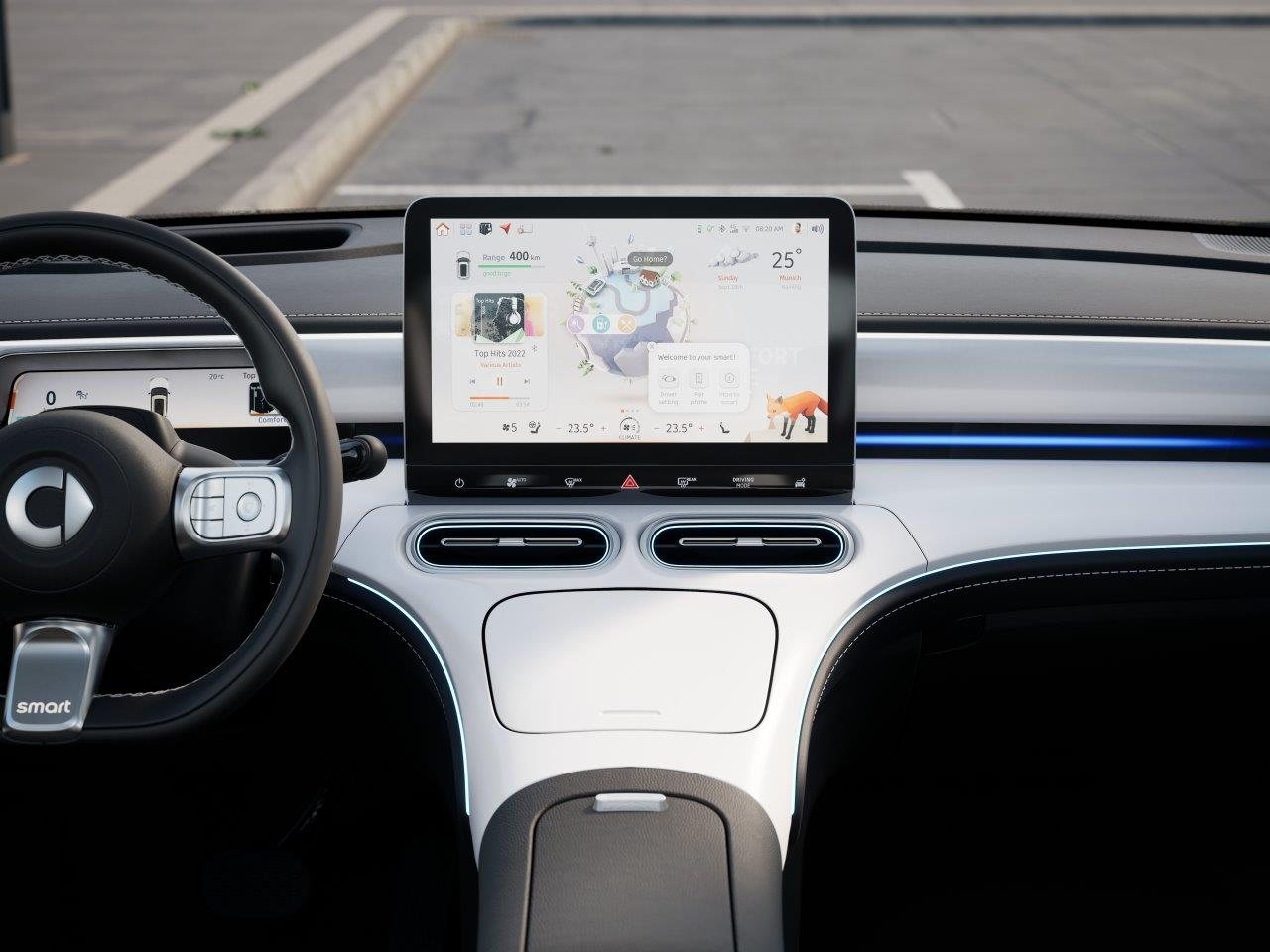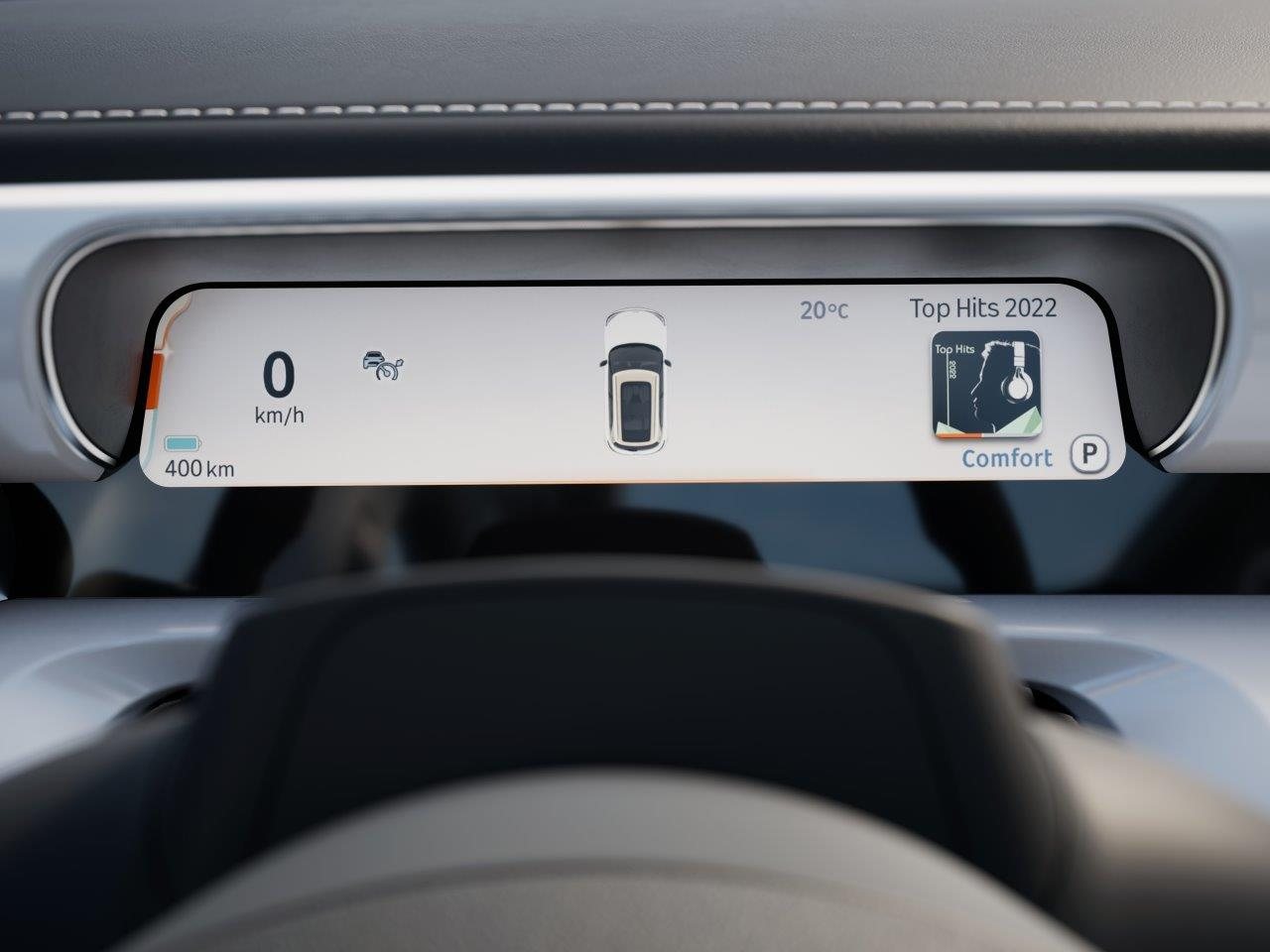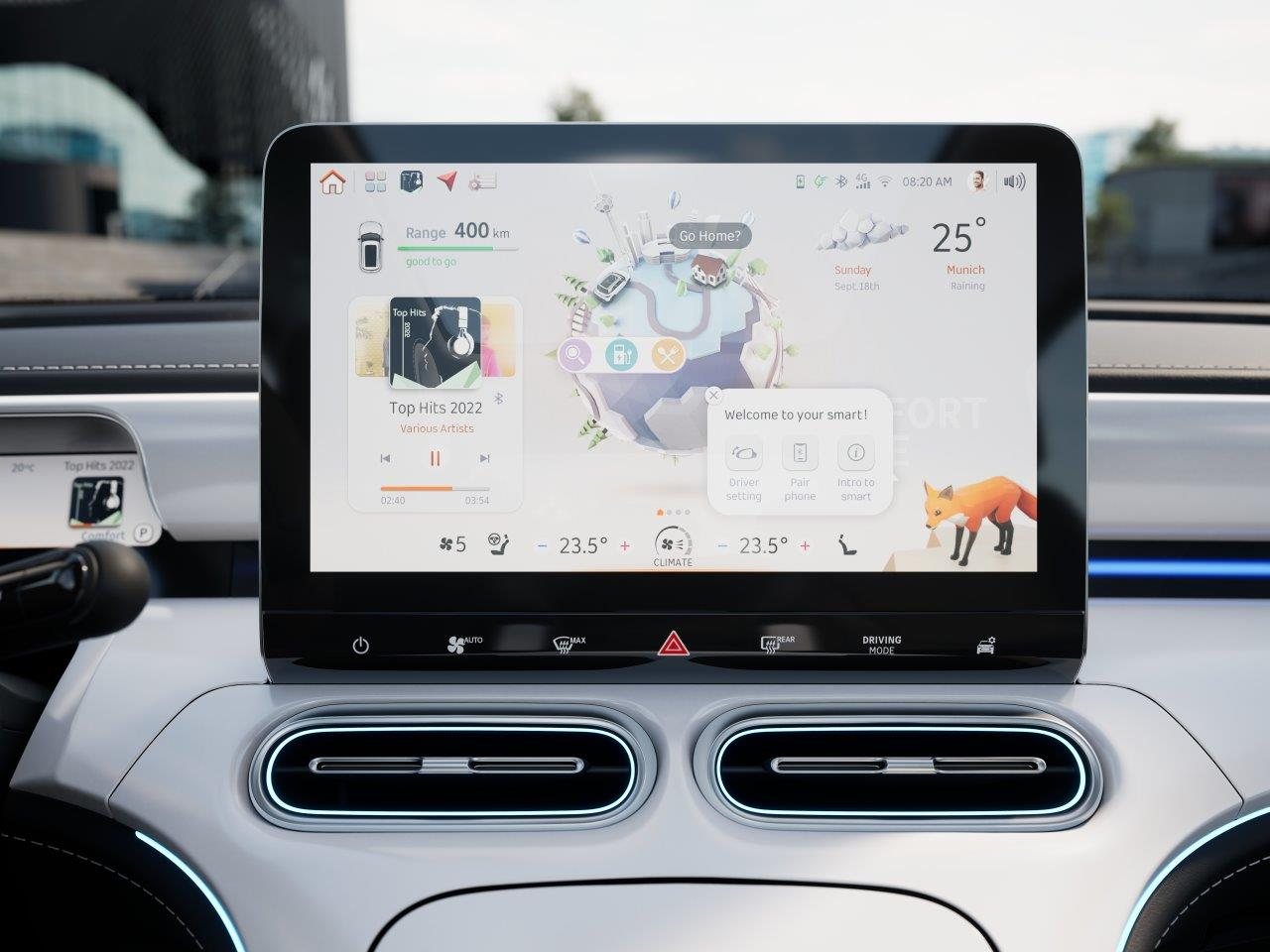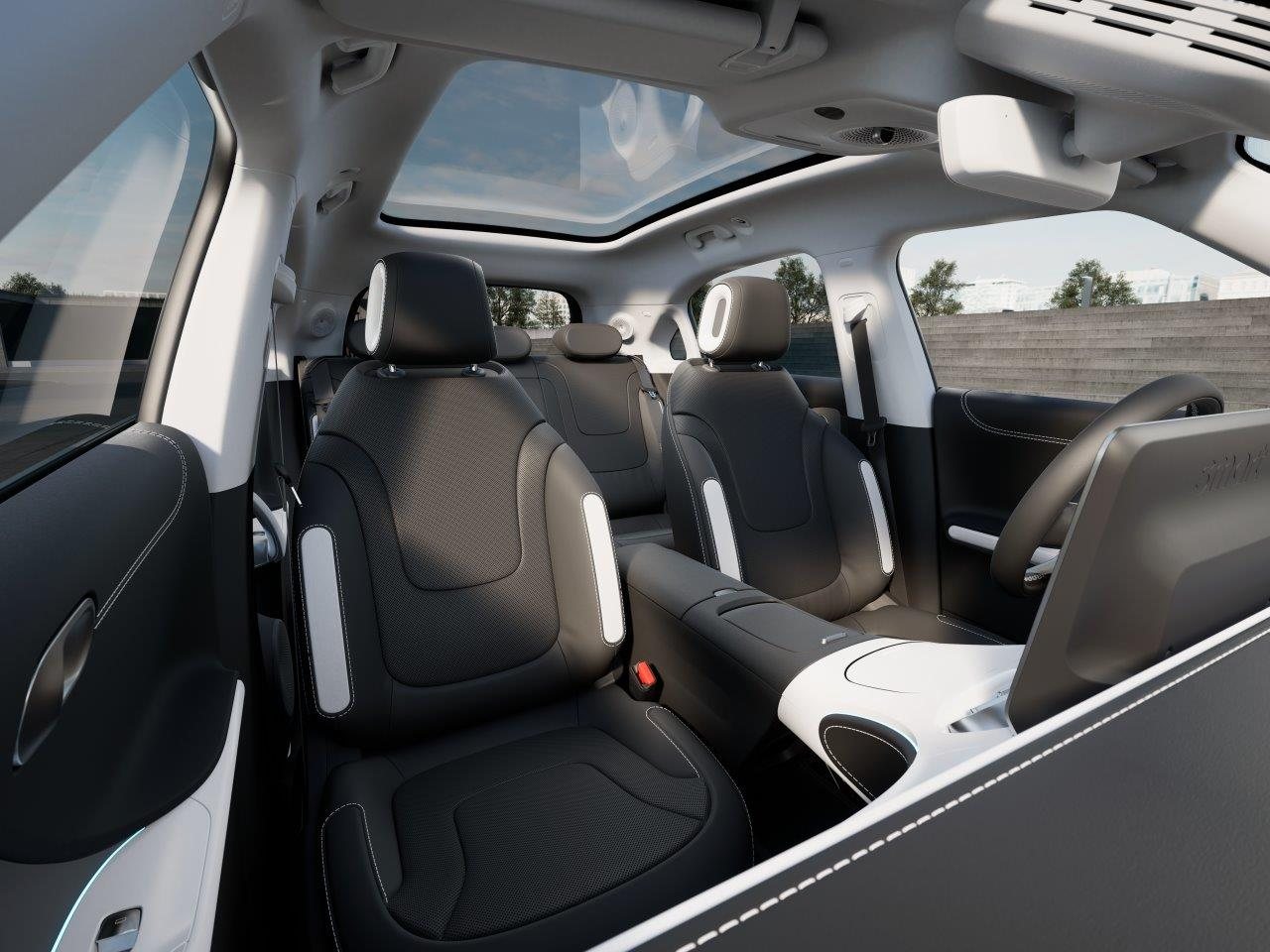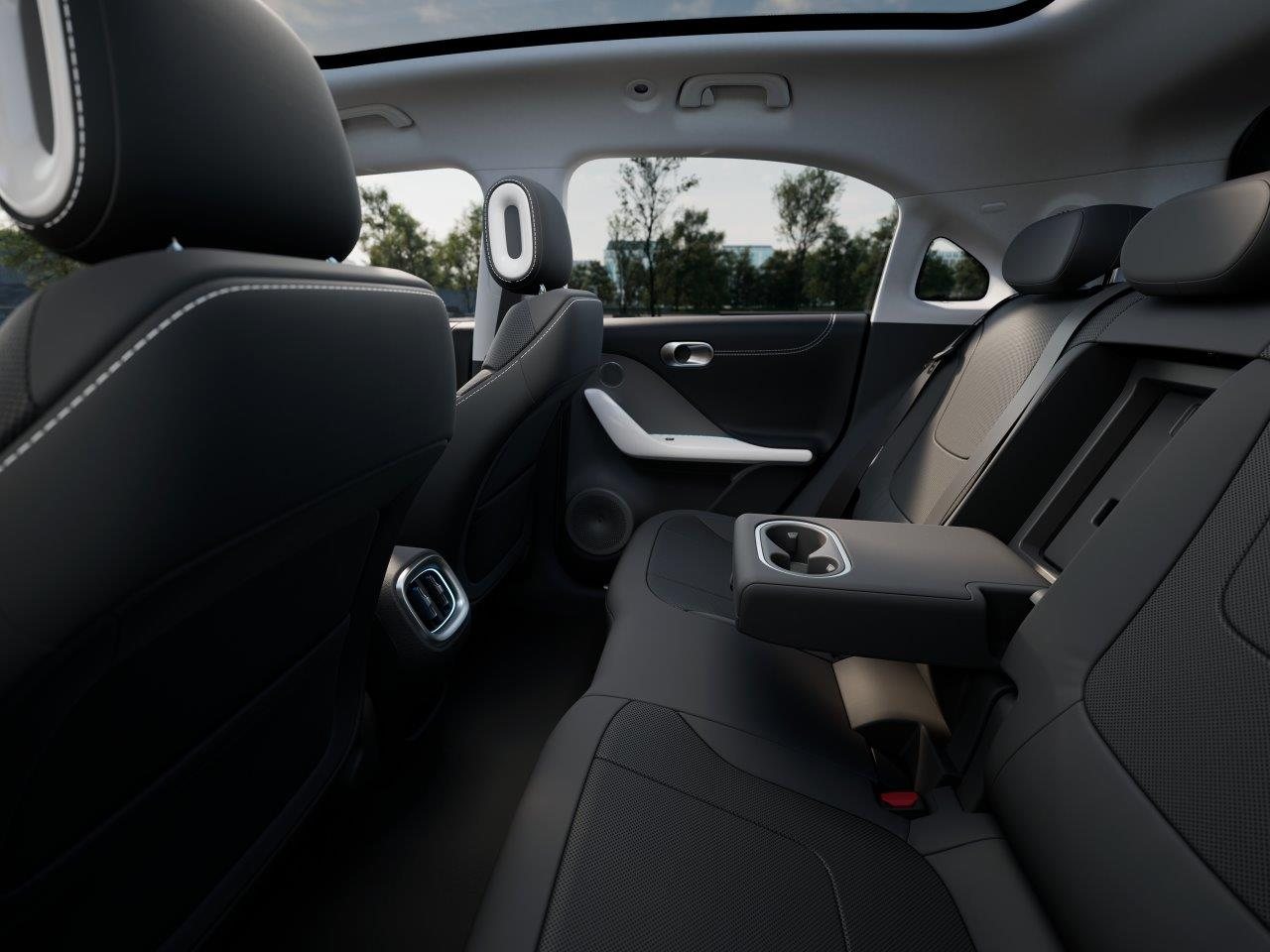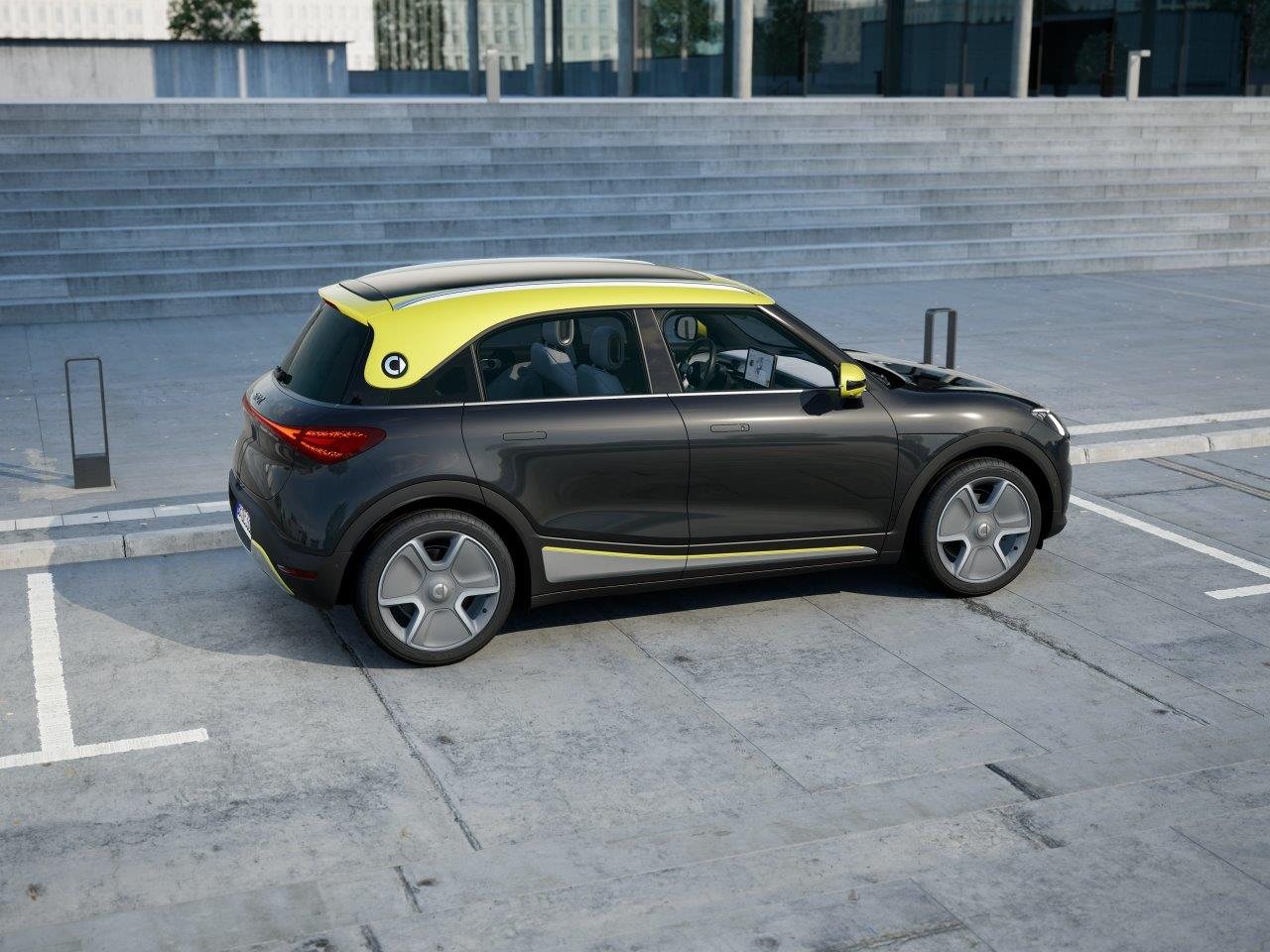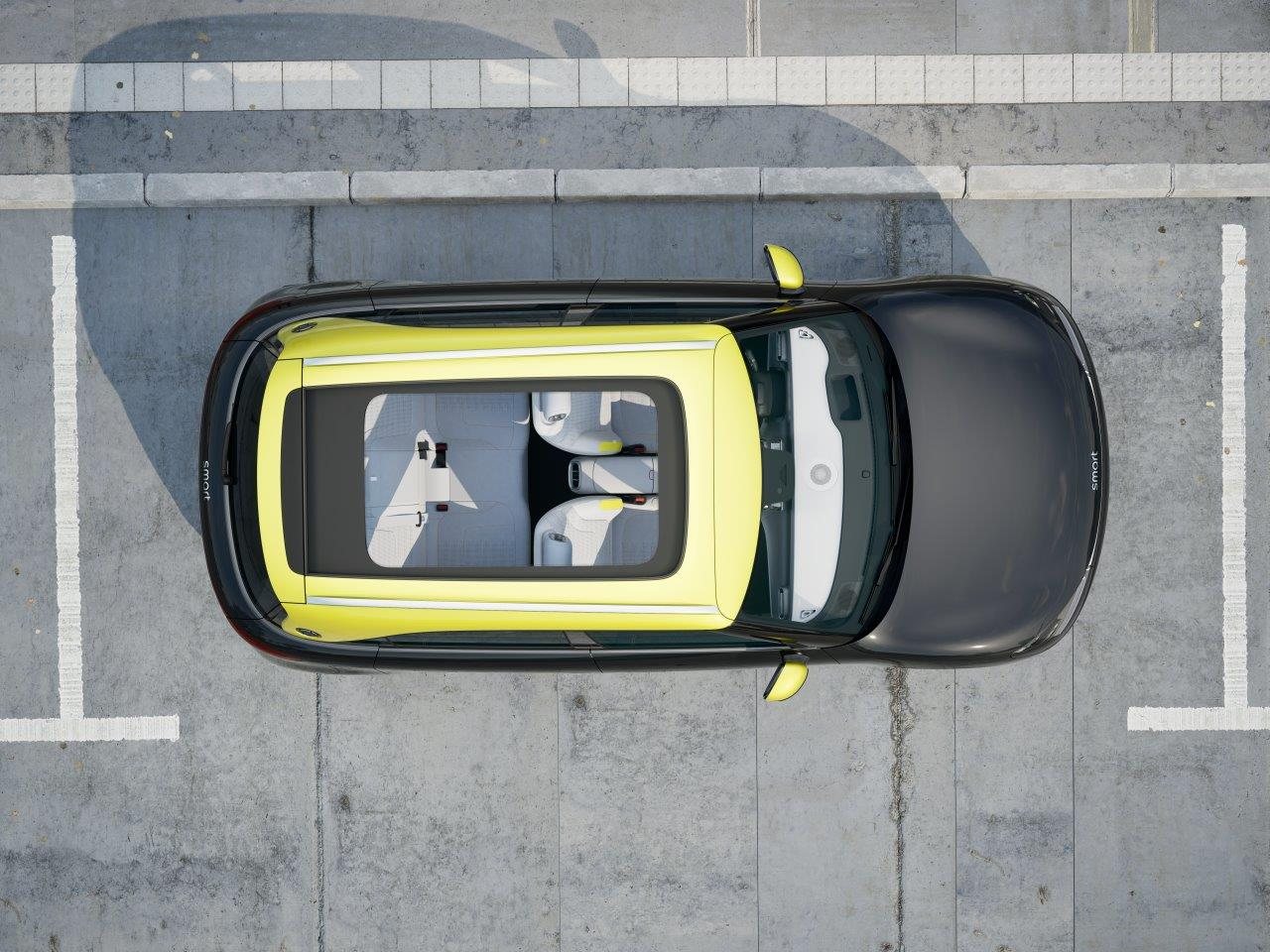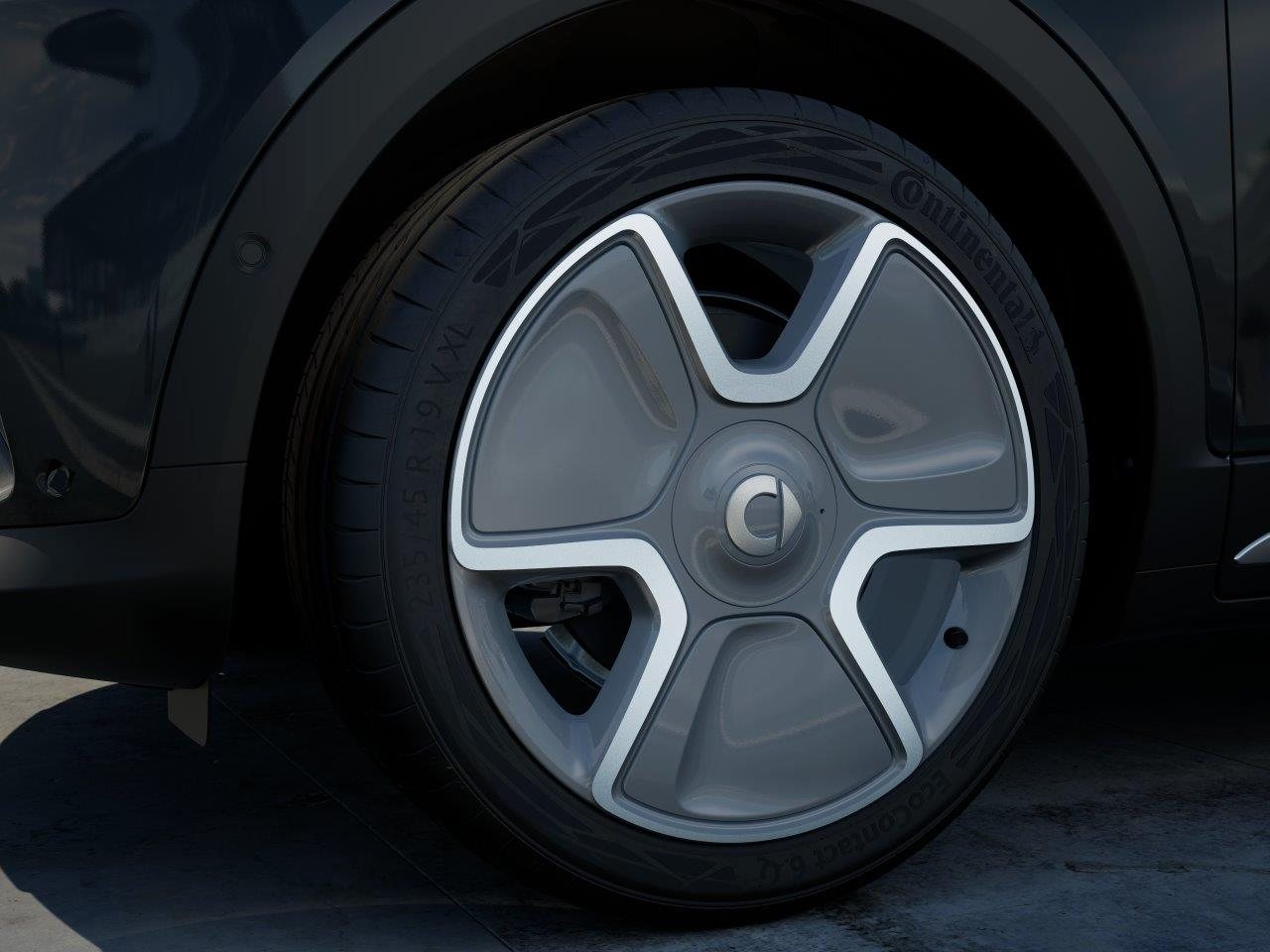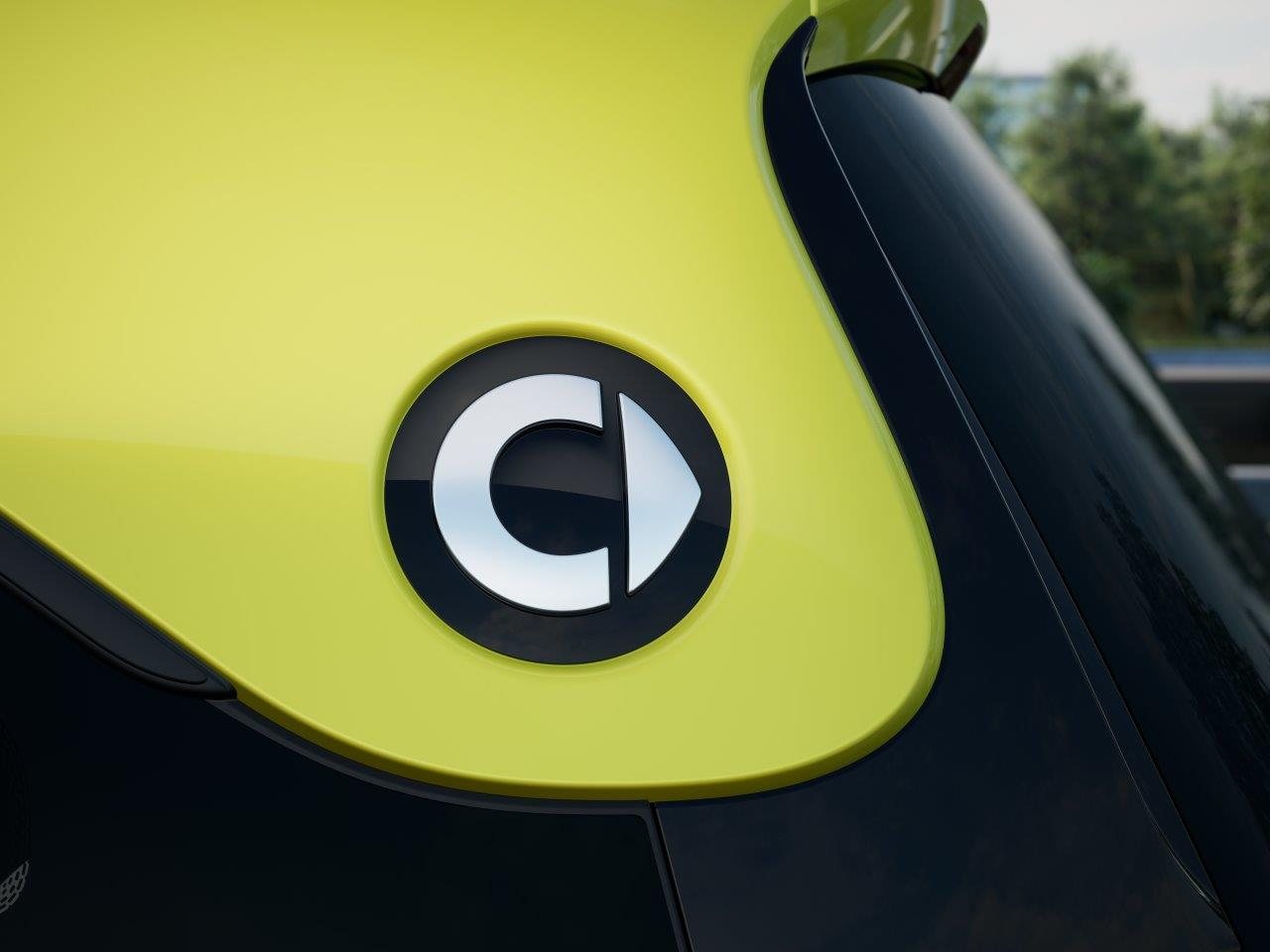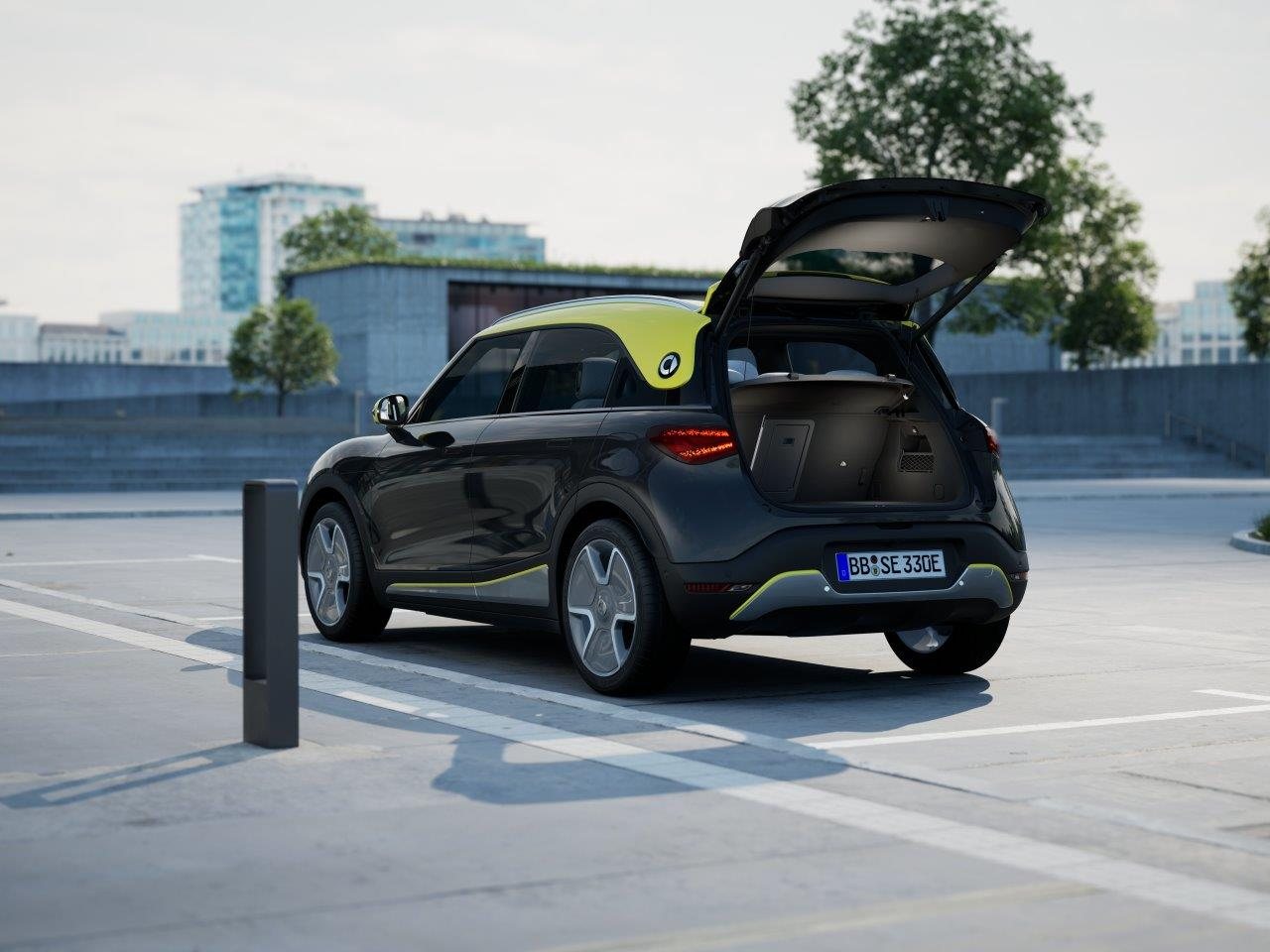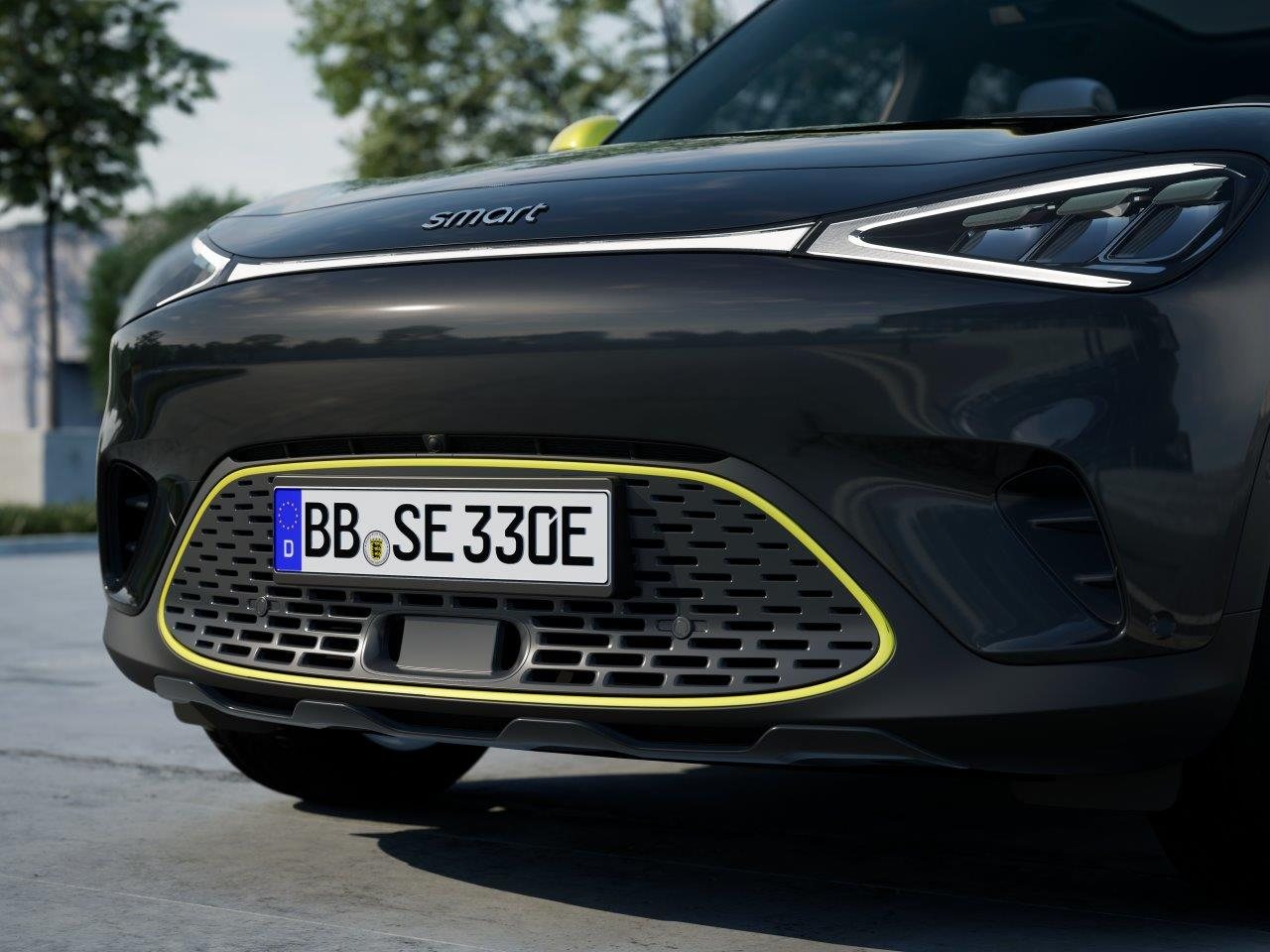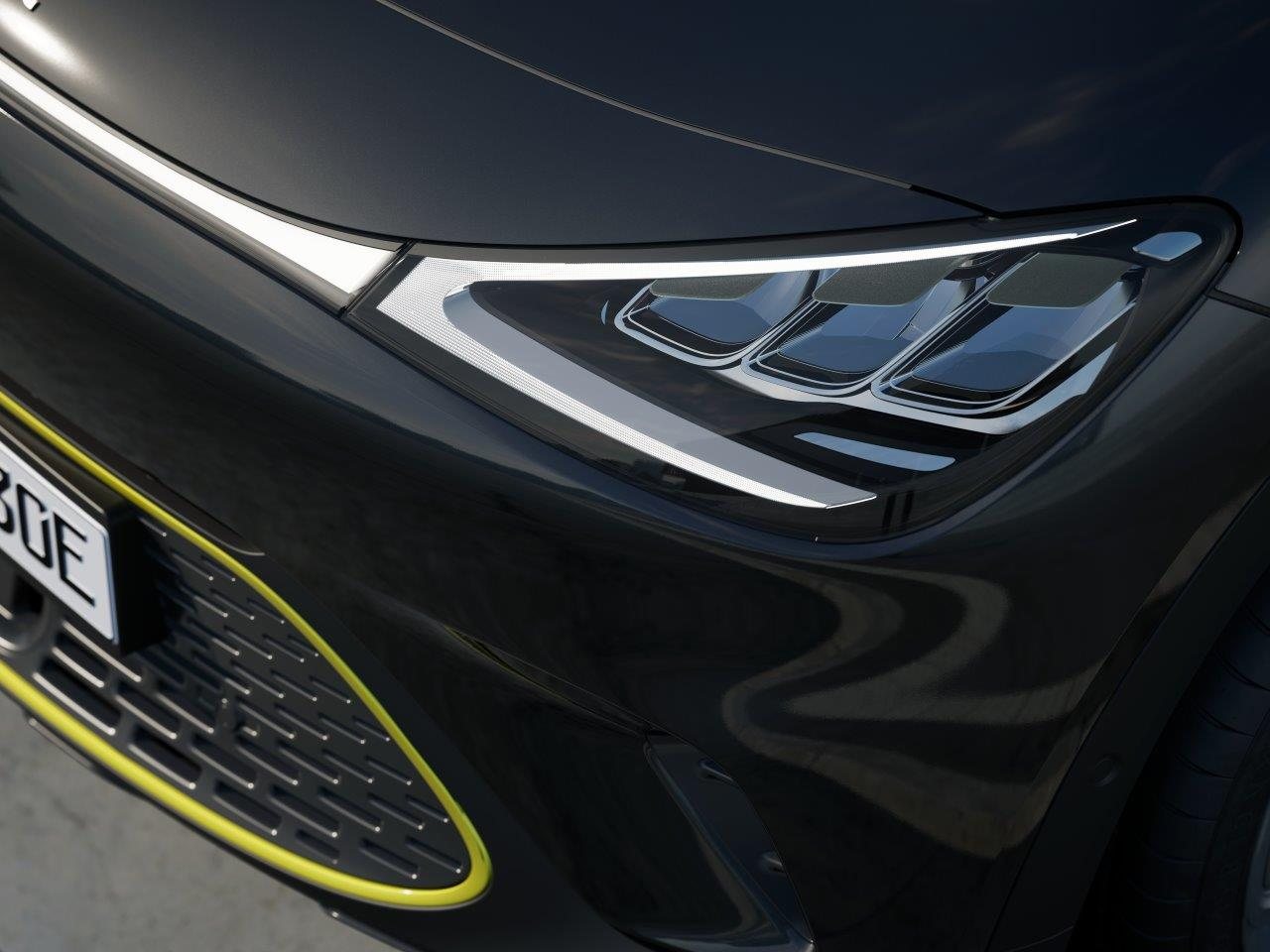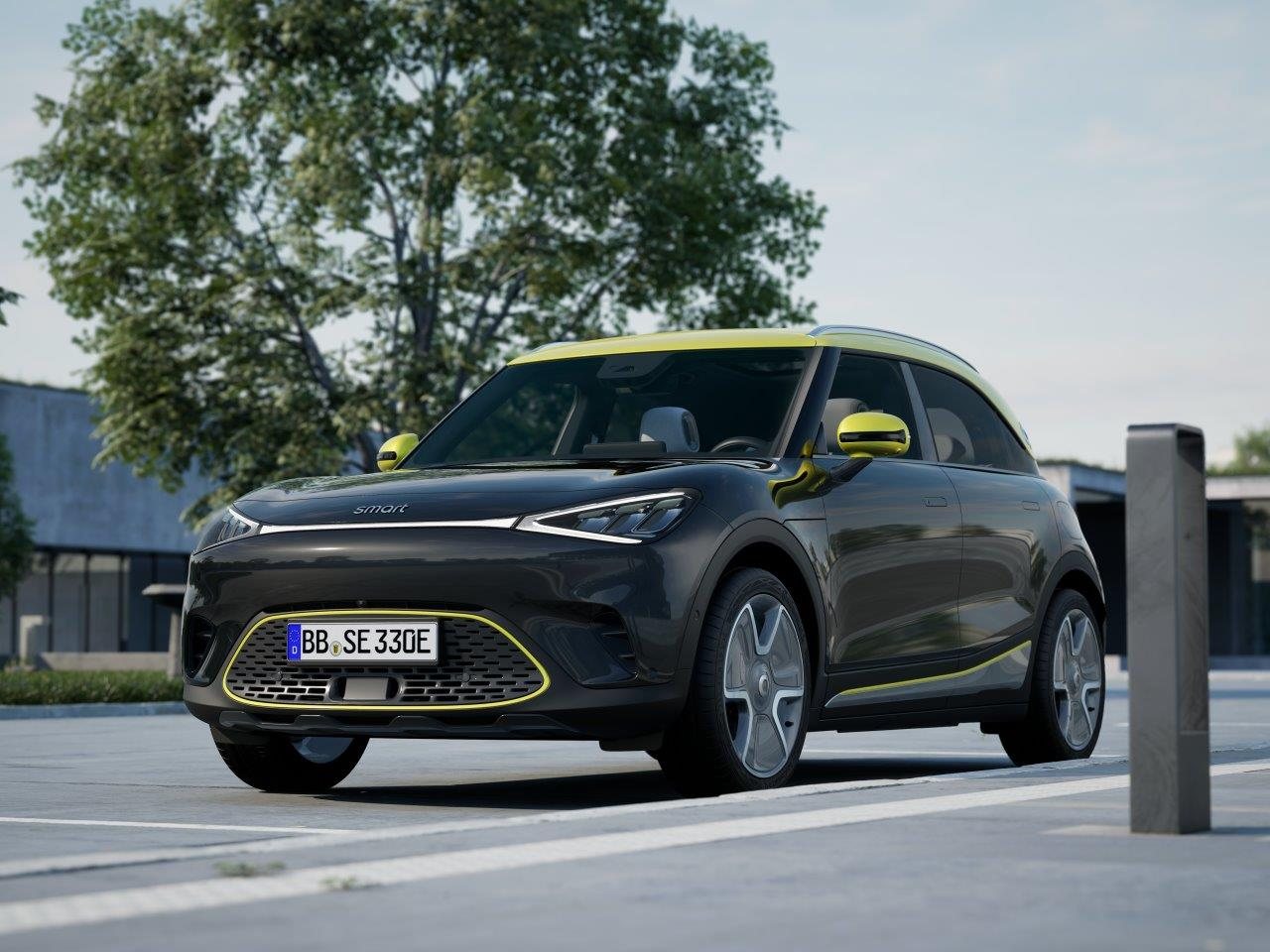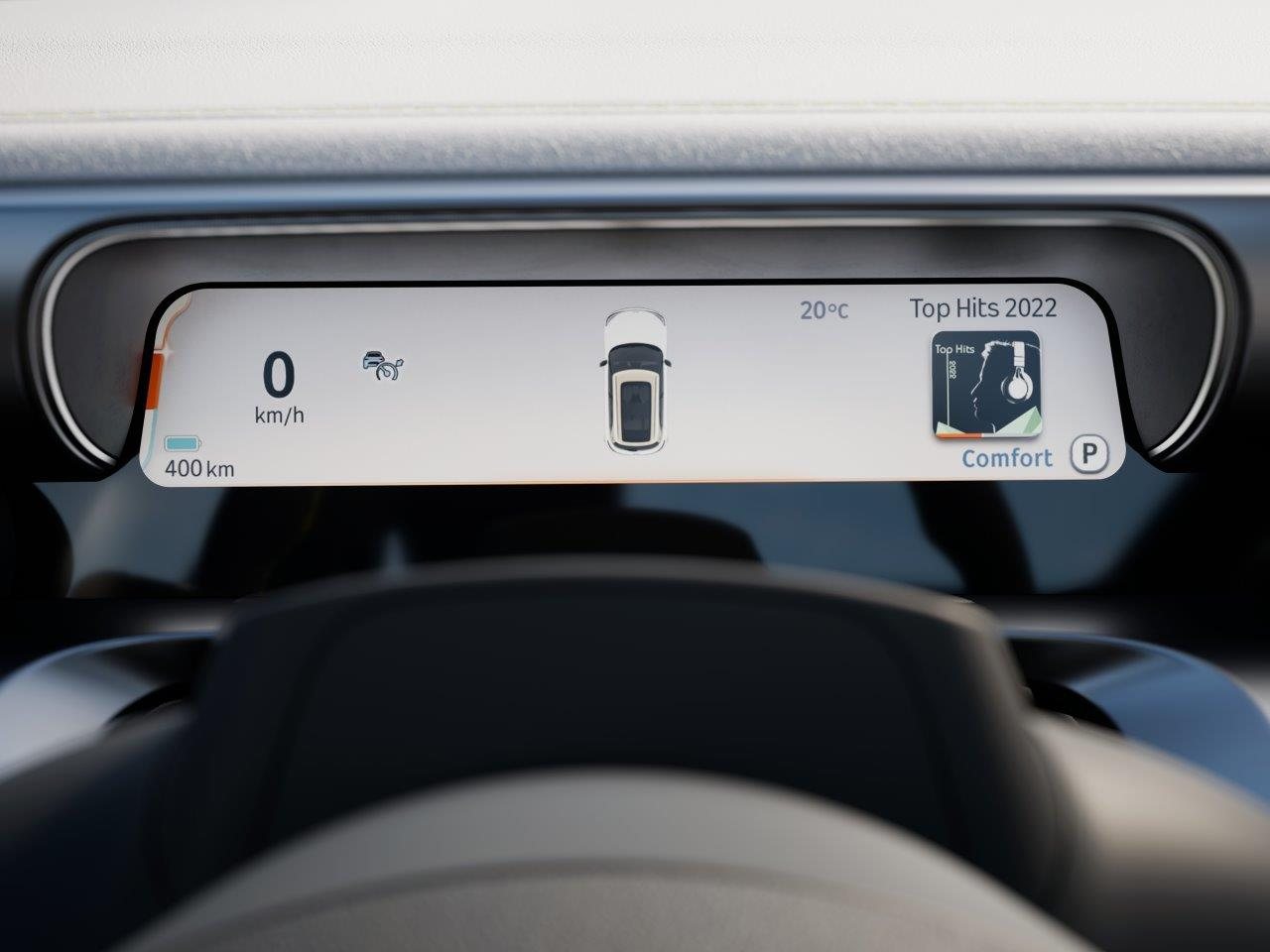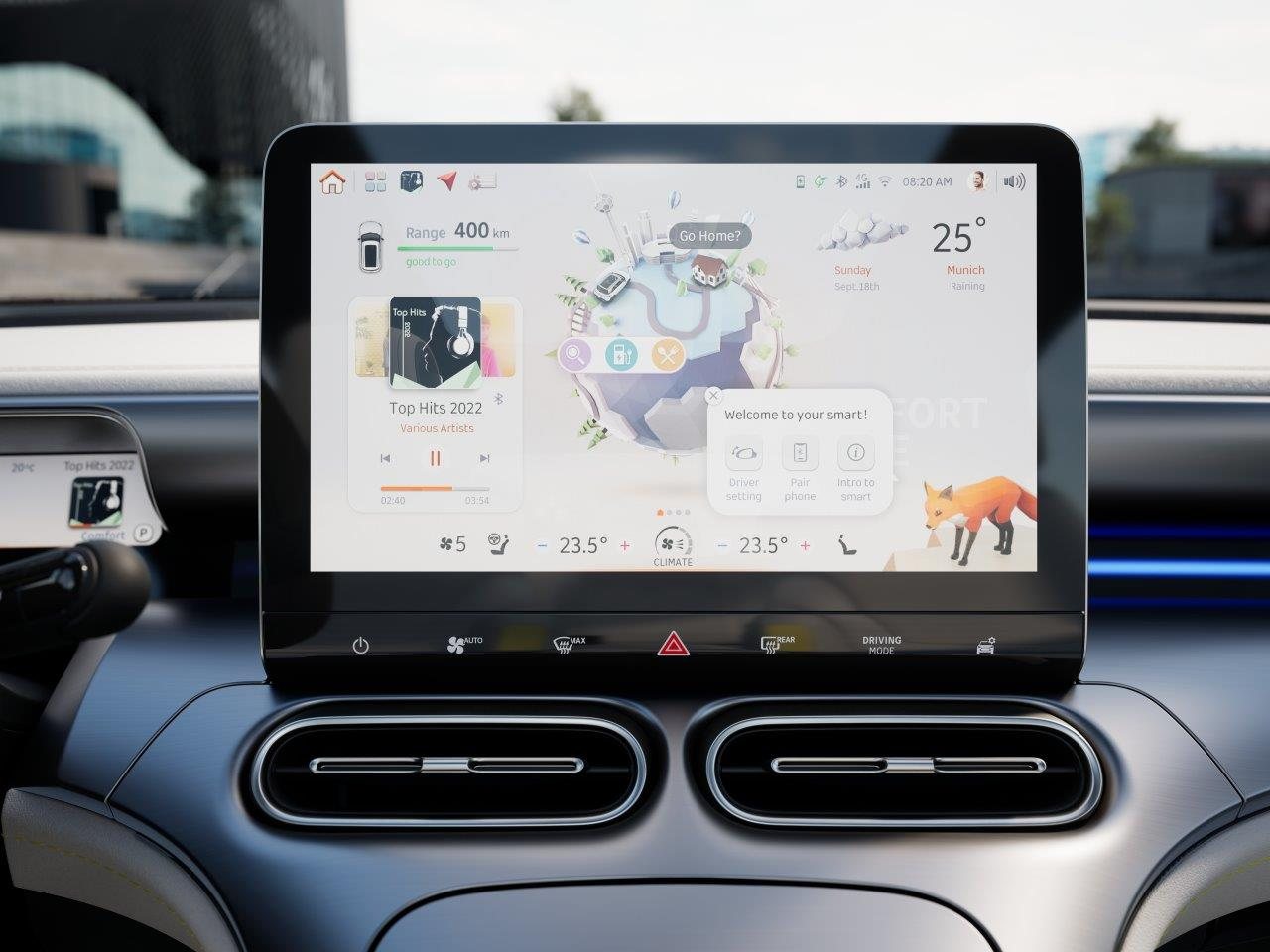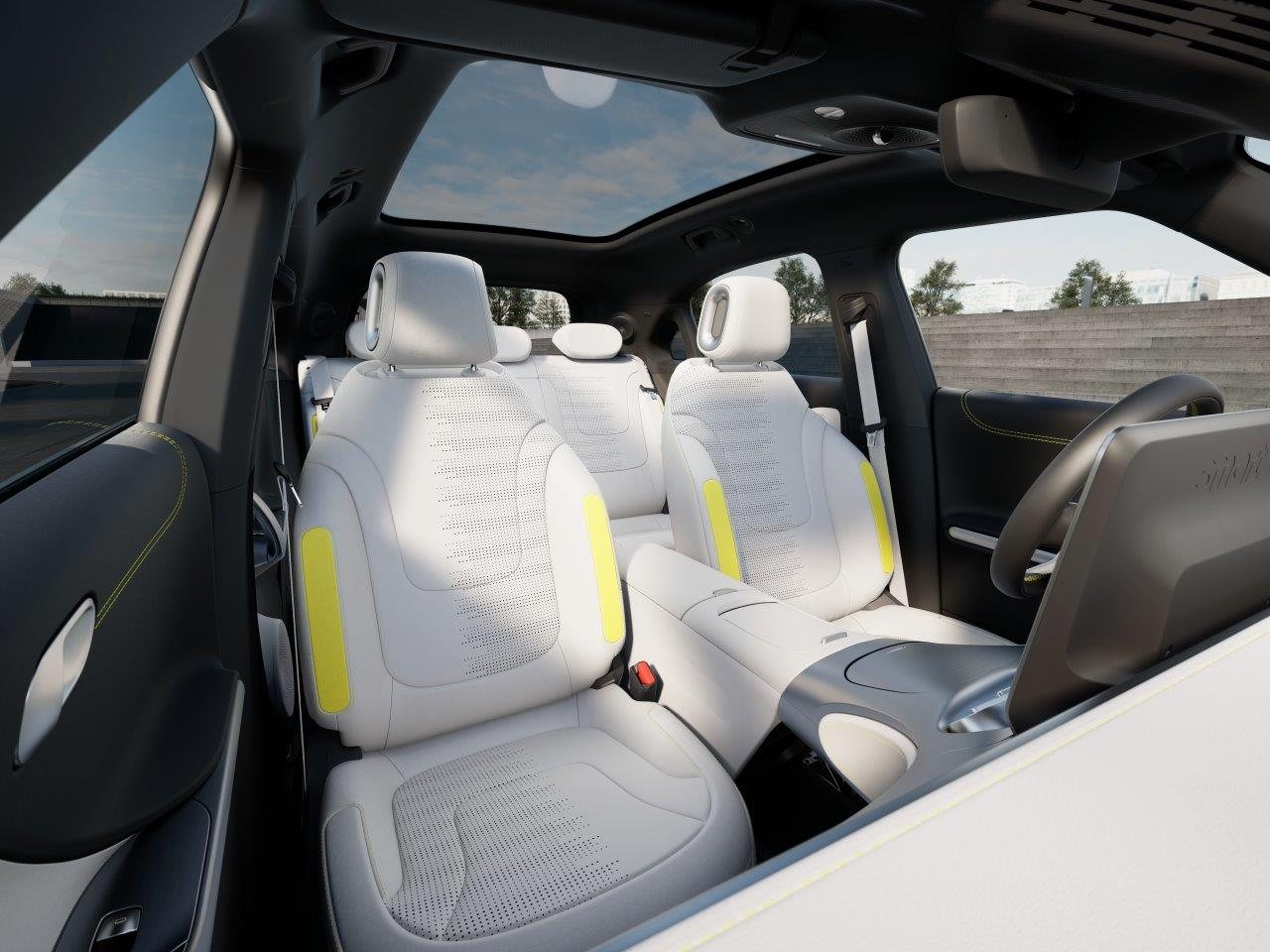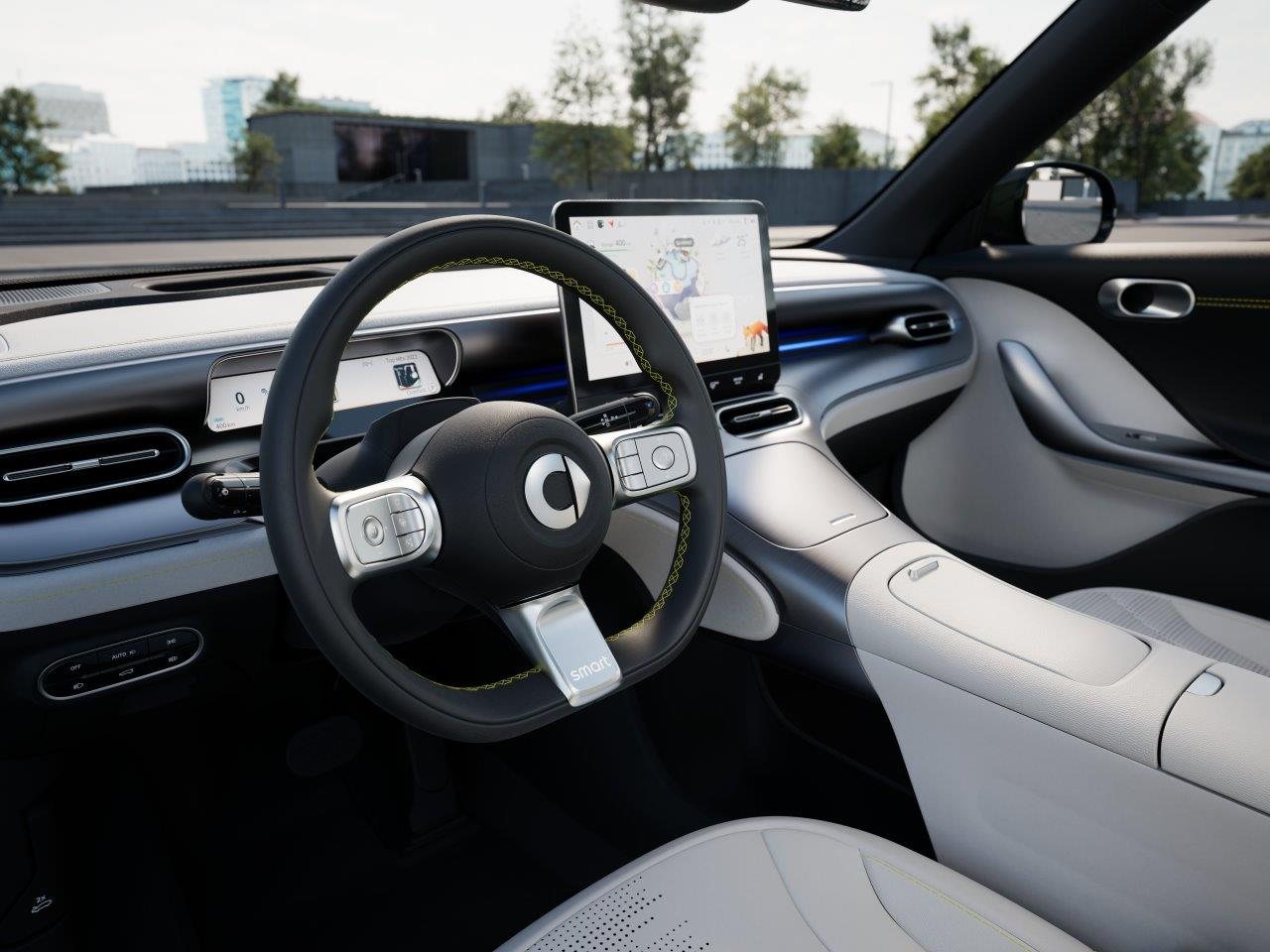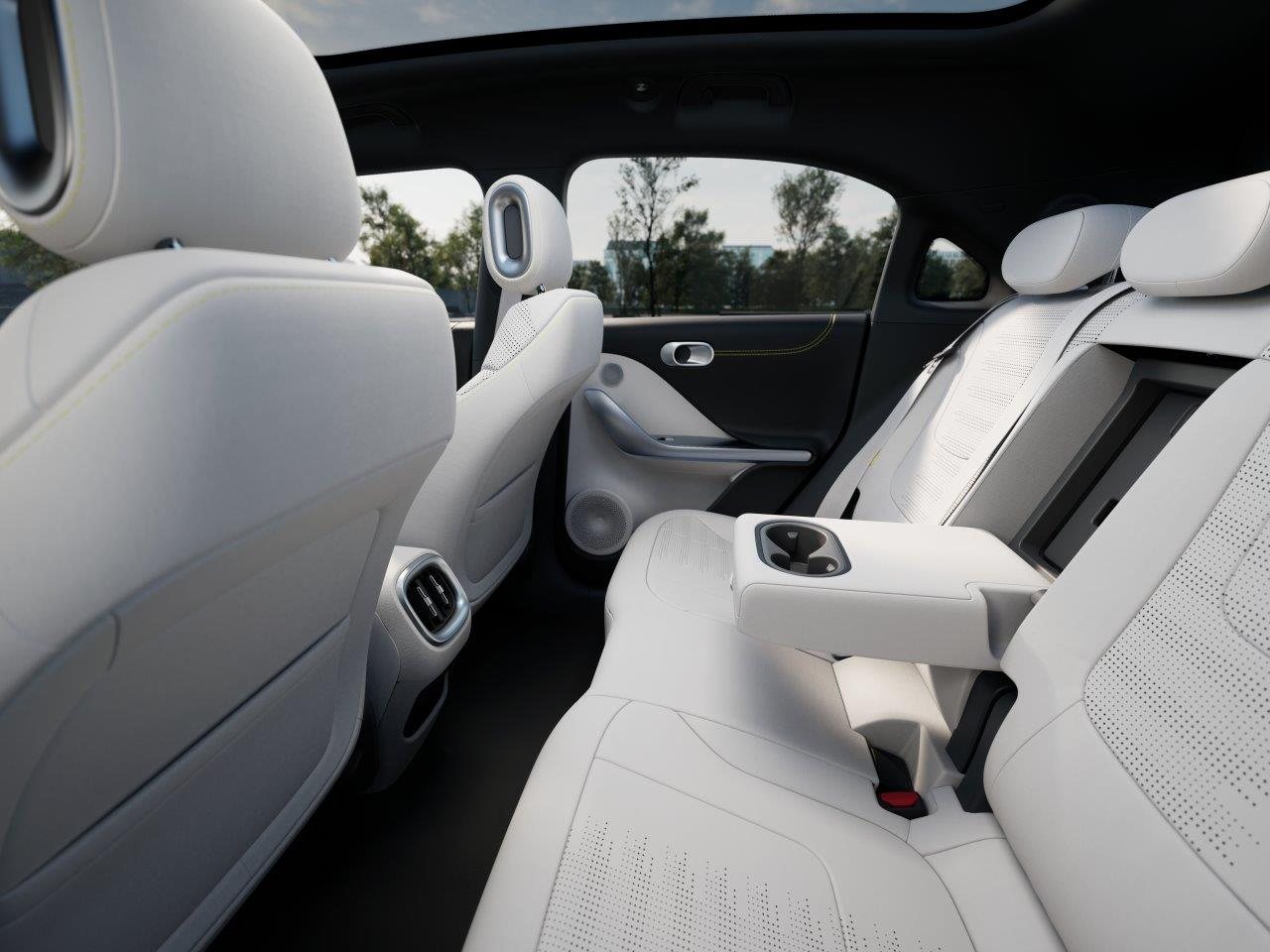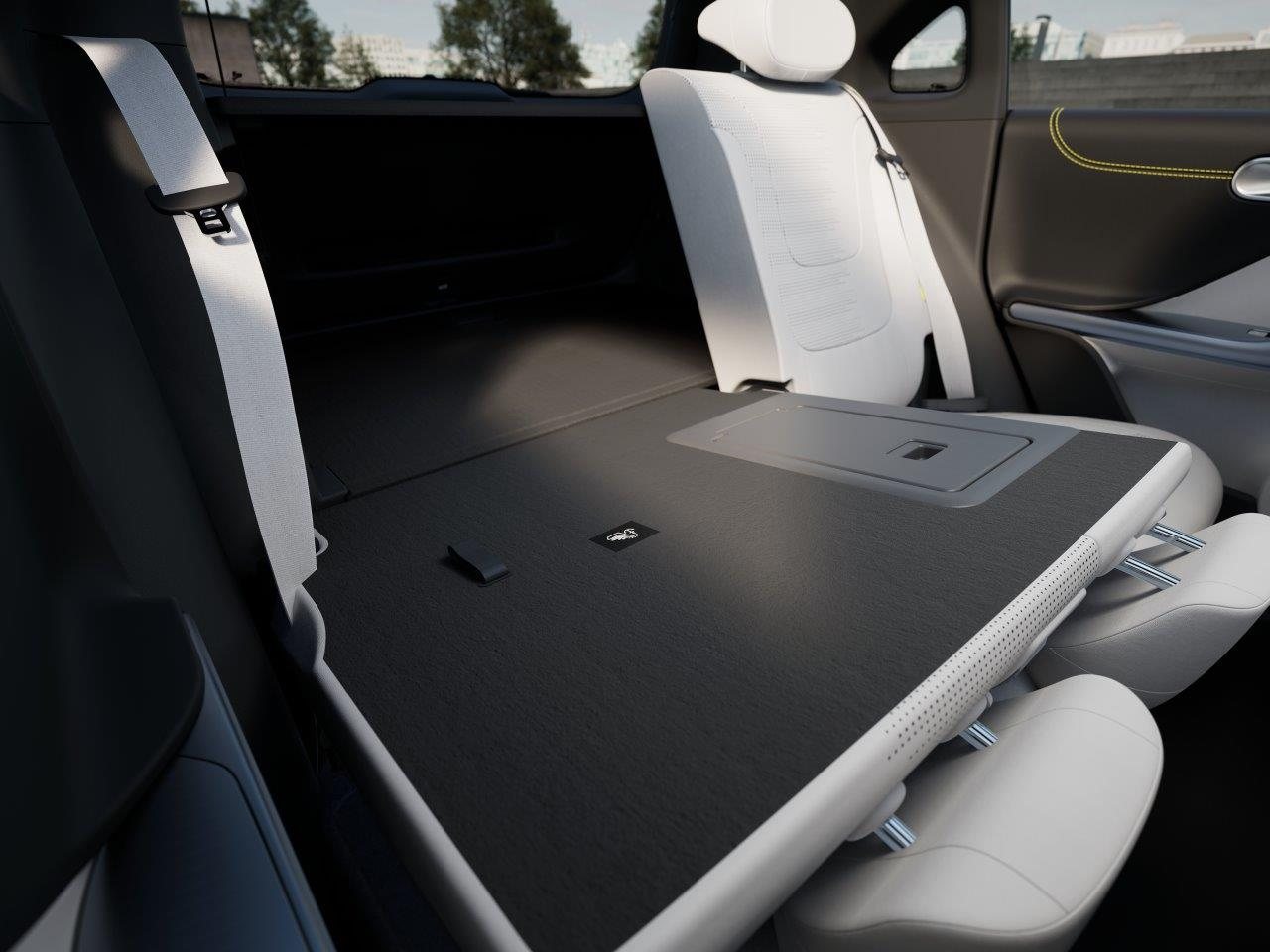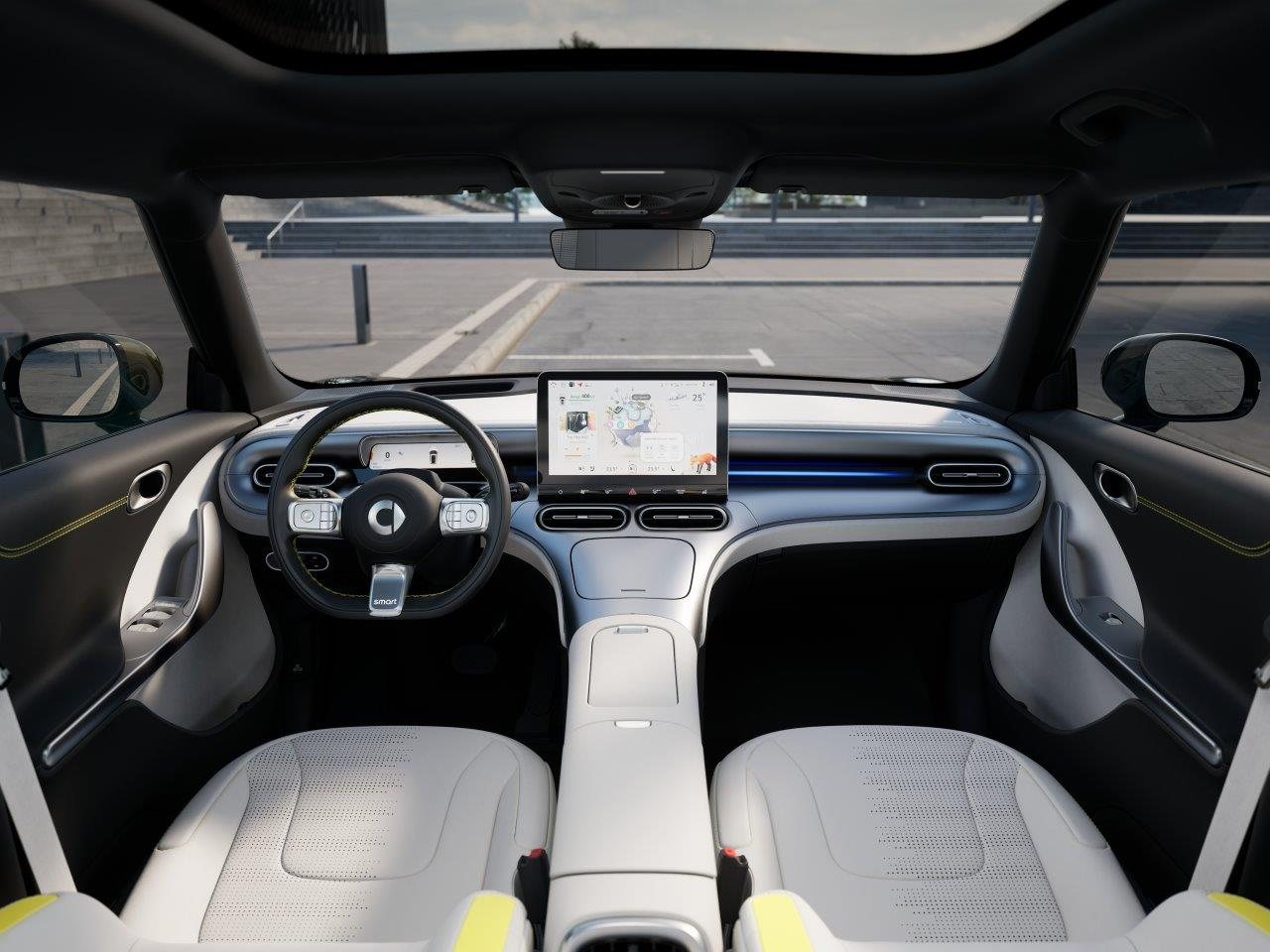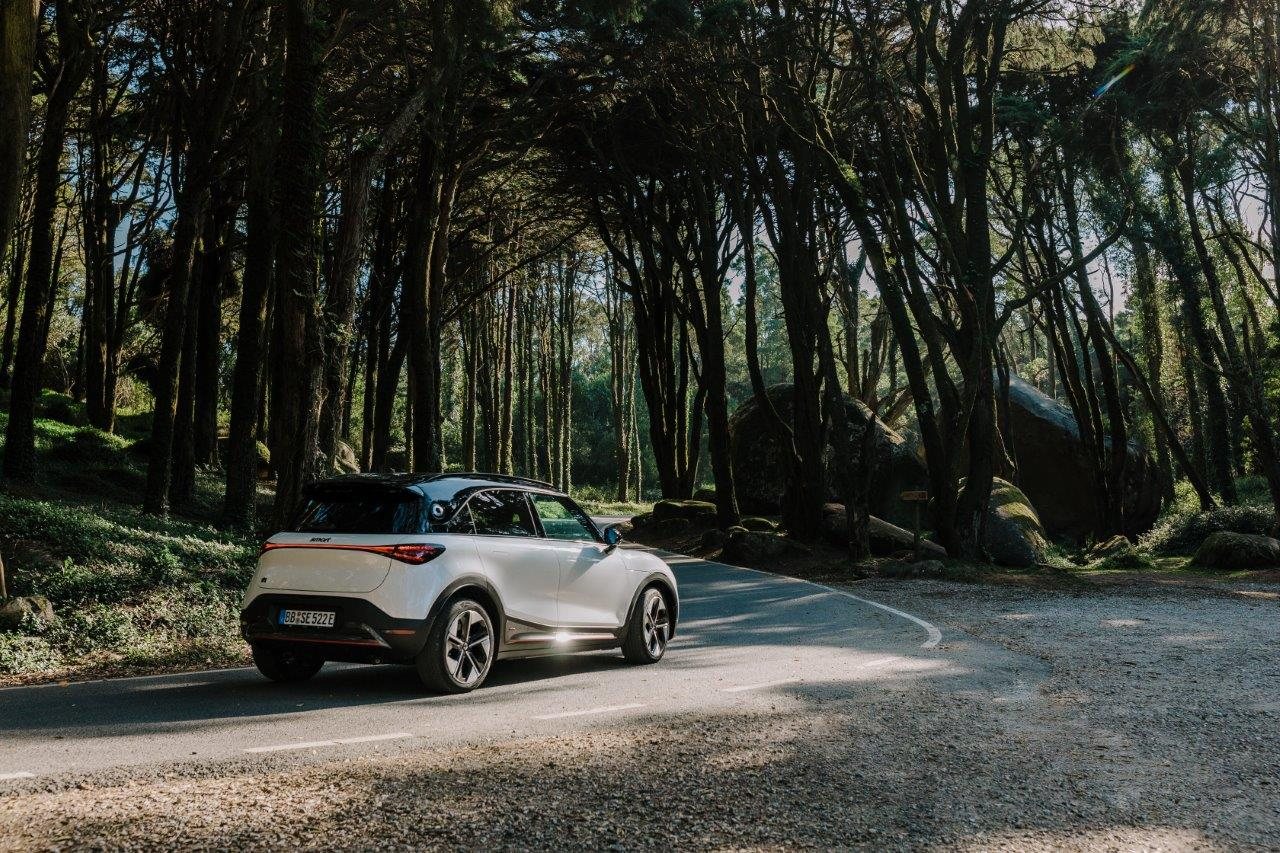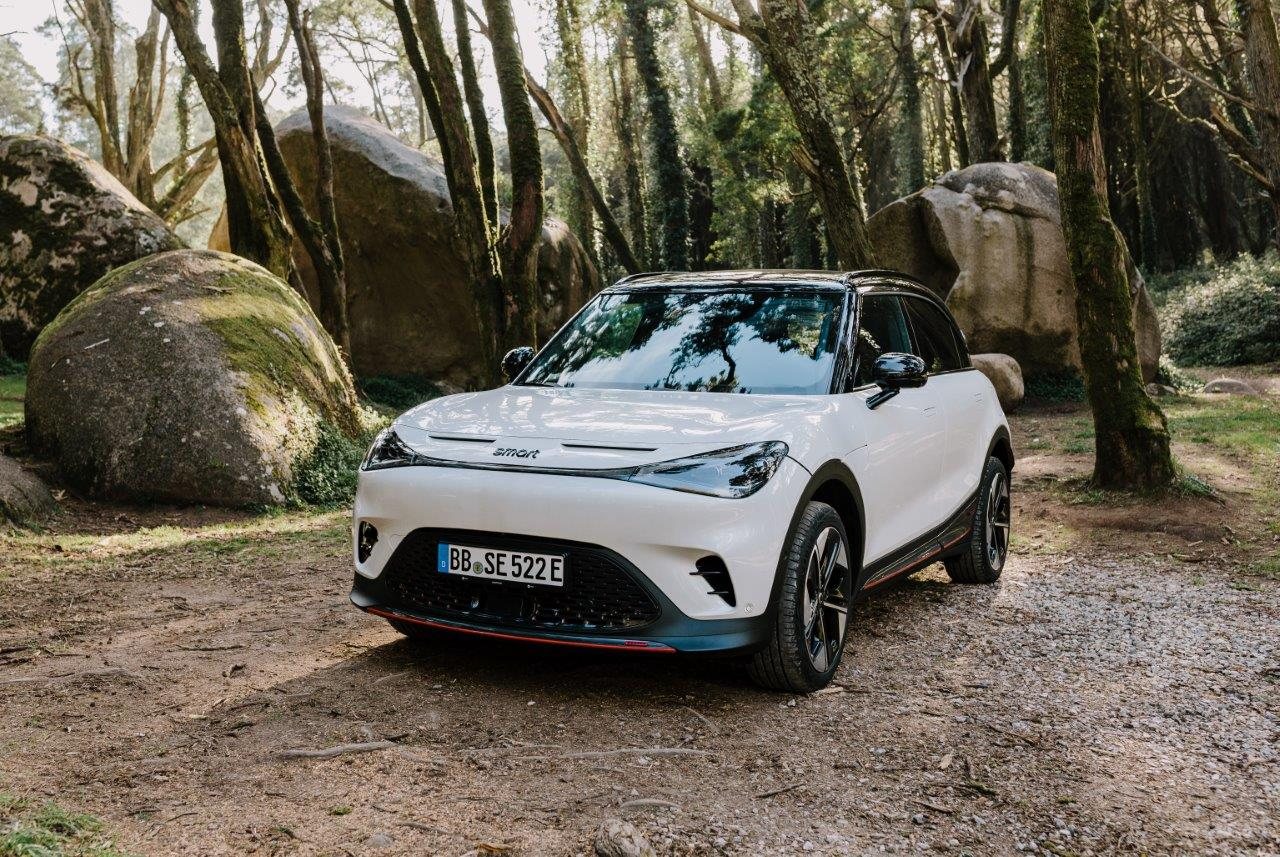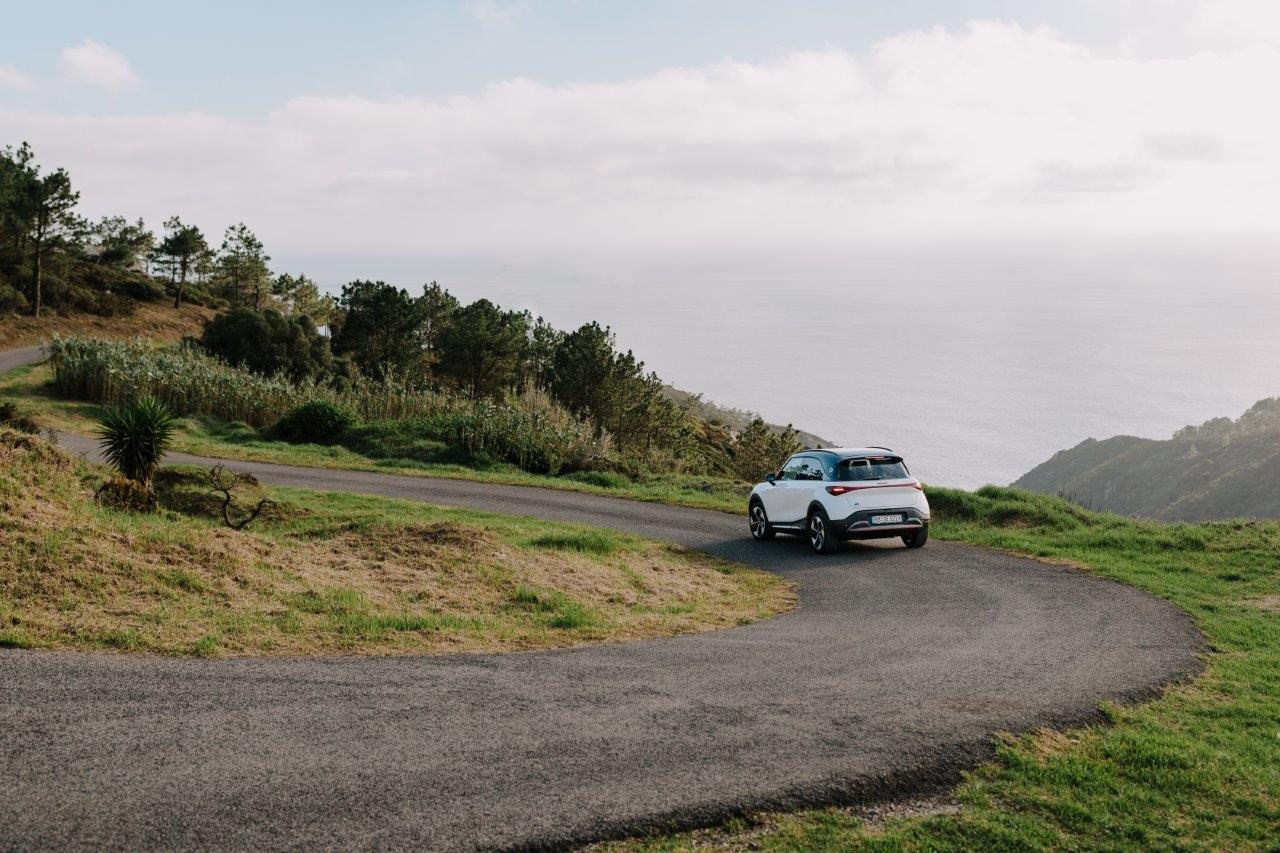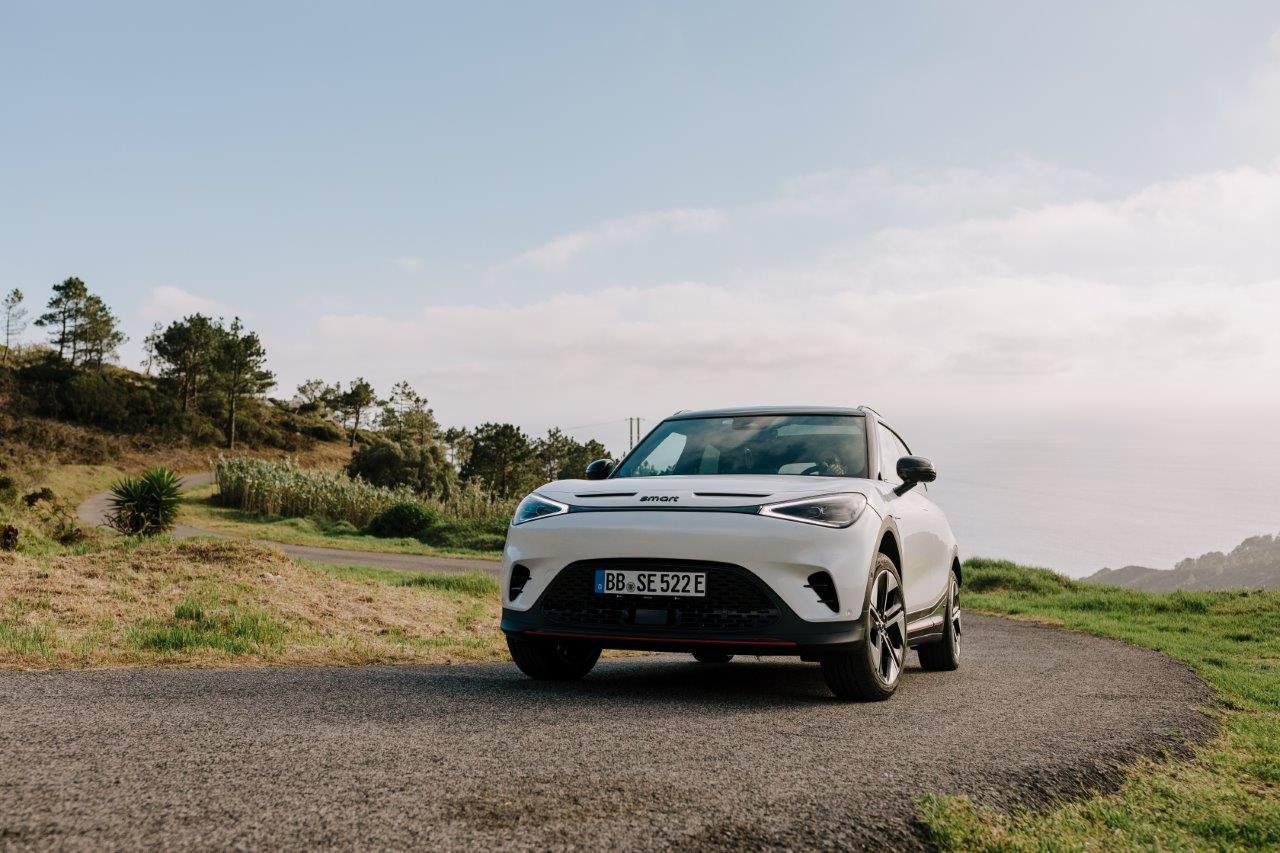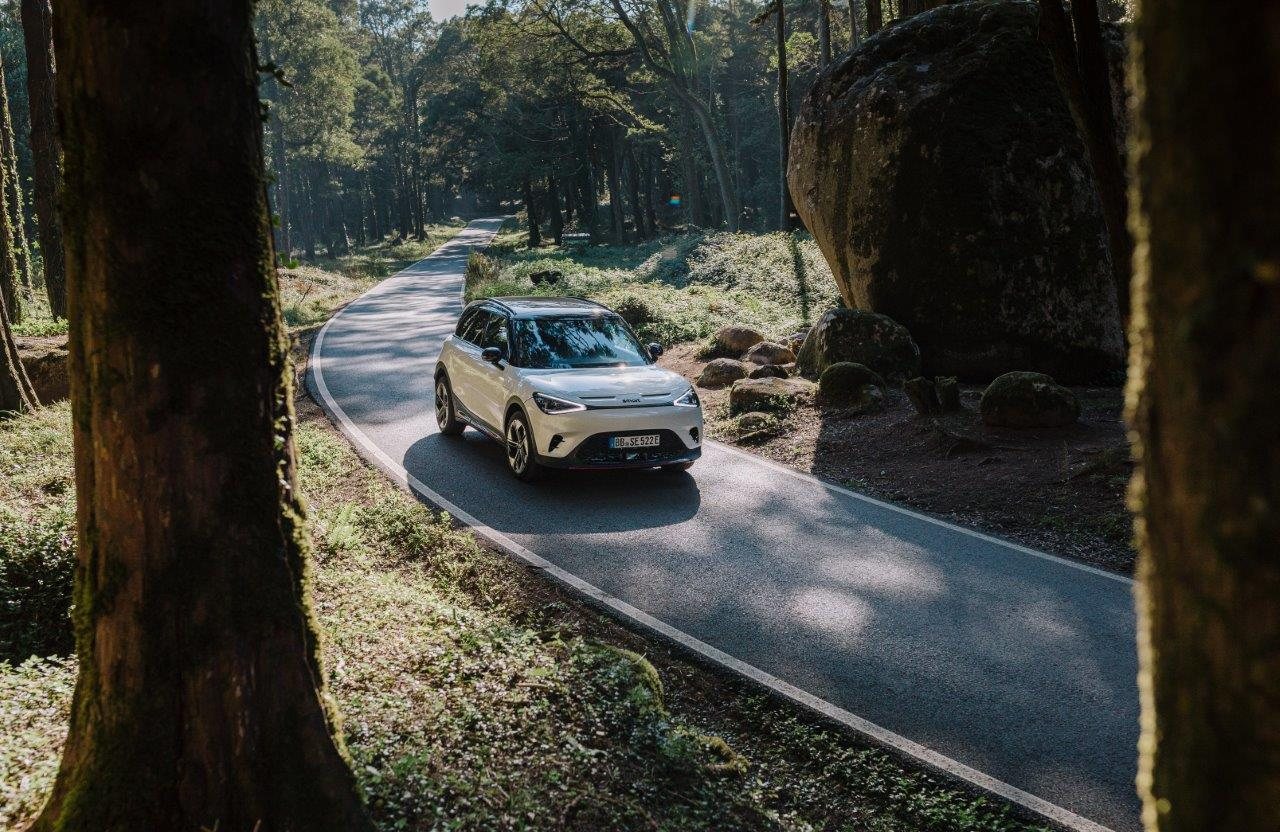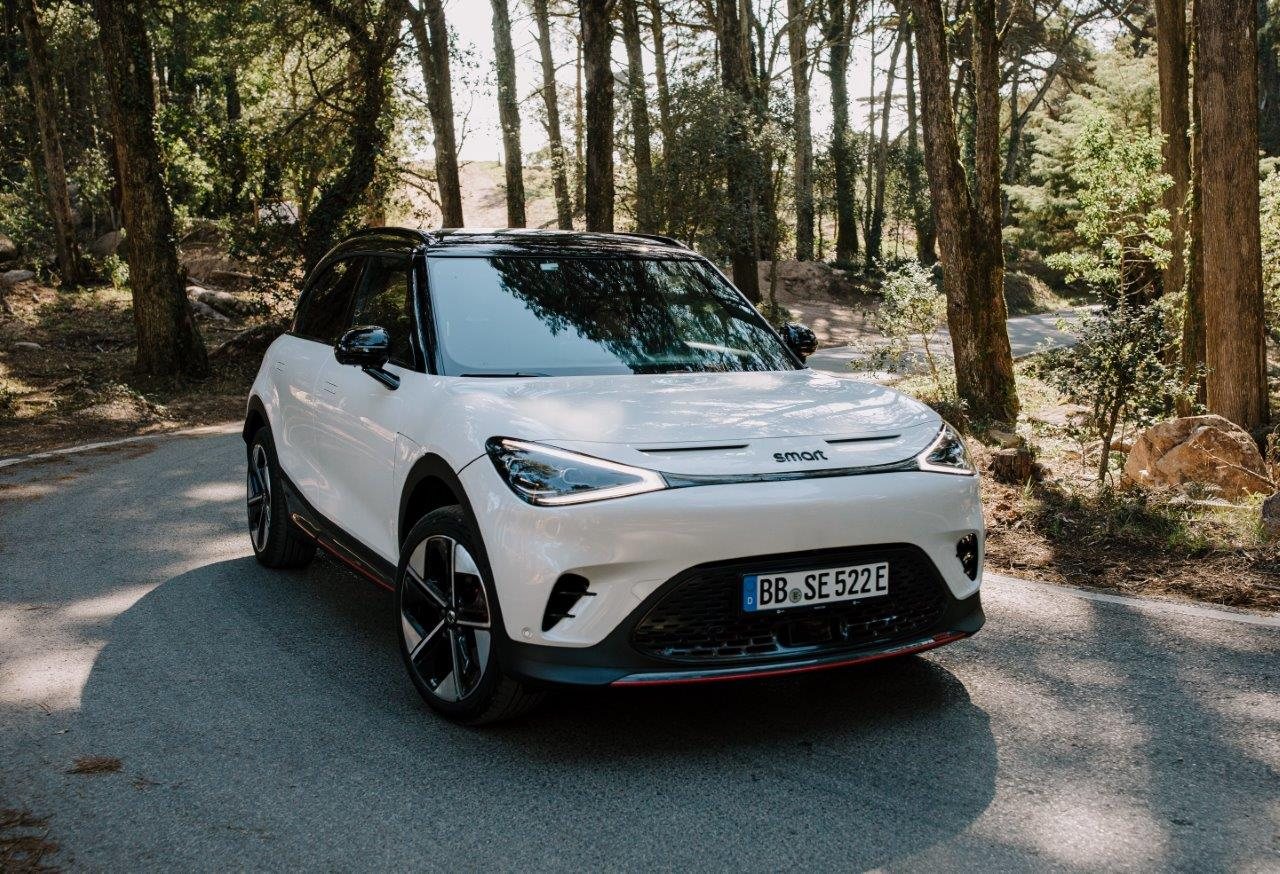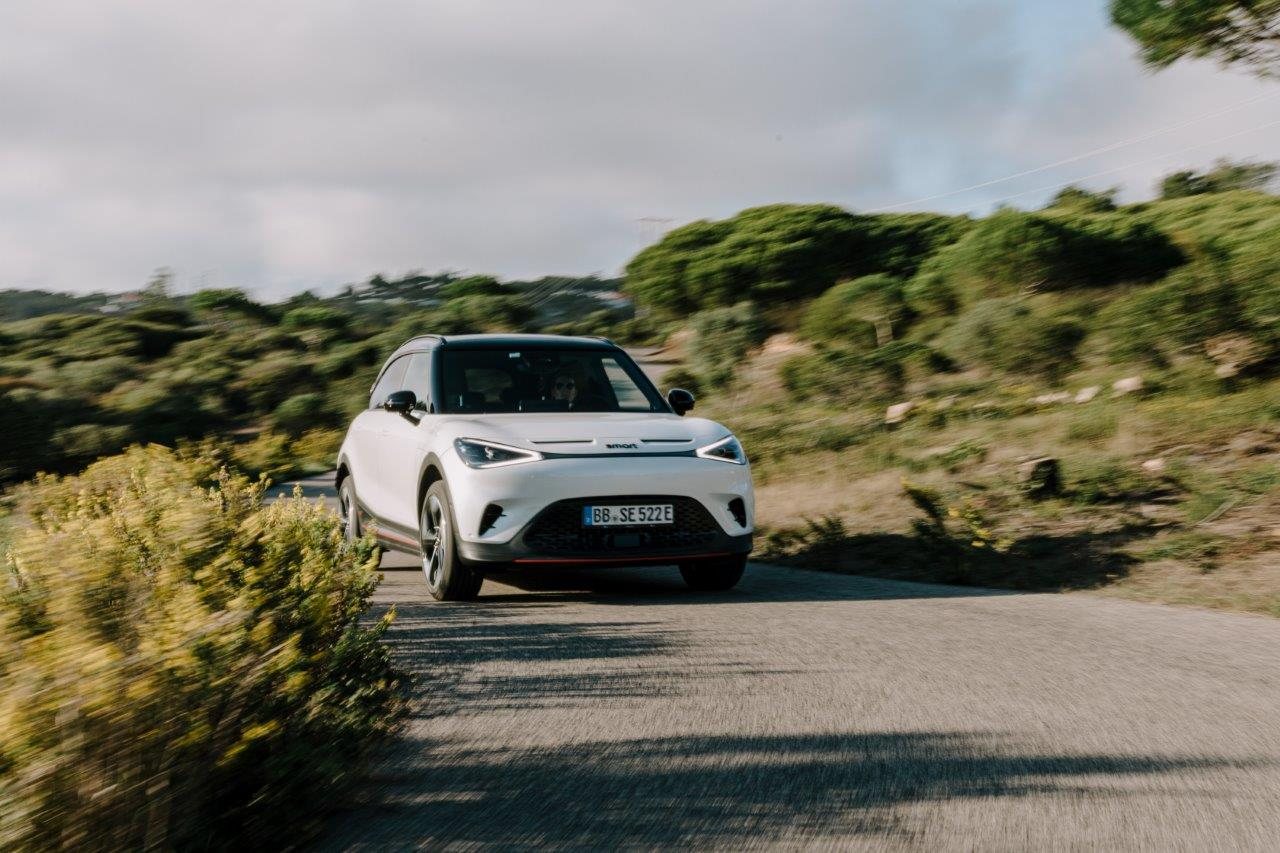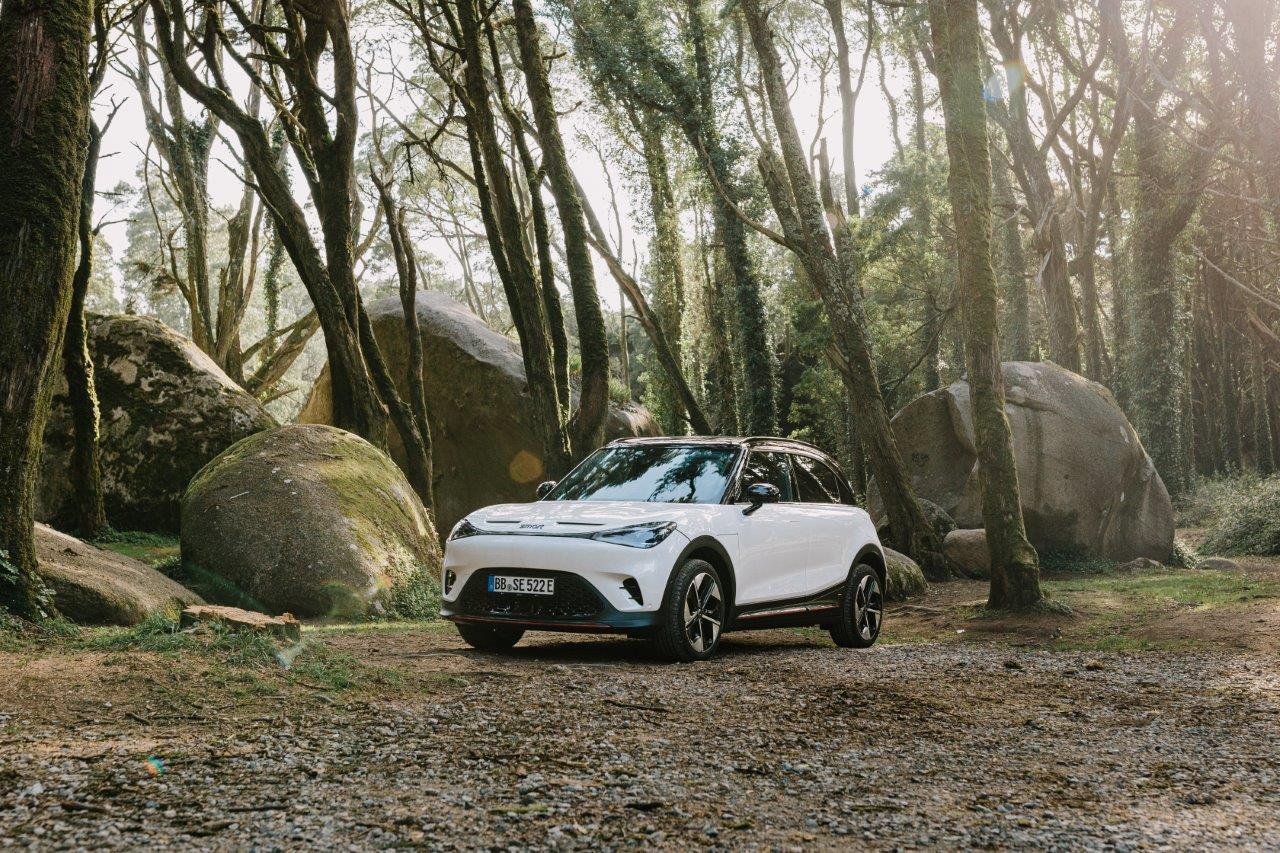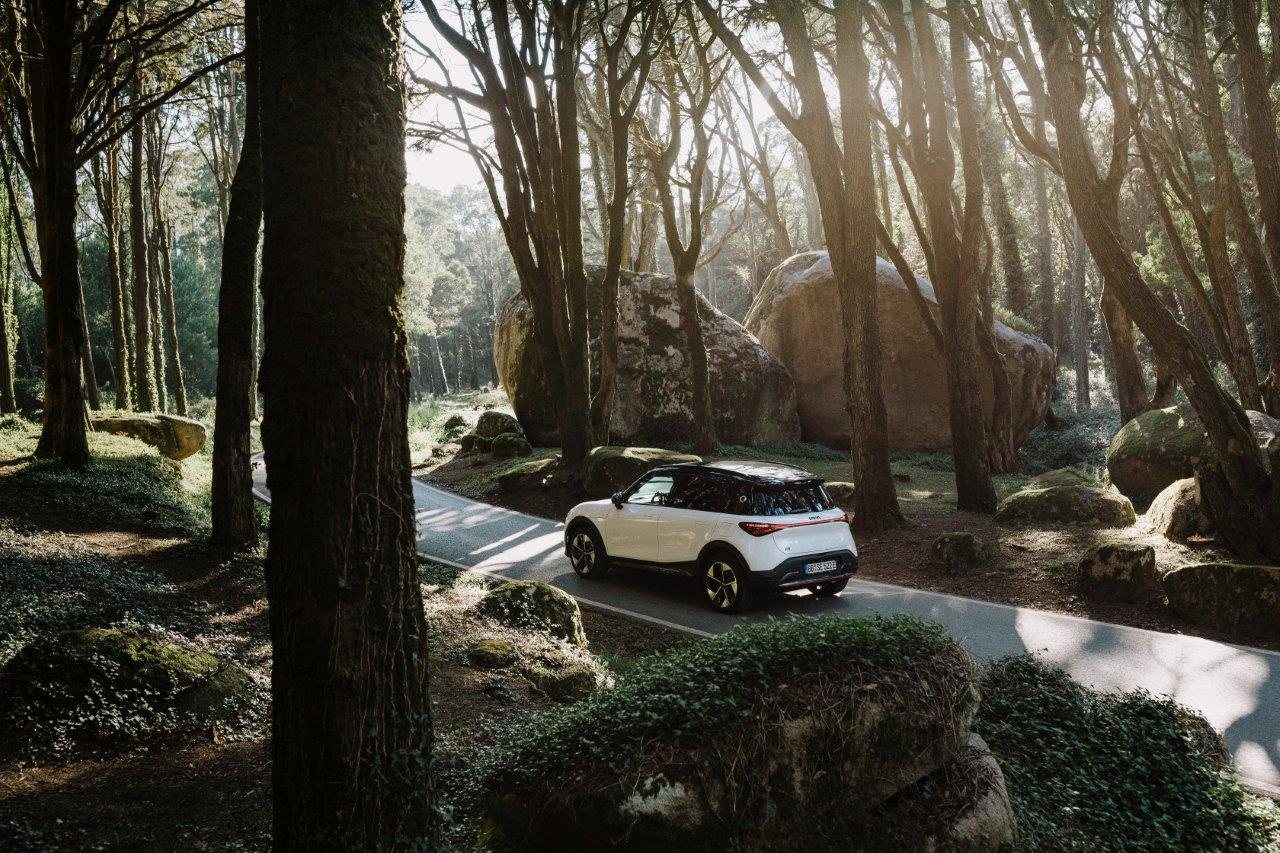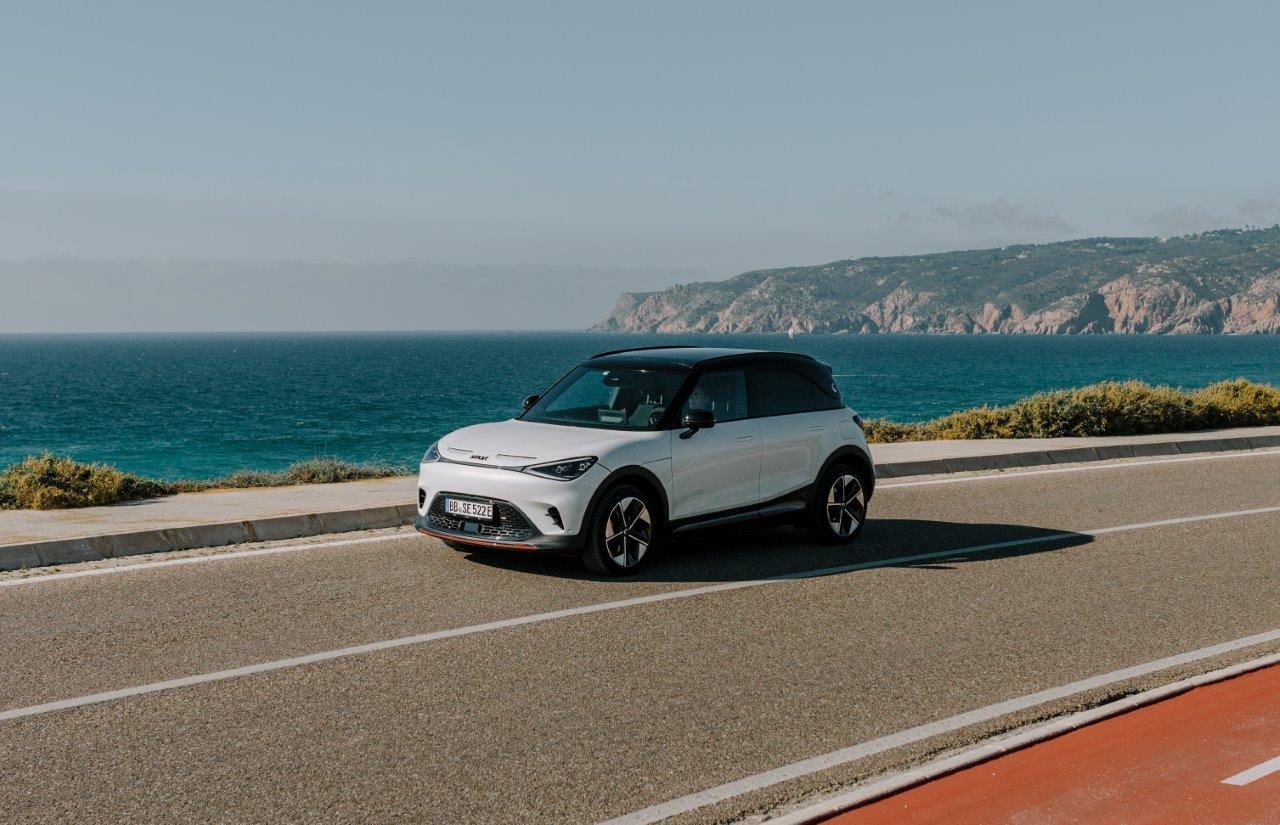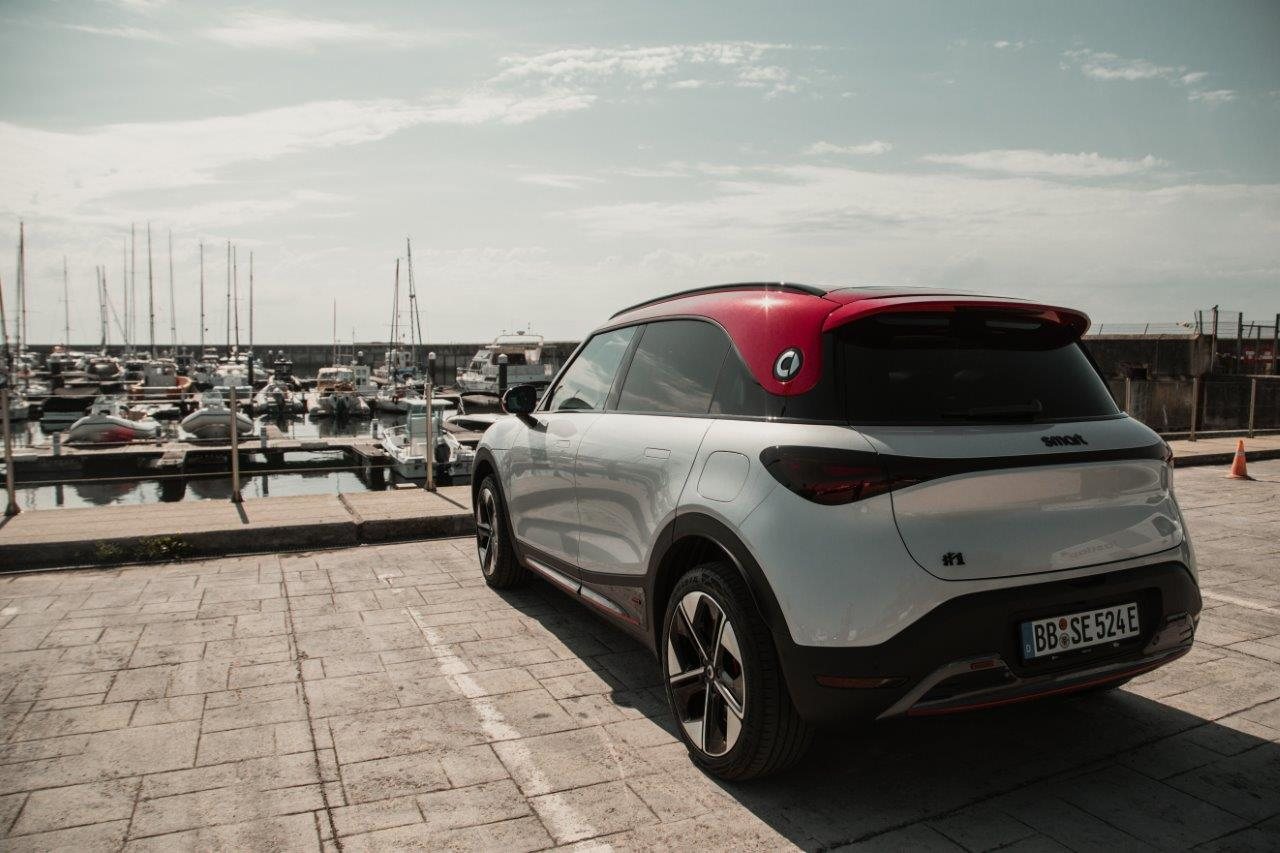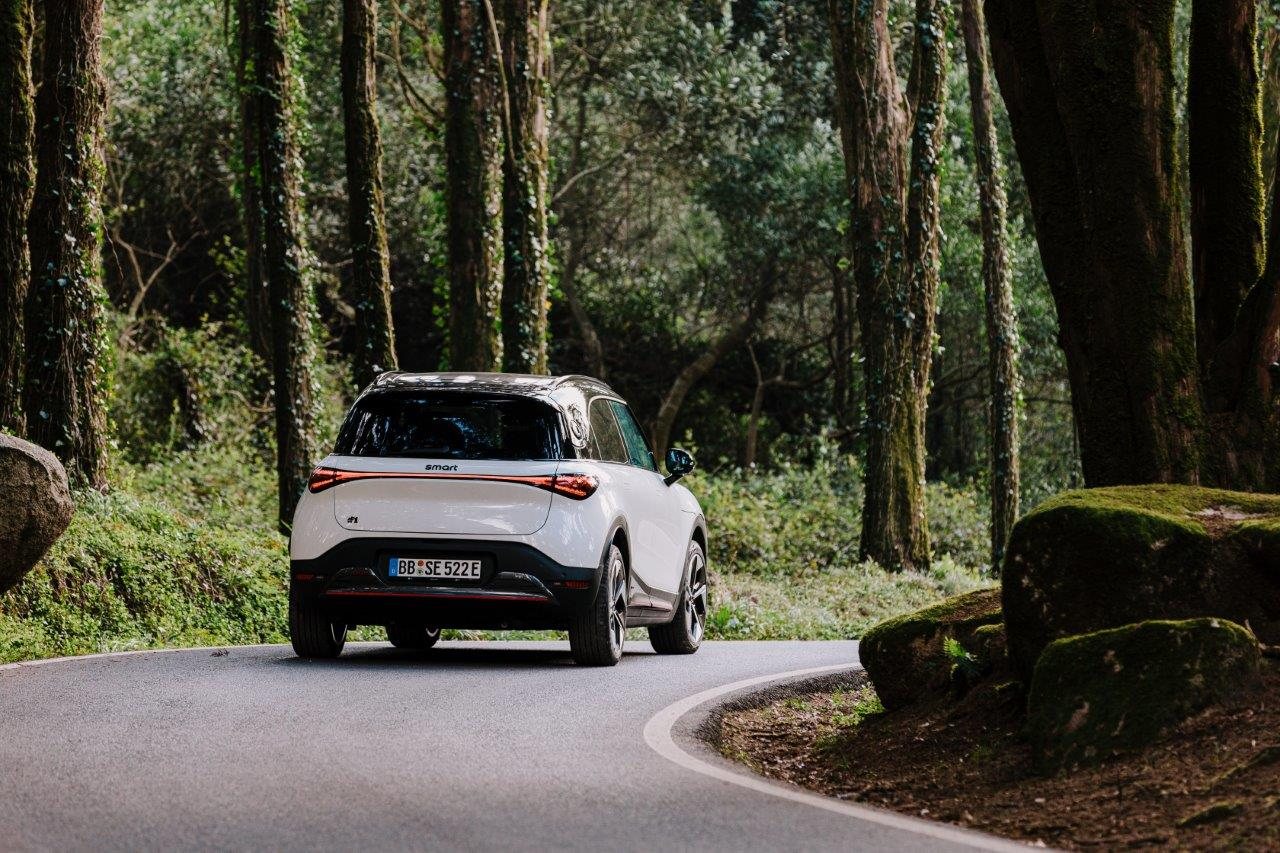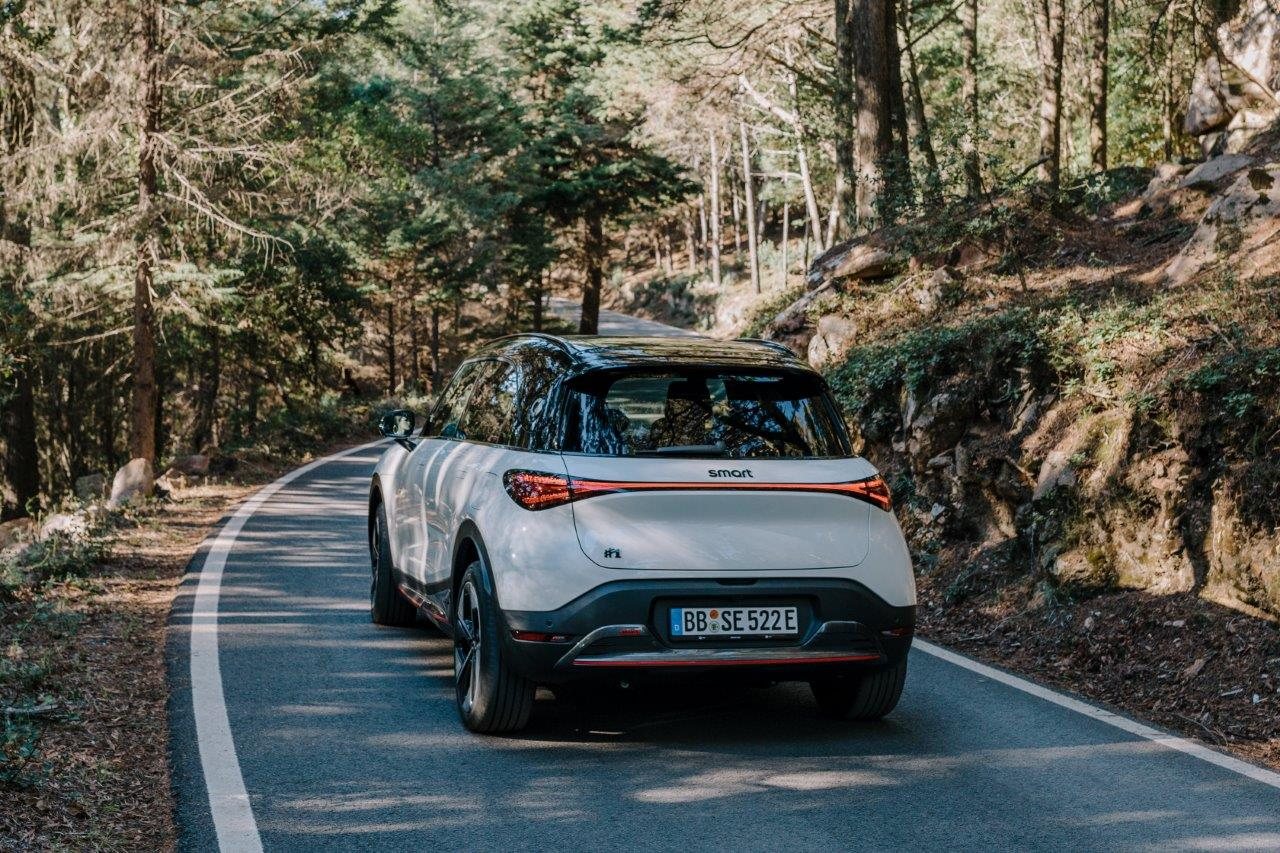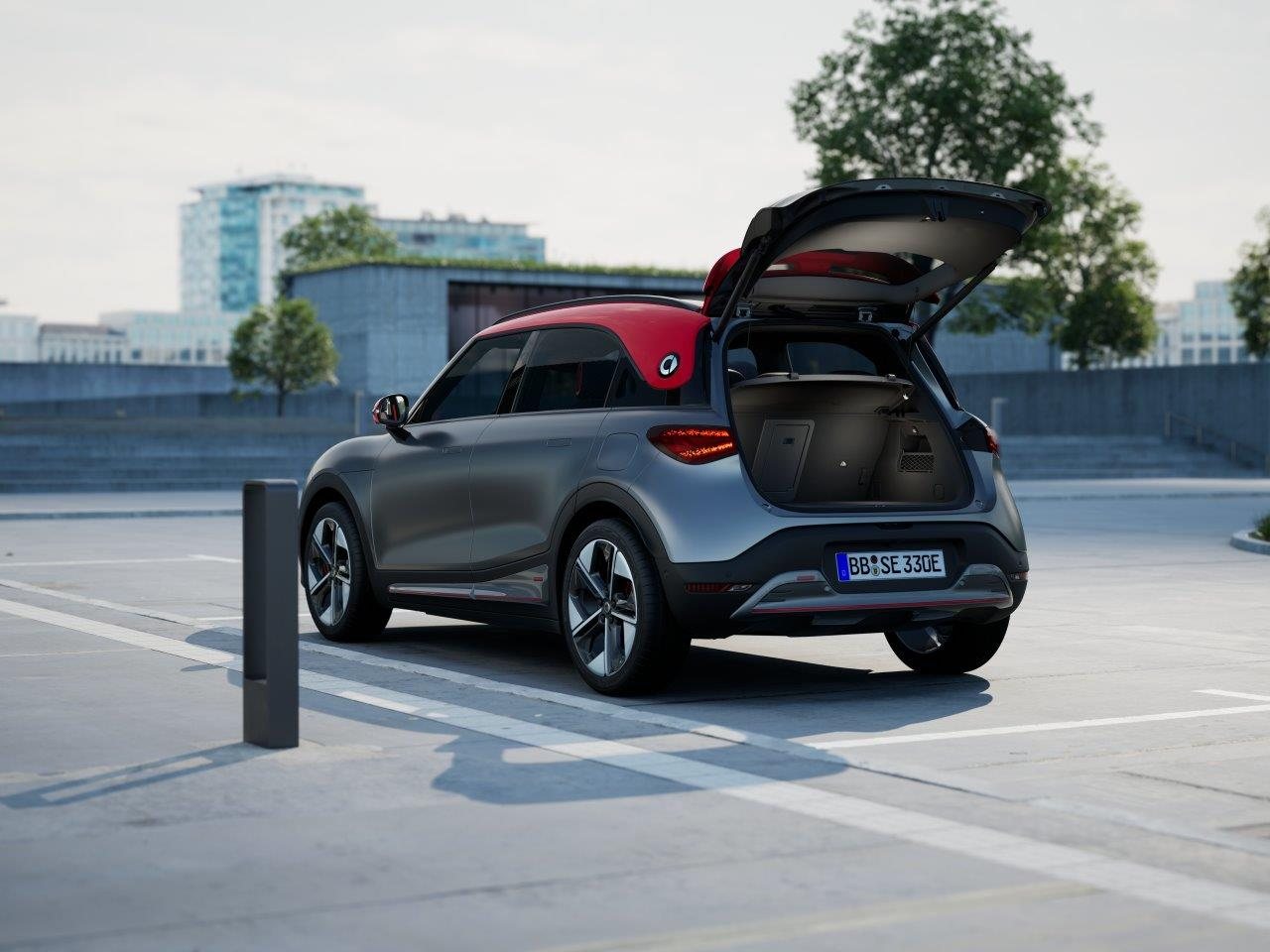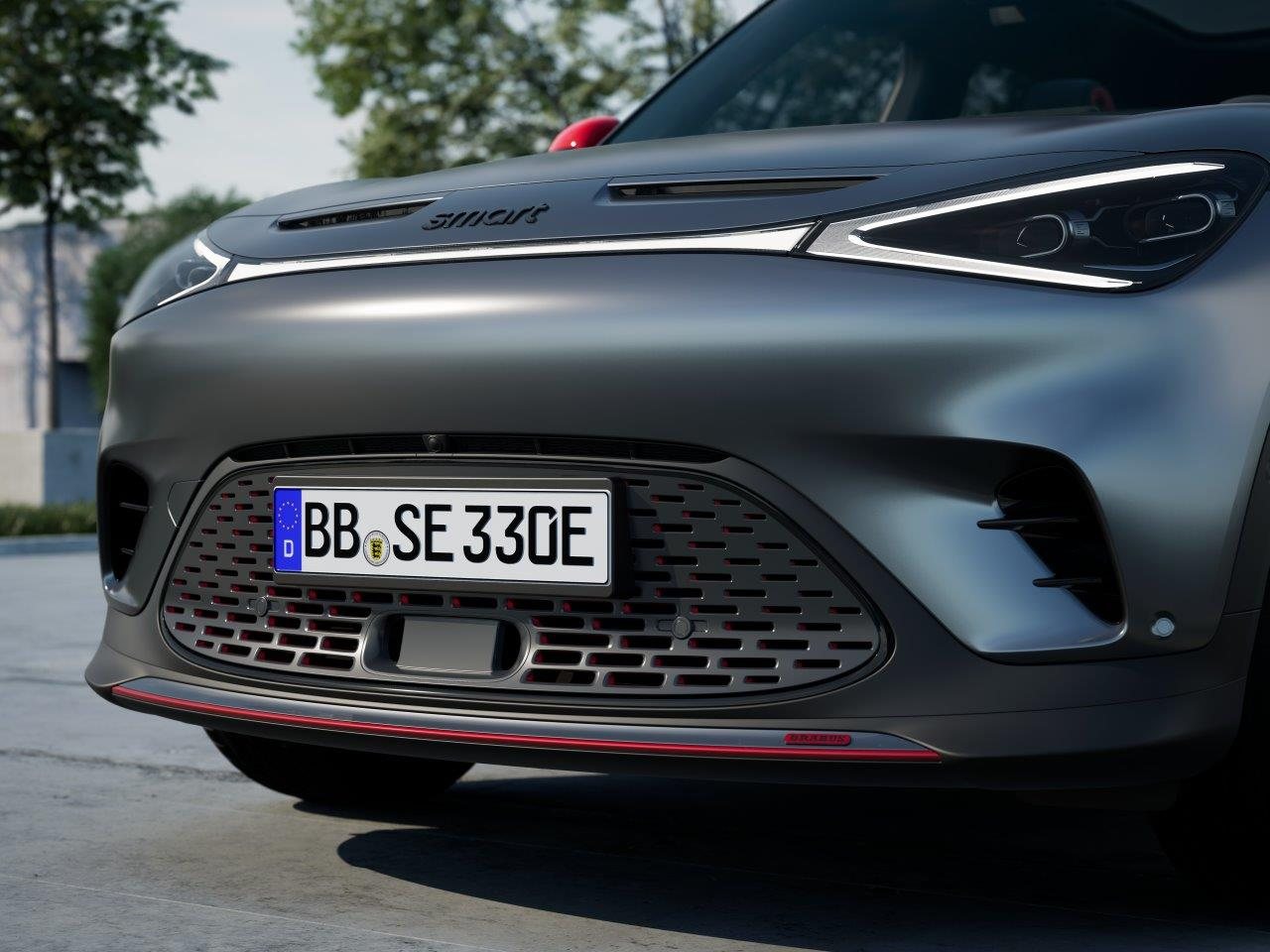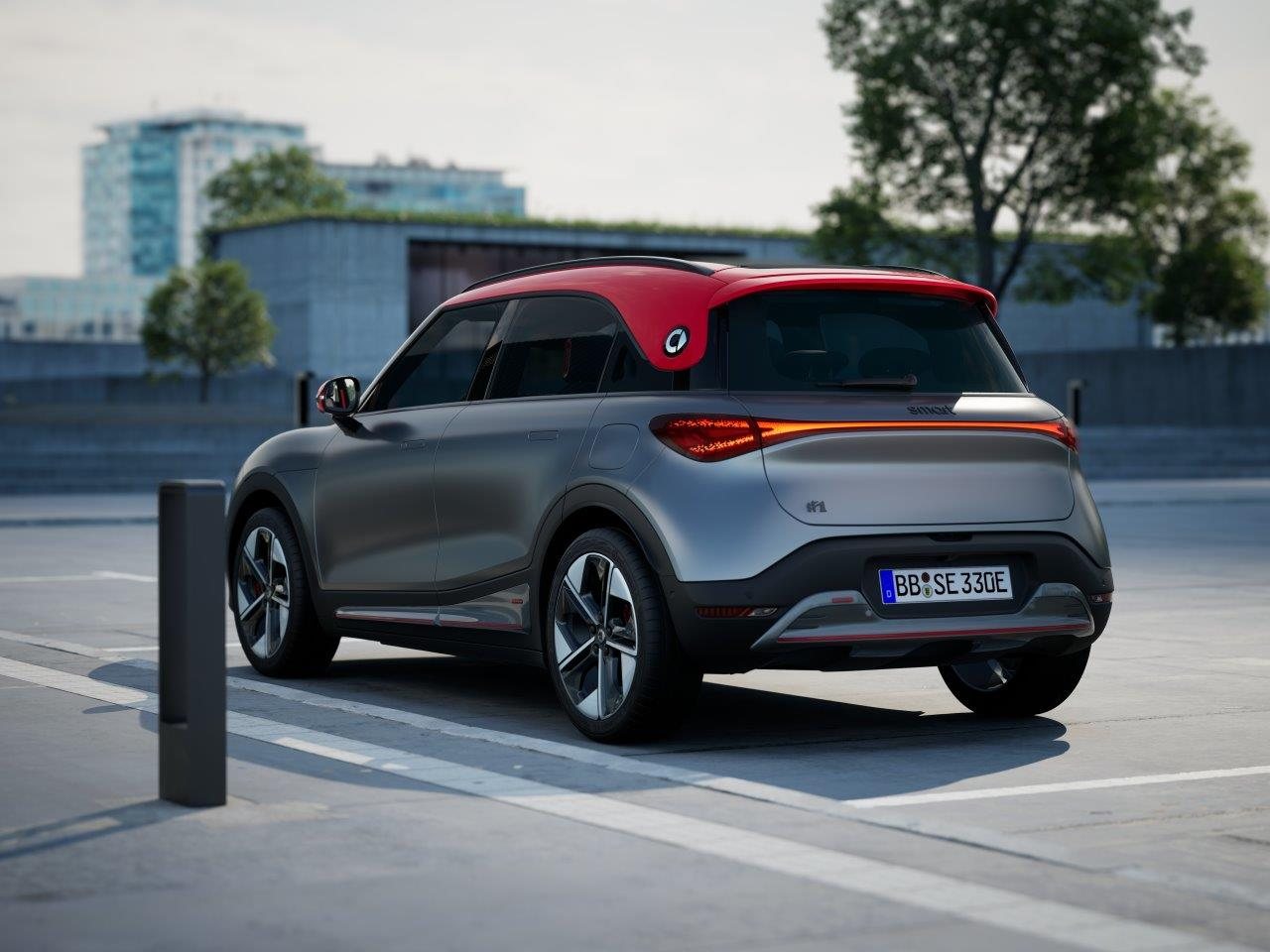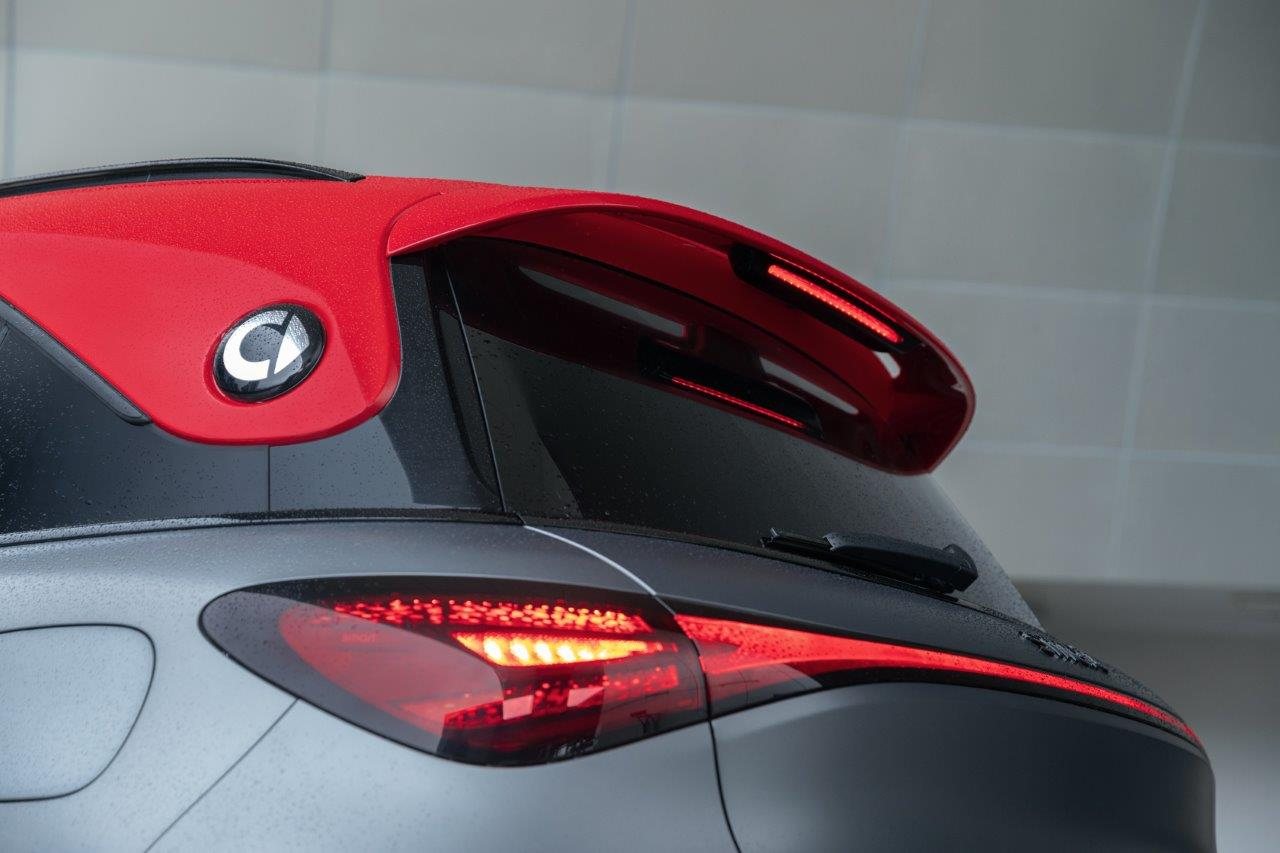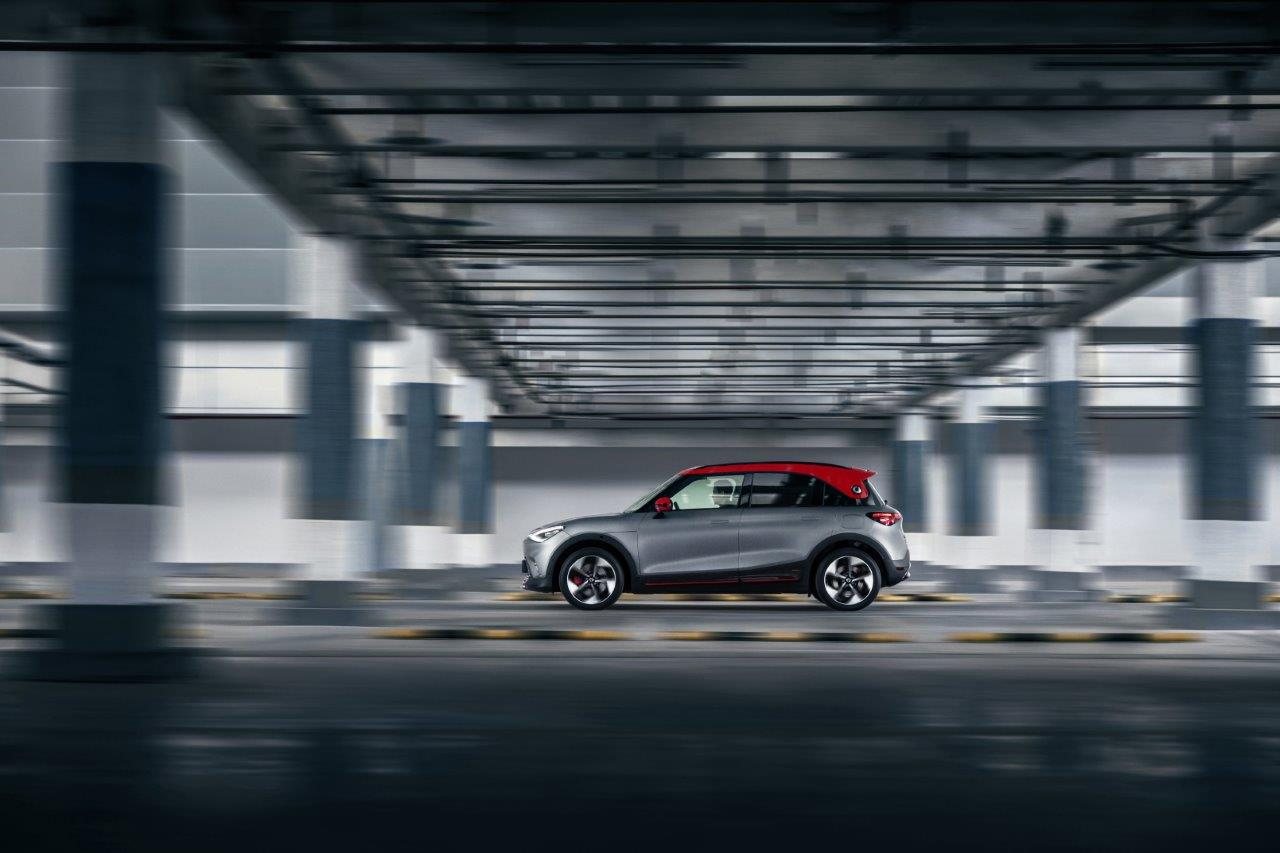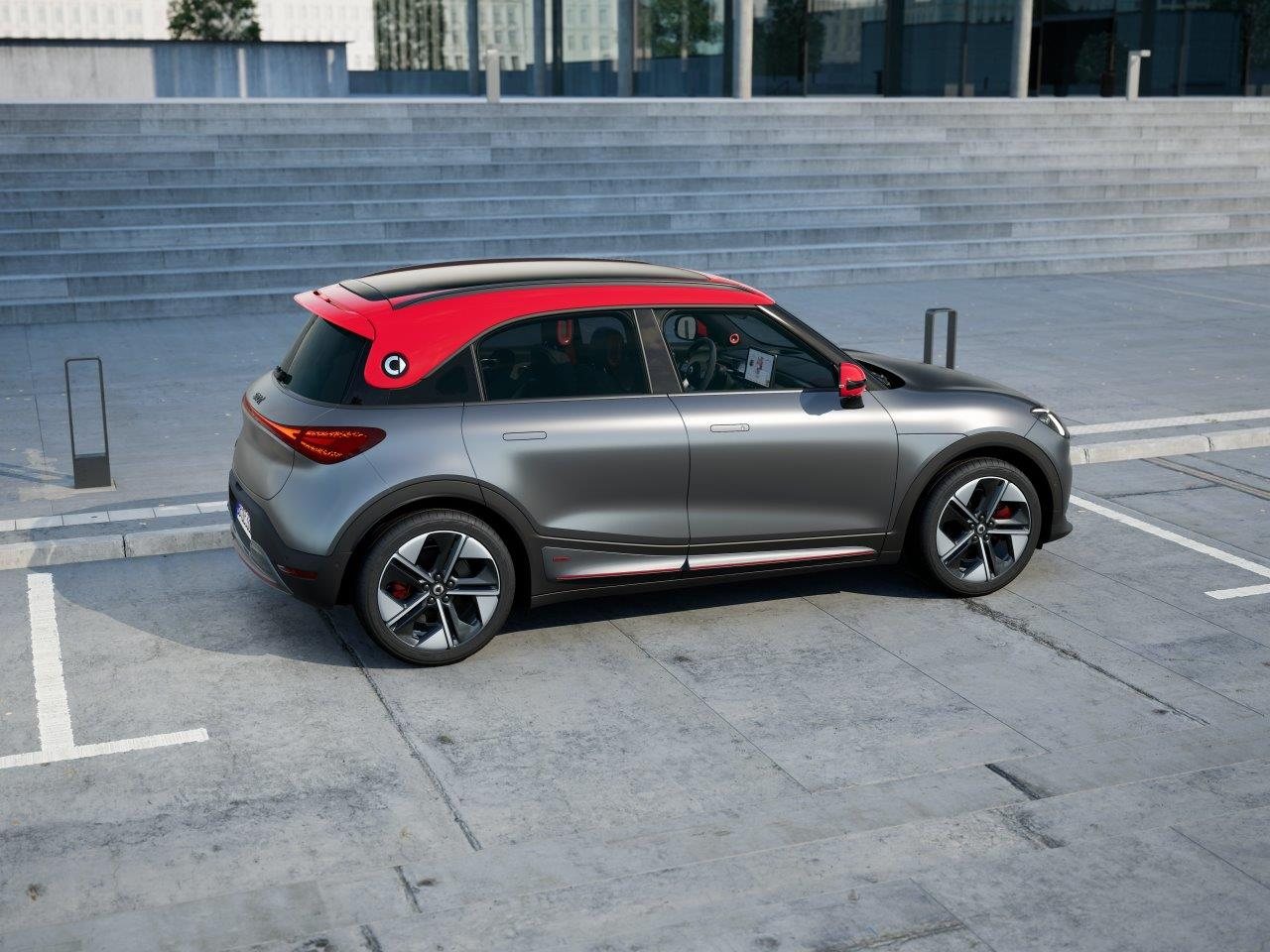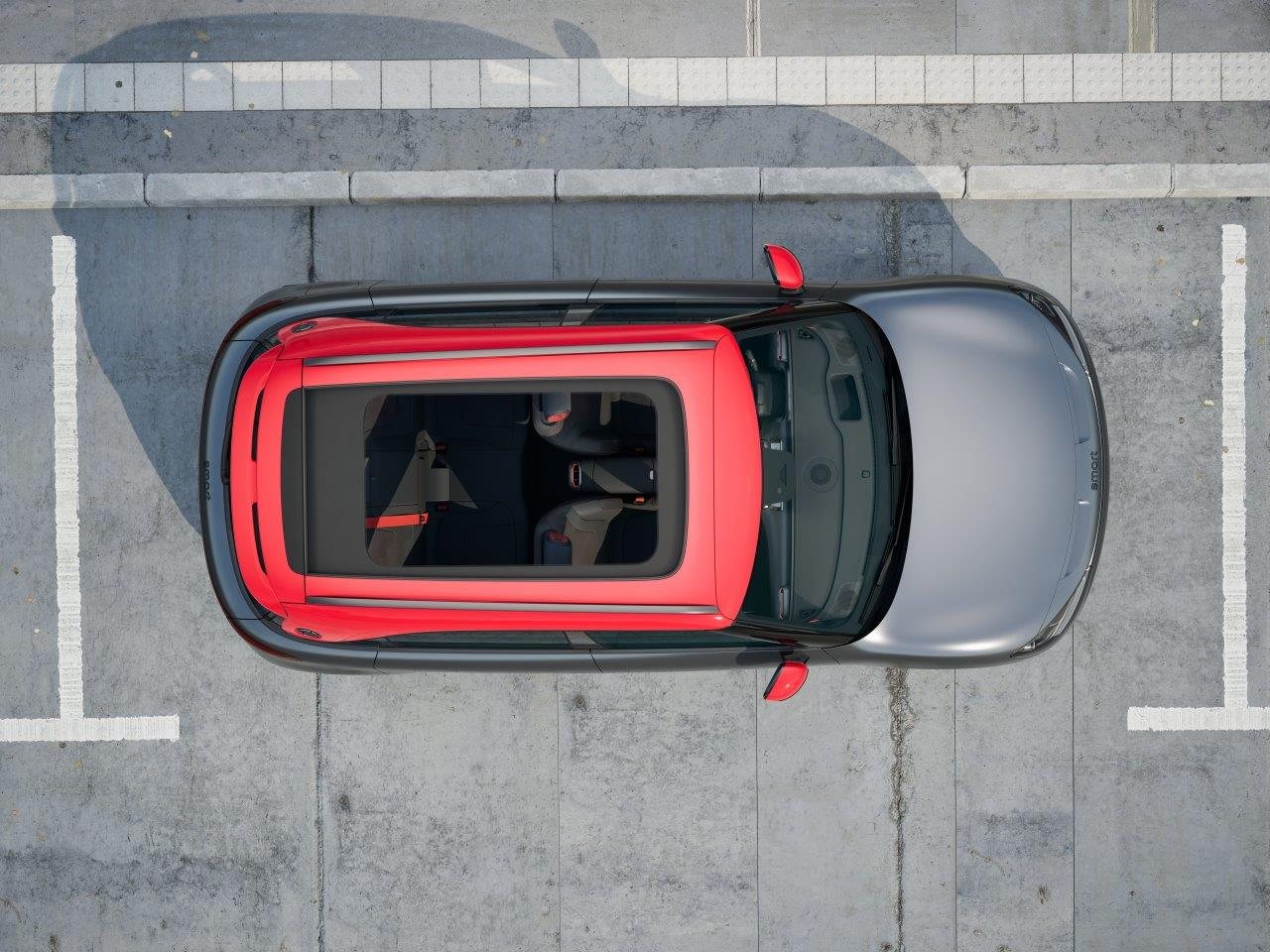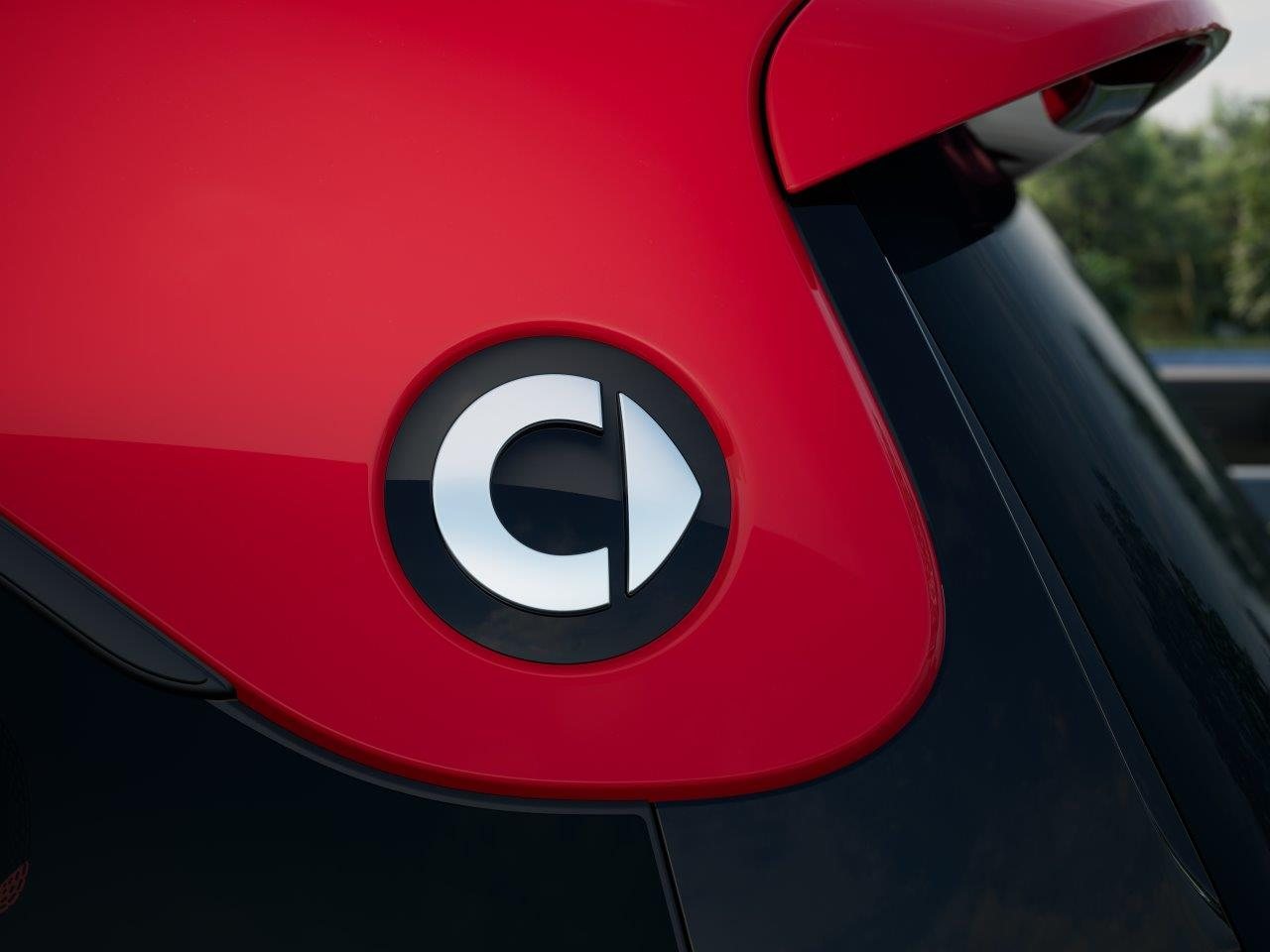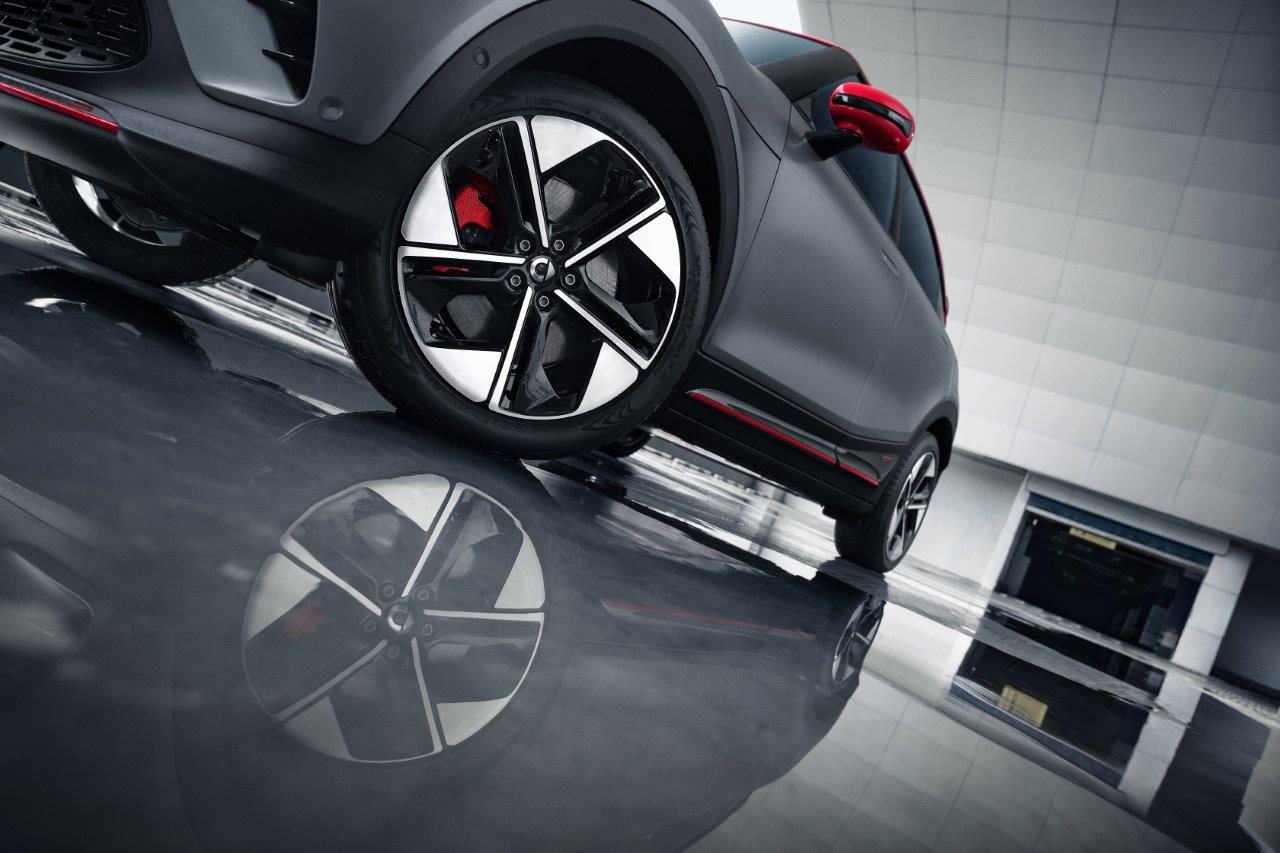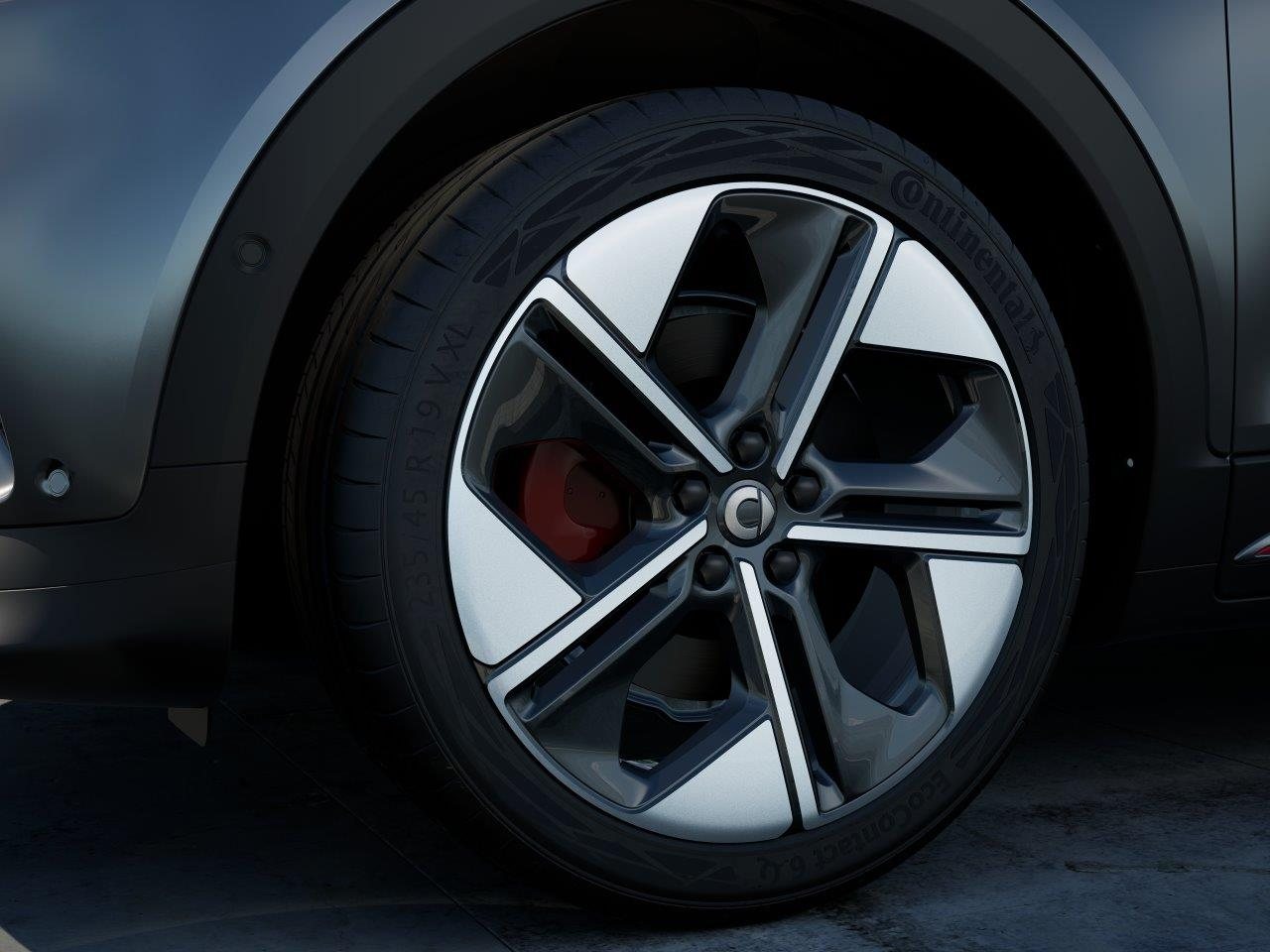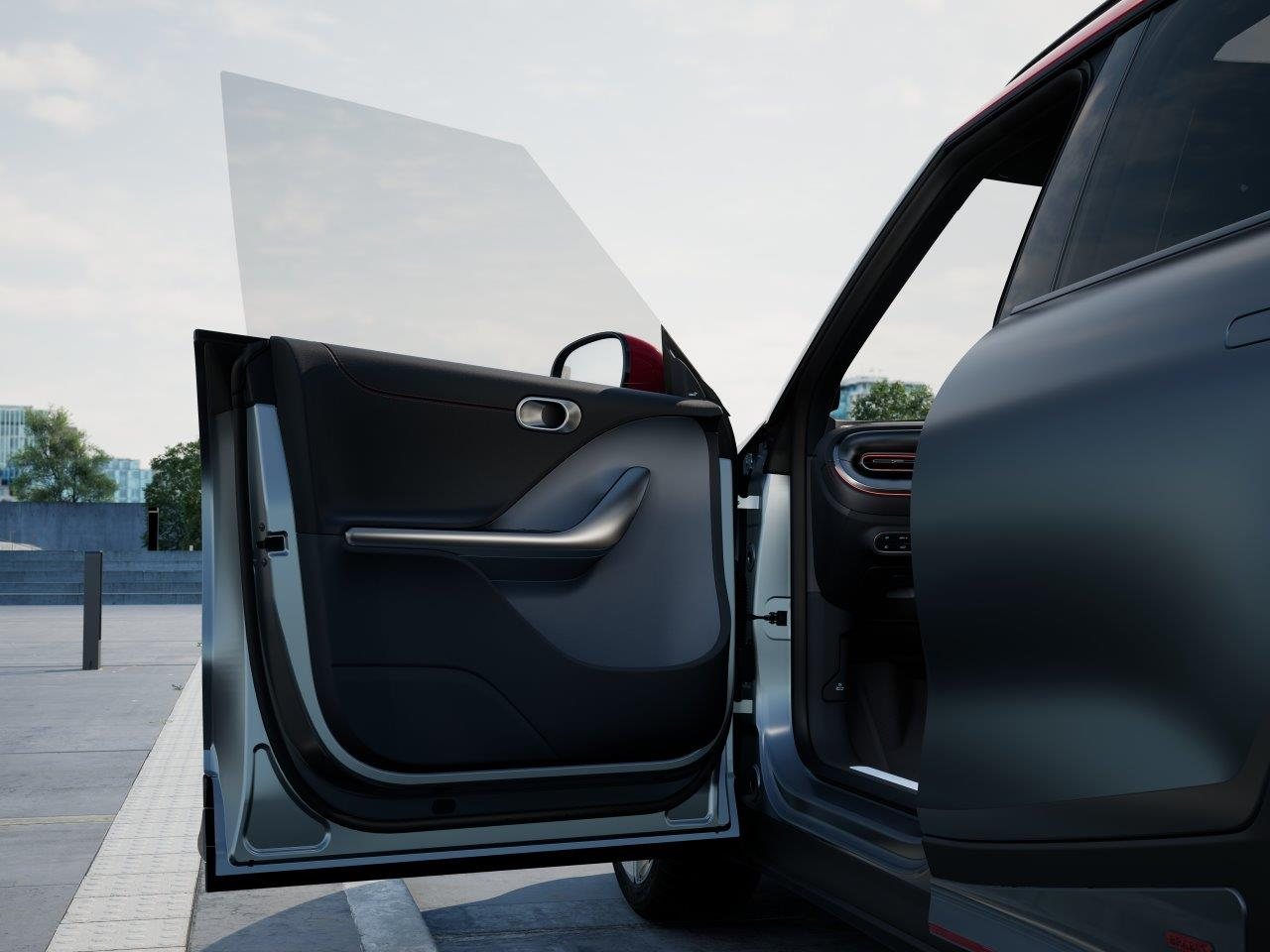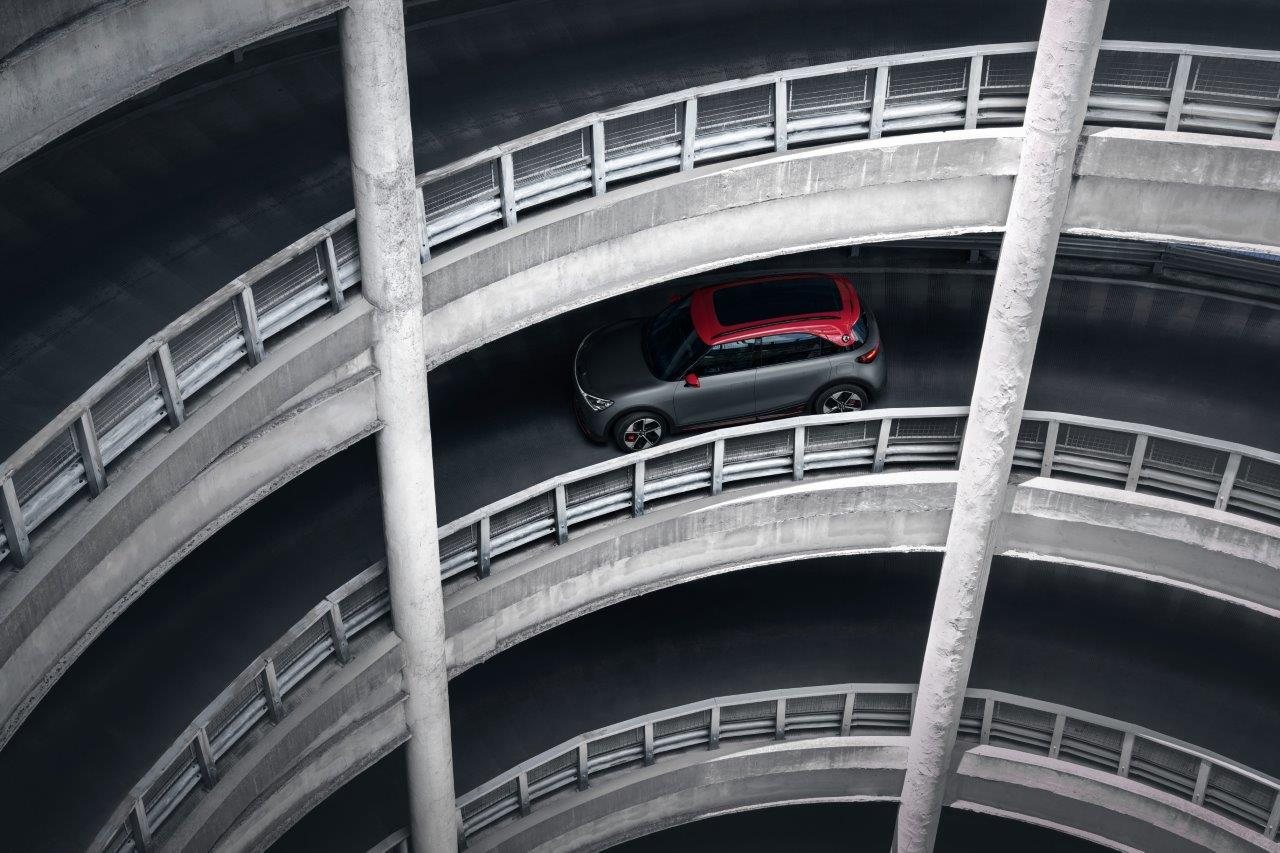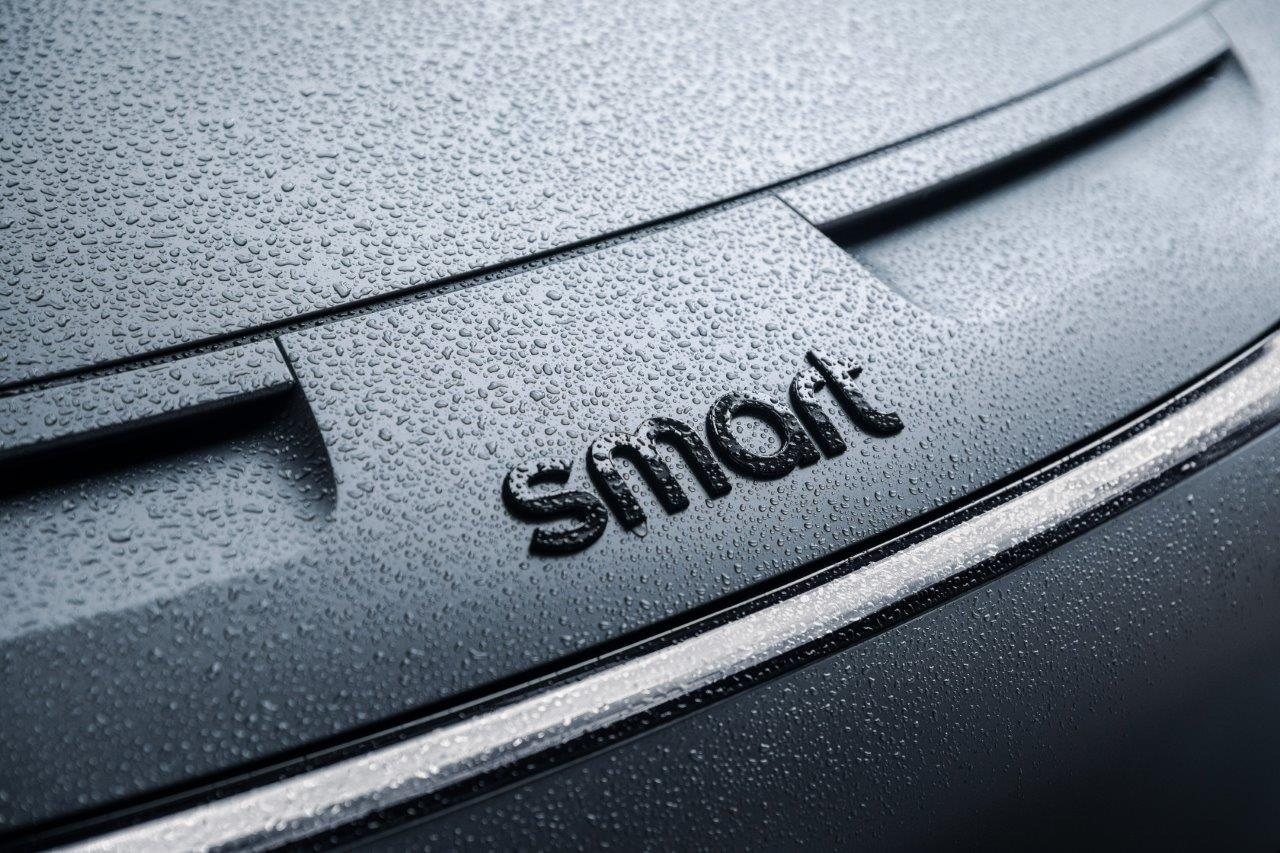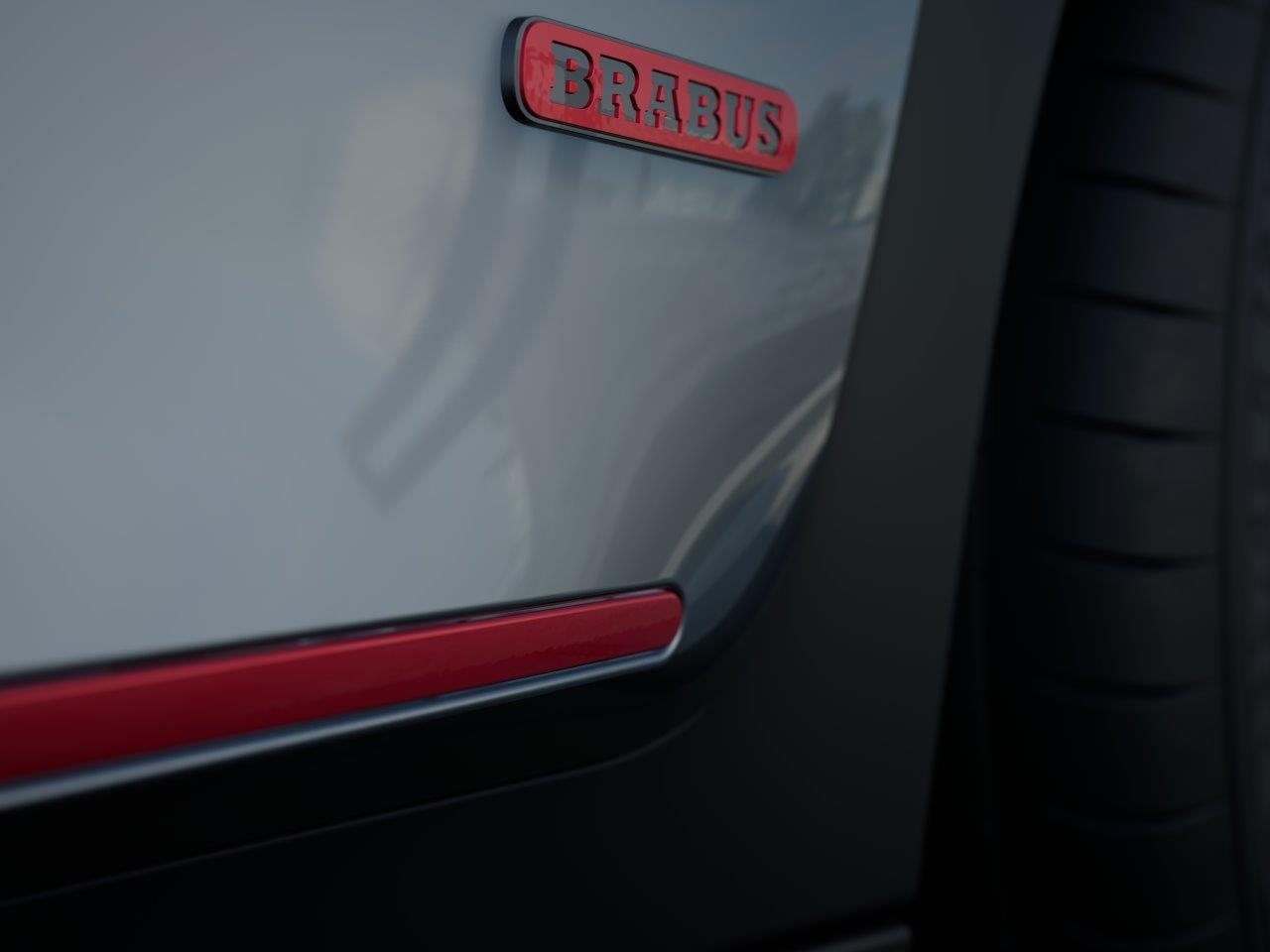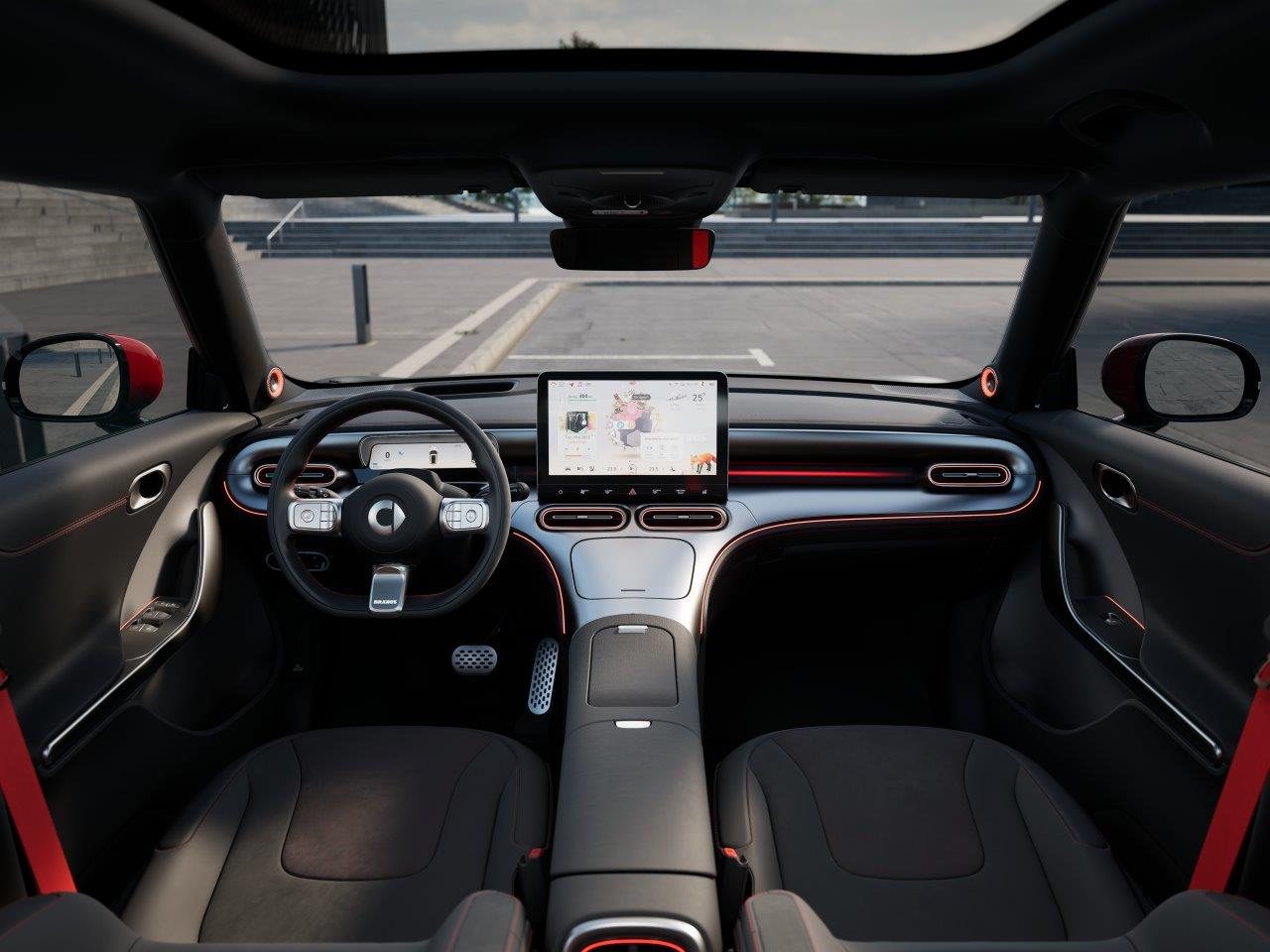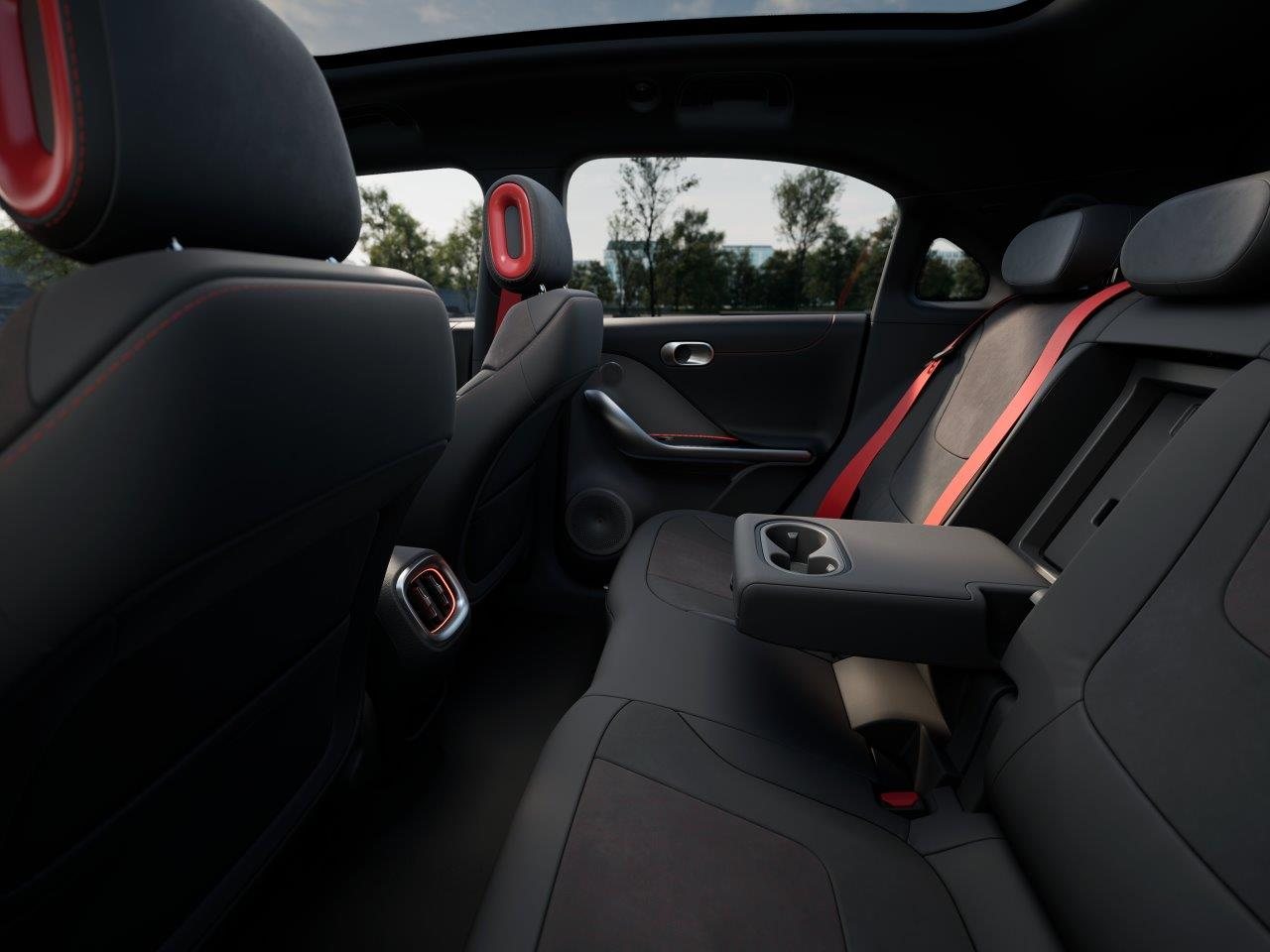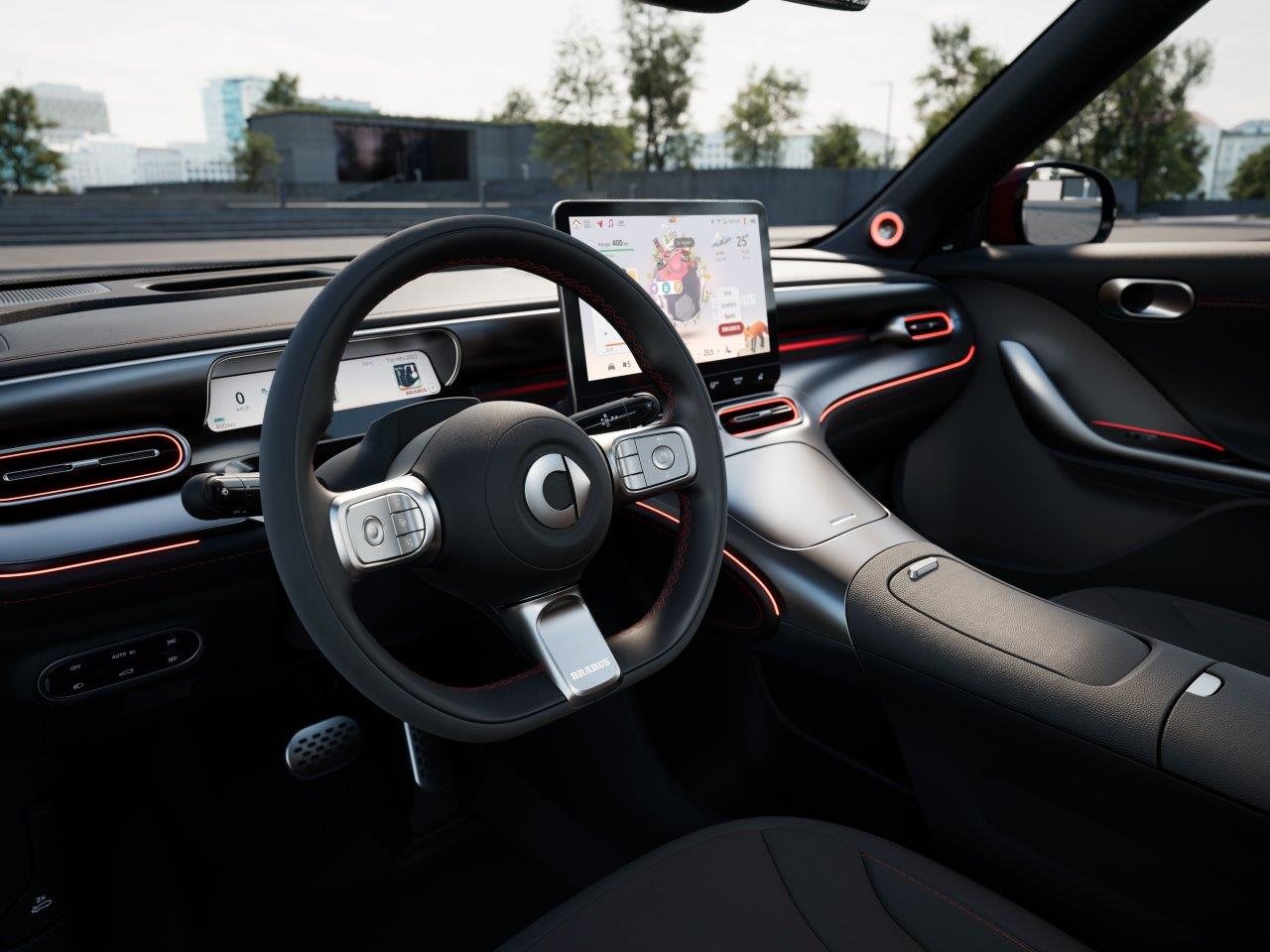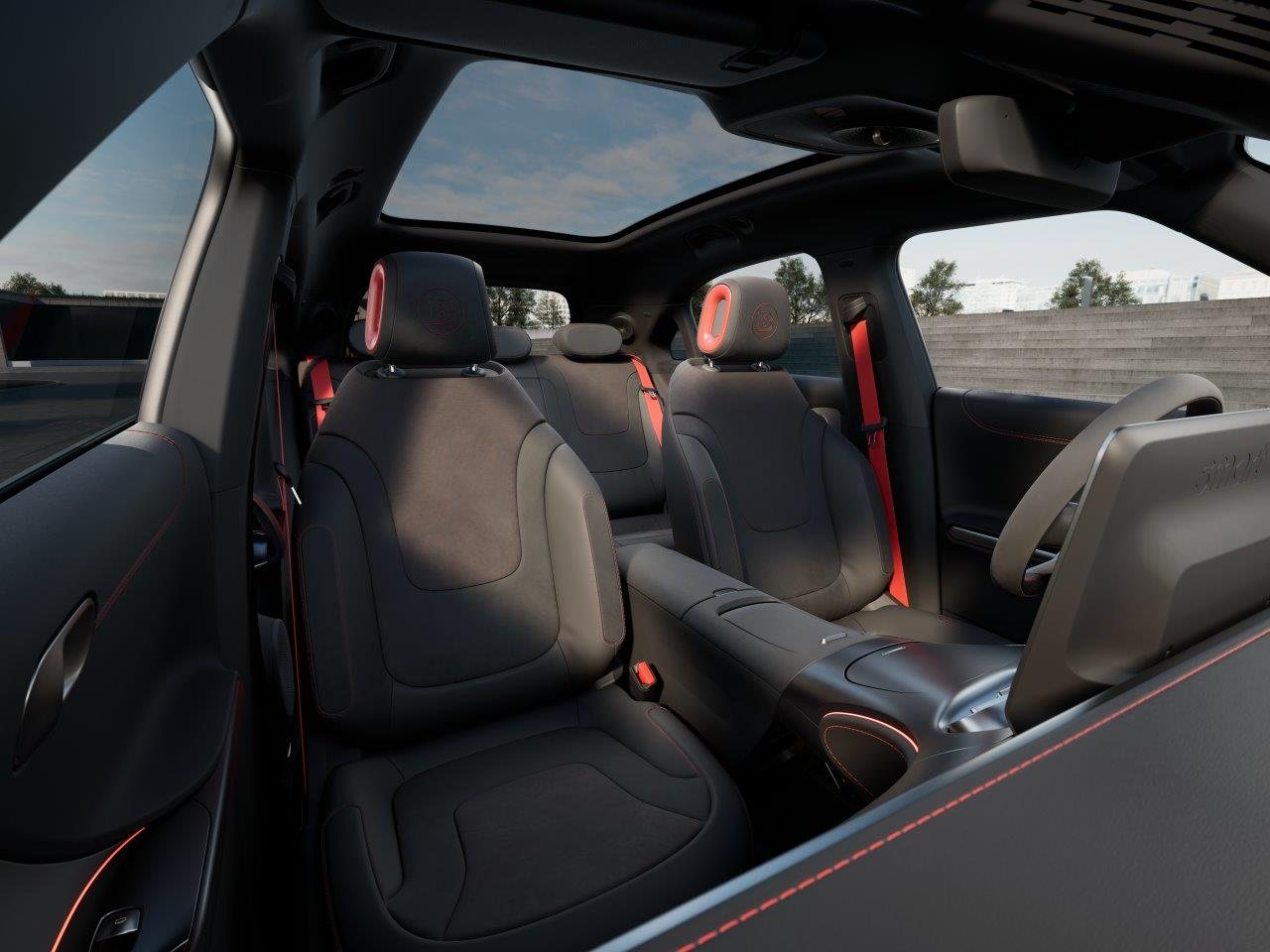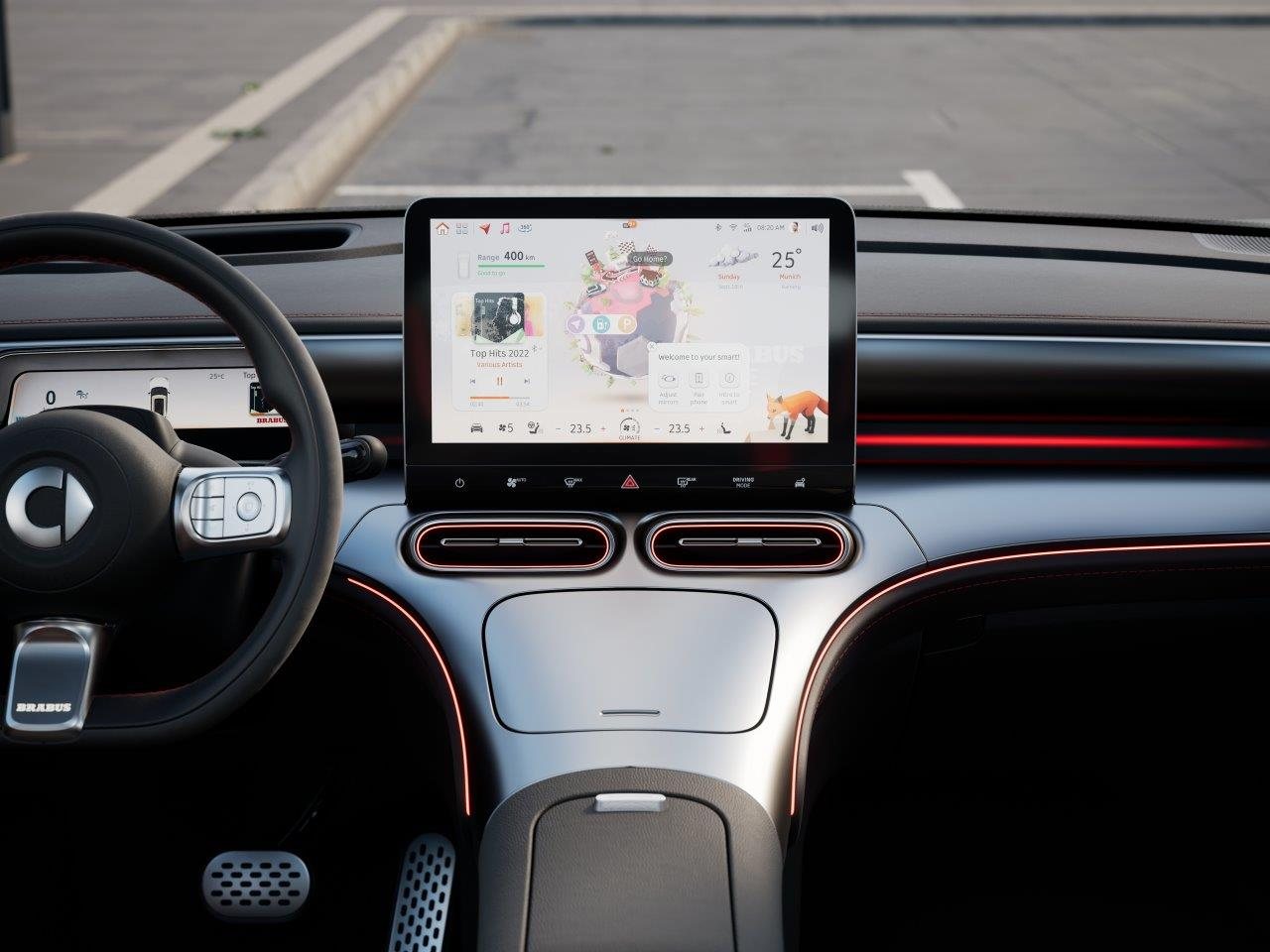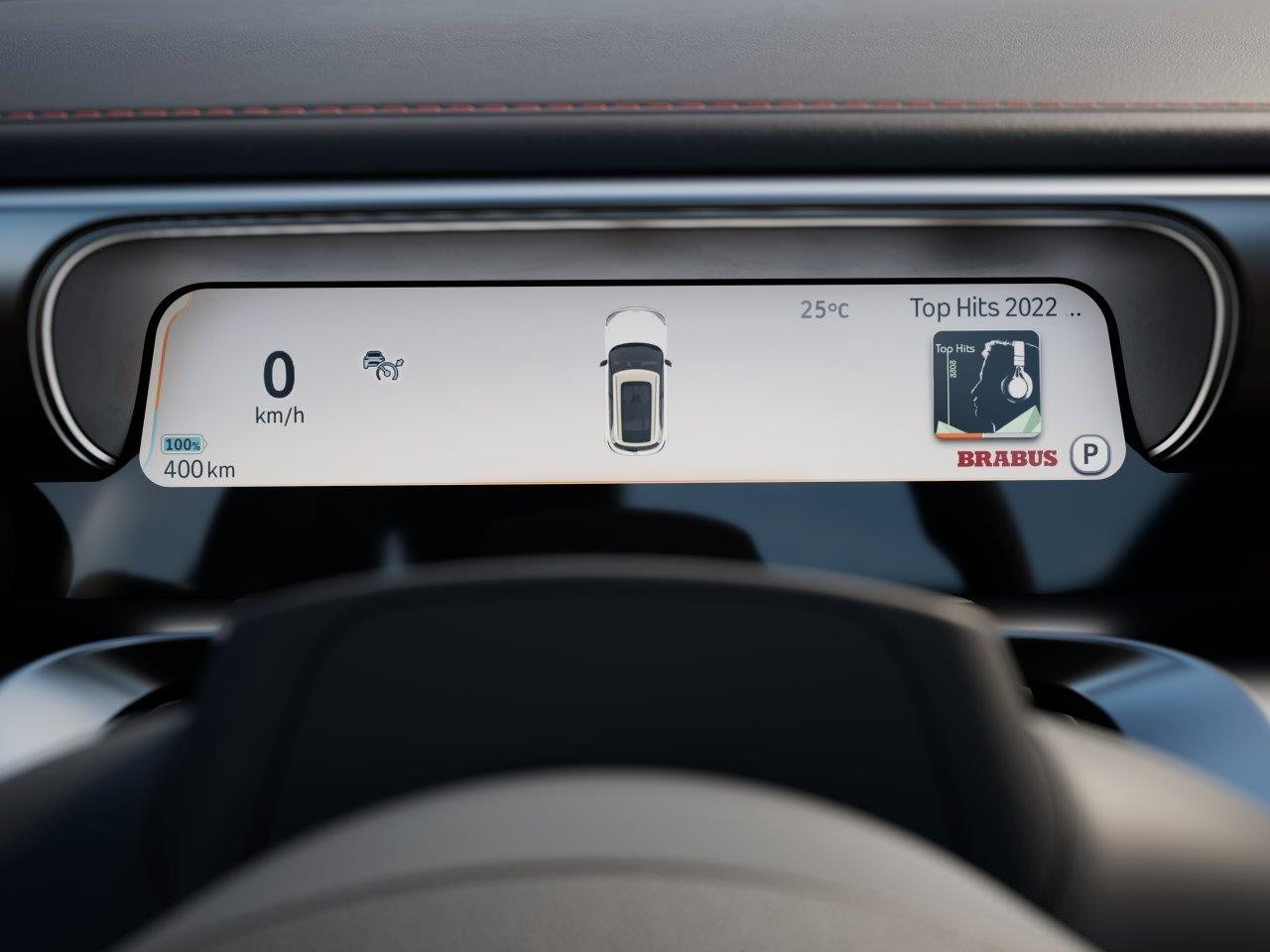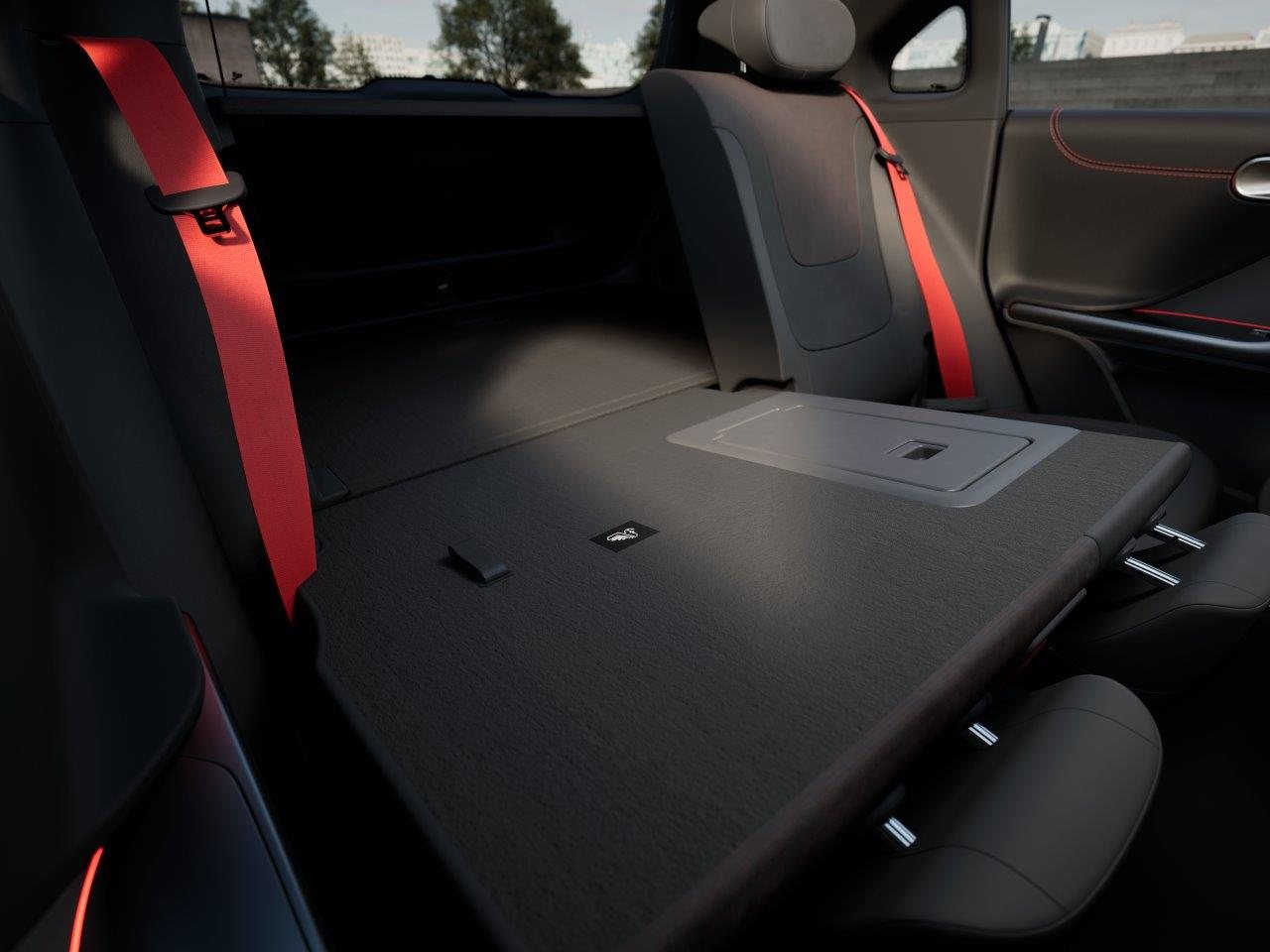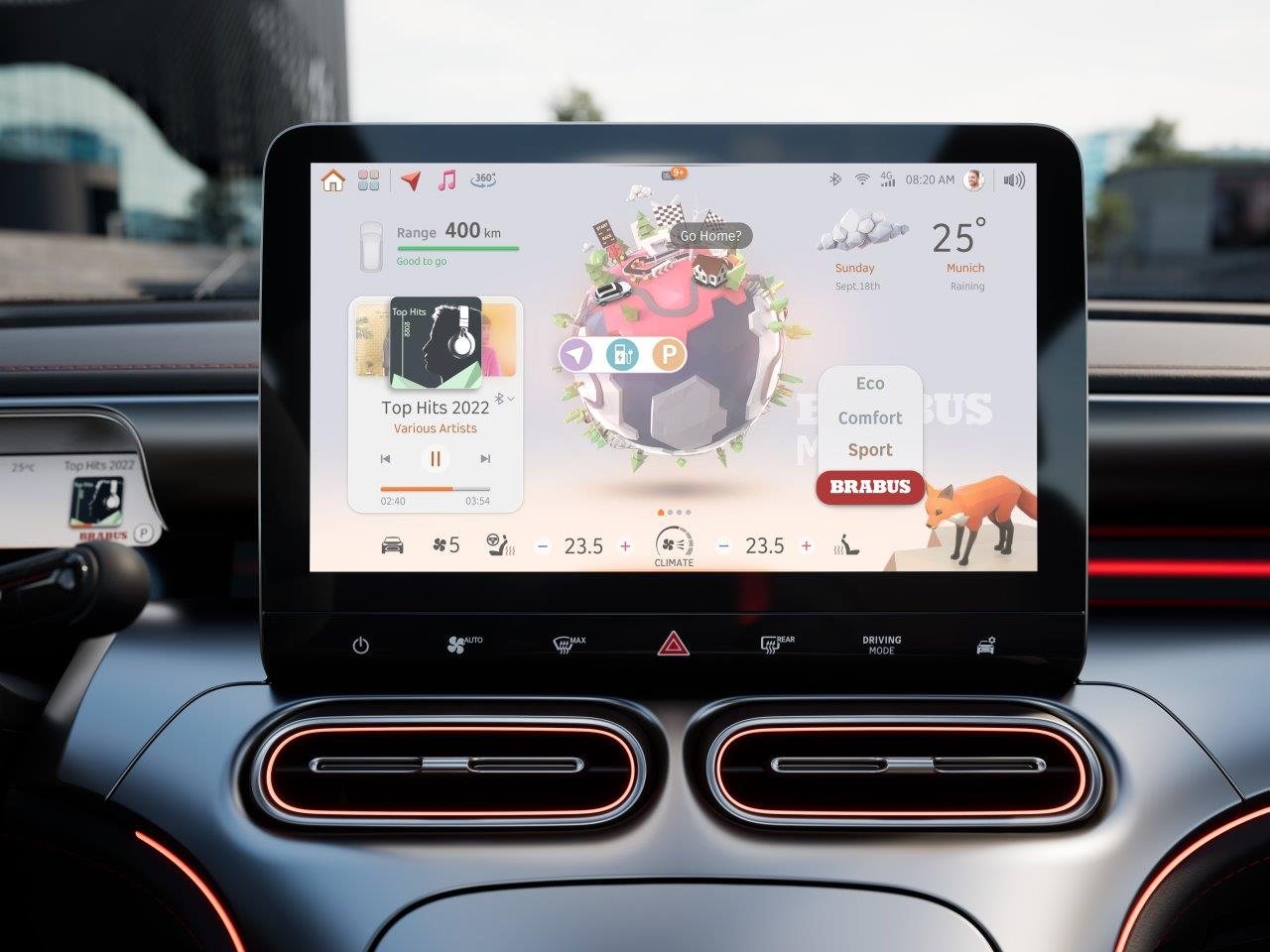If electric vehicles have brought some good surprises to the automotive industry, among them we have to include the new Smart #1 (read even “hashtag one”). The friendly brand, which in recent times lived from the marketing of a single urban electric car with two seats and 2.69 m in length, the EQ fortwo, with mechanics supplied by Renault with 82 hp powered by a 17.6 kWh battery, which needed 11.6 seconds to reach 100 km/h, and then limited to 130 km/h and a range of 132 km, it was replaced by a small SUV, also electric but with another potential to attract customers.
The new Smart #1, which is now 50% owned by Geely’s Chinese and not just Mercedes, is a completely different and much more evolved proposition. It begins by finally having a specific platform for electric vehicles, The #1 is not only Smart’s biggest and most powerful model, but also its first SUV and one of the fastest and most efficient in the segment, and is also offered at a competitive price.
Designed by Mercedes but produced by Geely
The Smart #1 was designed by Mercedesas can be seen from the design of the front and back, but everything else belongs to the other partner in the project, Geely, owned by China’s Li Shufu, who immediately went on to ensure production in China, from where it is exported to the rest of the world.. To embody Smart#1, the brand’s first SUV (or crossover) to replace previous city cars with this new philosophy, Smart used Geely’s SEA platform, designed from the ground up for battery-electric models. This makes it possible to optimize the dimensions, since the front end can be shorter, since it will never have to house a combustion engine and the bulky gearbox that goes with it, but it also ensures greater torsional rigidity and lower weight.
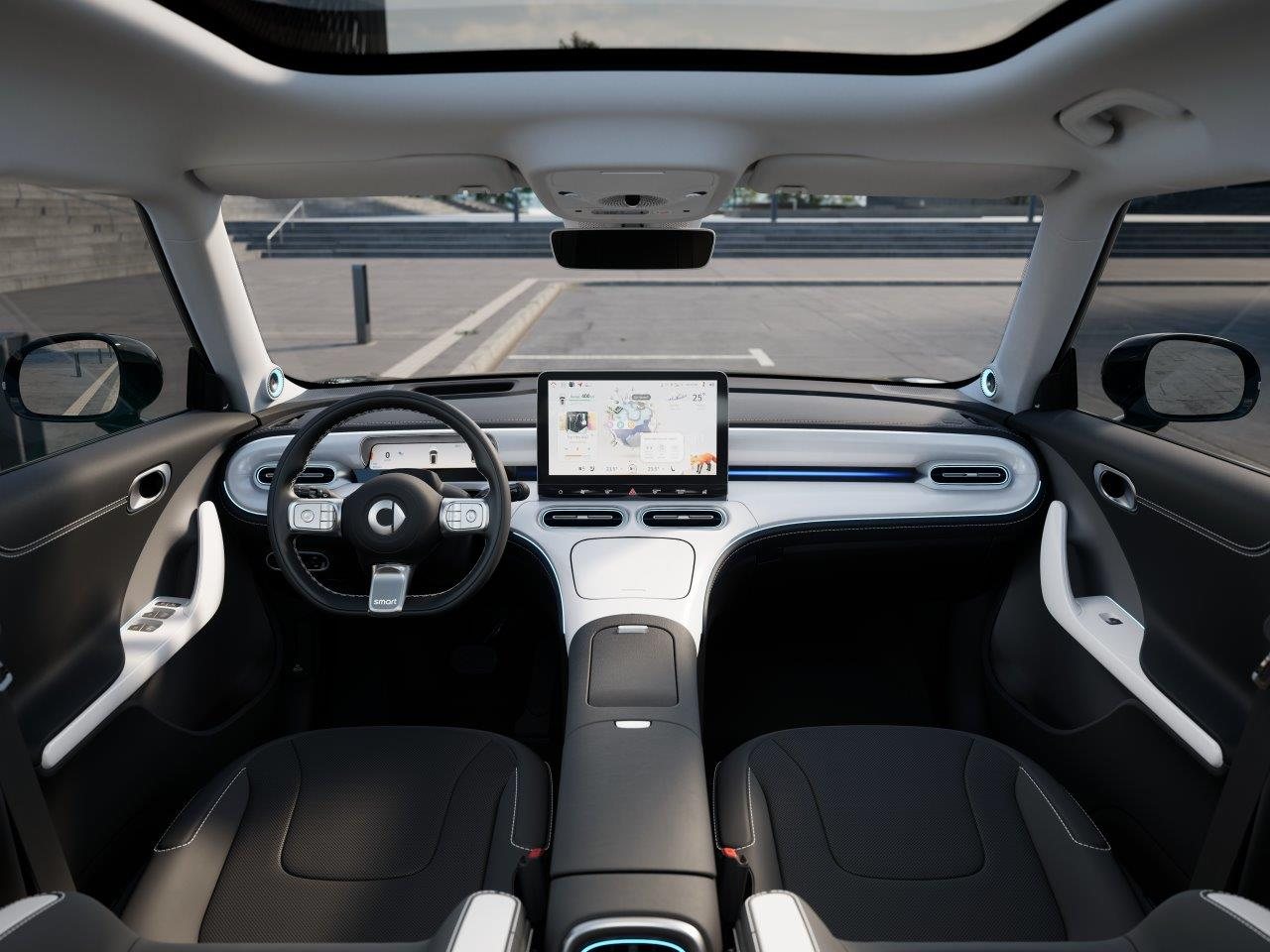
The #1 Premium is the best equipped of the Smart, with a modern and cheerful interior
At 4.27m long, 1,822m wide, 1,636m high and with a 2.75m wheelbase, the Smart #1 is assumed to be a lower than normal SUV so that aerodynamics do not harm itmeaning it will compete against a range of electric vehicles, from the Renault Mégane E-Tech Electric (slightly shorter and lower, at 4,199m, 1,768m, 1,505m and 2,685m) to the VW ID.3 (with the same length , but more equally shorter, at 4,261 m, 1,809 m, 1,568 m, and 2,771 m).
Customers may also consider the #1 as an alternative to the Volvo C40 Recharge and Mercedes EQA, especially since the latter can be considered a close relative, but as they do not yet use specific platforms for battery-powered models, we will focus solely on the proposals from VW and Renault, both with accumulators with capacities close to 60 kWh, the ID.3 with 204 hp and 58 kWh and the Mégane E-Tech with 218 hp and 60 kWh. Compared to them, the Smart with 272 hp and 62 kWh battery claims a weight of 1788 kg, similar to the Renault (1711 kg) and the VW (1813 kg).
Surprised by the materials, the software and the space
Climbing aboard the #1 is a simple operation, given the height of the seats and the model, with the frameless upper doors that give an air of grace when opened. There’s good room front and rear (the generous wheelbase helps), losing nothing to the best competitors, with the rear seat sliding lengthwise 12cm, leaving legroom for those sitting in the rear. or, alternatively, the volume of the trunk. This ranges from 273 to 313 litres, which isn’t a segment record, and there’s also a mini trunk up front, holding just 15 litres, that can accommodate a charging cable.
If the space pleases, the interior decoration is not far behind, with the painted plastics making a good match with the rest of the decoration. In the unit we were driving, with the Premium equipment level, the most sophisticated for the single-engine version (the other is the Pro+), the interior was red and white, in keeping with the youthful and sporty air of #1.
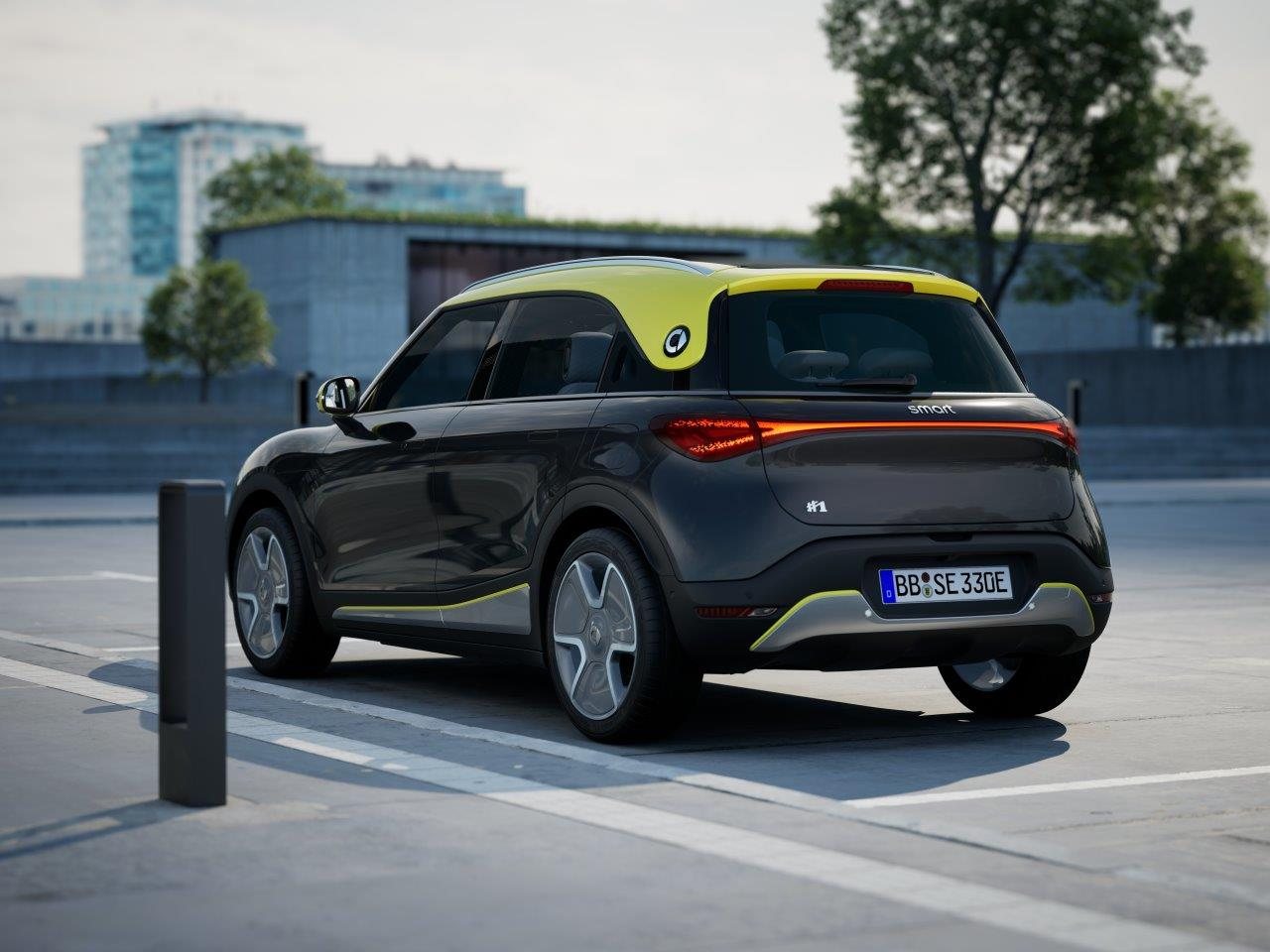
The Pro+ is the most affordable of the new Smarts, on sale for €40,950. Includes an acceptable level of standard equipment
The small instrument panel in front of the driver is functional and legible, with the central display allowing control of most of the compact SUV’s functions, providing direct access buttons to speed selection of what interests the driver. The interesting thing is that the system is easy to use and understandable, better than the one used by many European brands. And it already allows OTA (over the air) updates for all kinds of functions, having the advantage of having been designed by Geely, through its ECARX software company.that according to those responsible, we will also see in other brands of the Chinese Group, such as Polestar and Volvo.
#1 is the most powerful tram in the segment
One of the biggest surprises of Smart #1 is that it does not offer a less powerful version, being cheap and with greater autonomy. No batteries of 40 or 50 kWh, the norm in this segment, and much less engines of two hundred horsepower or less, to “extend” autonomy. The less powerful Smart has a single motor, installed on the rear axle, but it has an impressive 272 CV, which allows it to accelerate up to 180 km/h (to which it is limited), after passing 100 km/h in just 6.7 secondsvalues that give meaning to competition.
But if the customer wants access to the best that #1 has to offer, they can always choose sportier version, the Brabus, which mounts two electric motors, one per axle to guarantee total traction. At the rear the 272 hp and 343 Nm engine is still installed, while at the front there is now a 156 hp and 200 Nm unit, which throws the total power to the aforementioned 428 hp and a torque of 543 Nm.
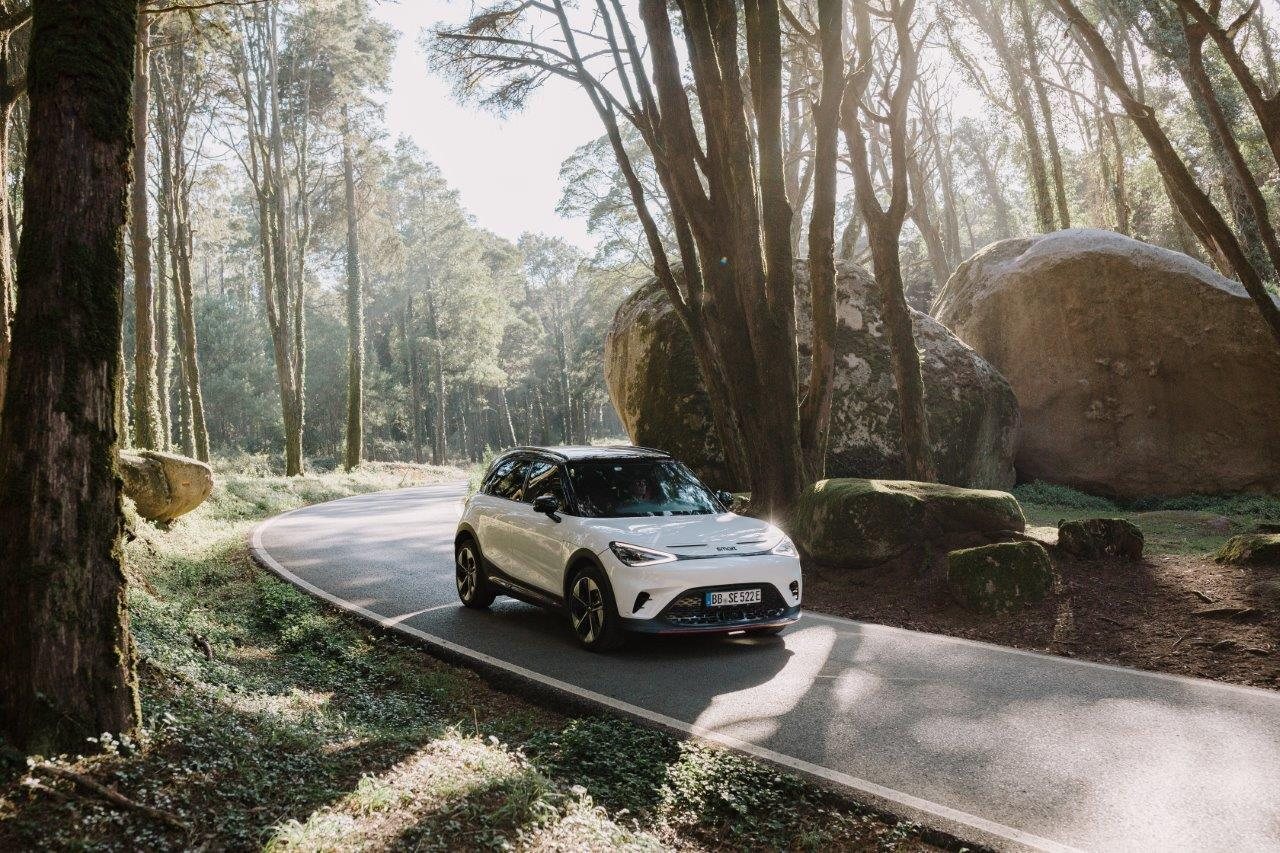
The Brabus, pictured here in the Cascais-Sintra region, is the only Smart with two engines, allowing it to deliver 428 hp and reach 100 km/h in just 3.9 seconds.
To power the mechanics, Smart uses a single battery pack with a capacity of 66 kWh (62 useful), which allows to travel 400 km according to the European WLTP method, if it is installed in the Brabus nº1, so that the autonomy increases up to 454 km if it is mounted in the rear-wheel drive version and 272 CV. To decrease the time required to recharge the battery, the #1 accepts powers of up to 150 kW in DC (which allows you to go from 10% to 80% in 30 minutes) and 22 kW in AC. Another of the strengths of the new Smart, in which the model outperforms the competition, is related to its ability to tow trailers weighing 1600kg if equipped with brakes.
Fun to drive but comfortable.
We drive the new Smart on the outskirts of Lisbon, a Premium #1 white on the outside and red and white on the inside. We started by driving around the city where we managed to consume 16.7 kWh/100 km in a 52 km journey, during which we find that the Smart SUV is, above all, concerned with the level of comfort it provides to those on board. Equally positive is the absence of parasitic noise, even on the bumpiest streets of the capital, which confirms the greater torsional stiffness of electric vehicles, which in this case is also a sign of careful construction.
After the city came the highway, with #1 demanding 20.6 kWh/100 km, at a speed of 120 km/h. This phase of the test allowed us to test the ADAS of #1, the driving assistance systems, especially the Smart Pilot Assist, which allowed driving in a more relaxed way while the SUV stayed in its lane. In general, we reached an average of 18.8 kWh/100 km, which is not one of the lowest values, it is among the best, especially if we take into account the power of the engine, which constantly challenged us to accelerate more than expected. due. be. required
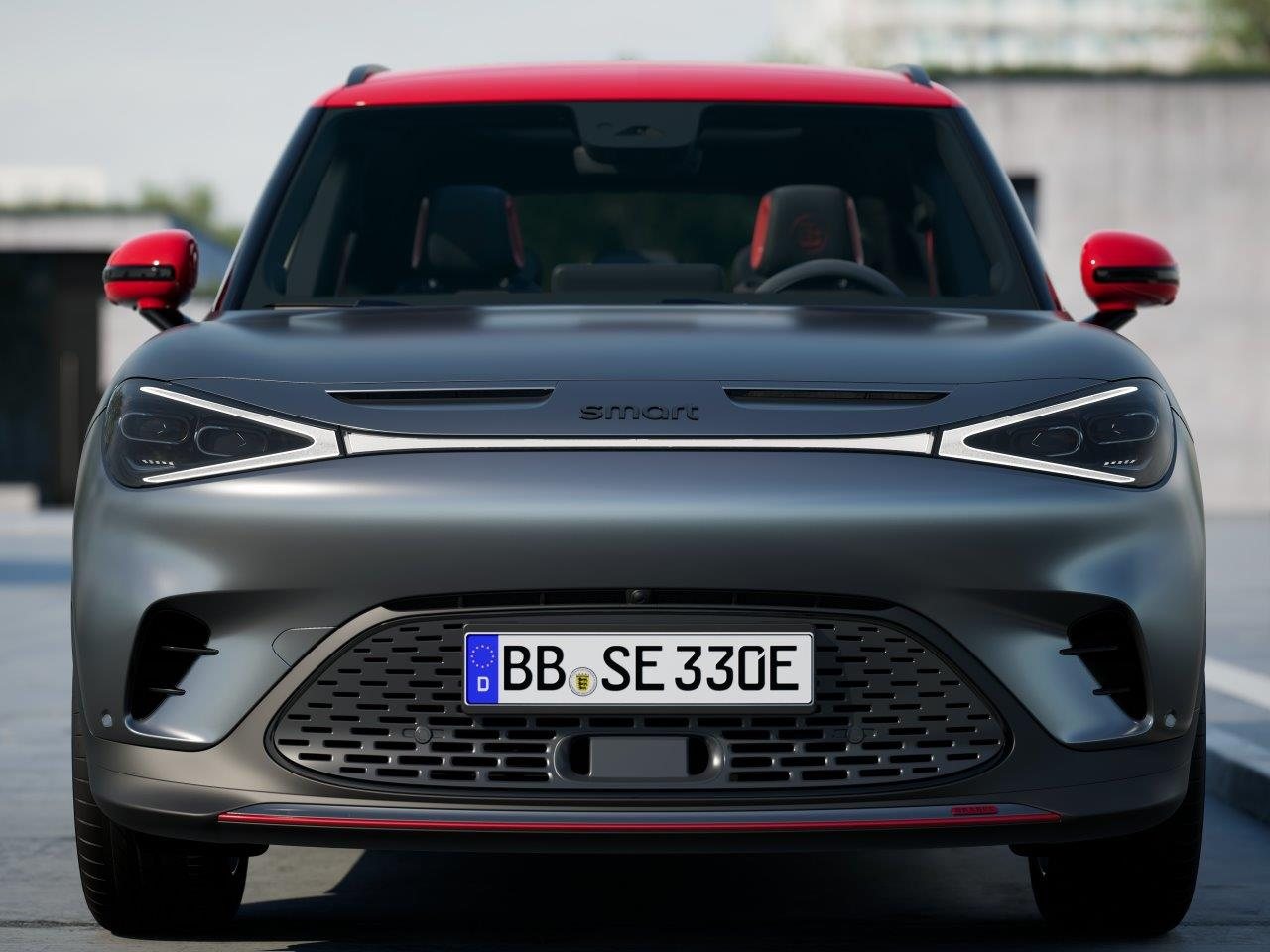
The Brabus, as the most affordable and powerful electric sports car in this segment, will do wonders for Smart
In a more sinuous route, “our” Smart showed a balanced and efficient behavior, without being sporty and again with comfort in the lead. Exploiting the thrilling ability to accelerate, the #1 devours the straights and turns with ease, with the rear engine causing some loss of grip to liven up the ride.which was easily controlled by the traction control.
If the normal version of #1 is limited to a top speed of 180 km/h, but is capable of going from 0 to 100 km/h in 6.7 seconds, the Brabus #1 takes advantage of 428 hp to overcome this bar in 3.9 seconds. This means that the Smart is not only the fastest tram in the C-segment, but also outperforms flagship sports cars in the higher segment. like the Porsche 911 4S (4.2 sec) or, among the electric ones, the Ford Mustang Mach-E GT (4.4 sec). Even among the Teslas, traditionally considered very fast, the Brabus #1 that exceeds the threshold of 100 km/h in 3.9 seconds, placing itself between the Model 3 Long Range (4.4 sec) and the Model 3 Performance (3 .3 sec).
Prices from €40,950
According to those responsible for Smart, after the first (and few) units of the Limited Edition arrive on our market, proposed for €45,750, the so-called normal versions of Smart #1 will begin to arrive in Portugal from May, around a month later than originally planned. The #1 Pro+, the most affordable, requires an investment of €40,950, being the only one that does not mount a heat pump in the cooling and heating system, which makes it 20 km less efficient in terms of autonomywhich does not prevent it from already offering an interesting level of equipment.
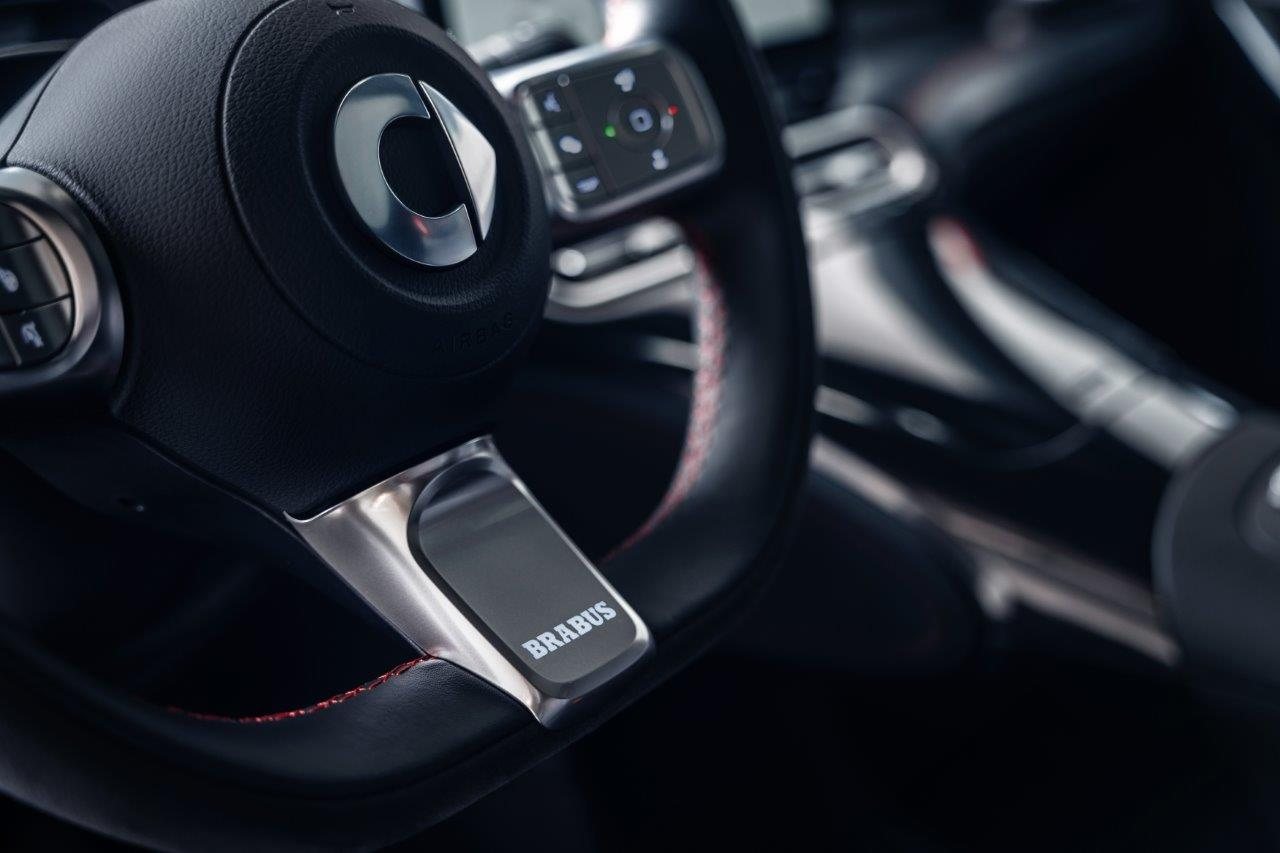
A 272-hp engine at the rear and a 156-hp engine at the front make the Brabus #1 a toy for thrill-seekers.
It is also expected that the #1 Premium will arrive in May, this being the most sophisticated and equipped version, which will mean an additional cost of €3,500 (total €44,450).. The last to arrive on the Portuguese market will be the Brabus, but not much later than its rear-wheel-only “brothers”. Offered at €48,450, the sportiest of Smarts promises to rock the boat and captivate those looking for a fast and exciting tram. but still relatively affordable.
Source: Observadora
